Advertisement

15 Must See World War II Sites in Europe
- Share Content on Facebook
- Share Content via Email
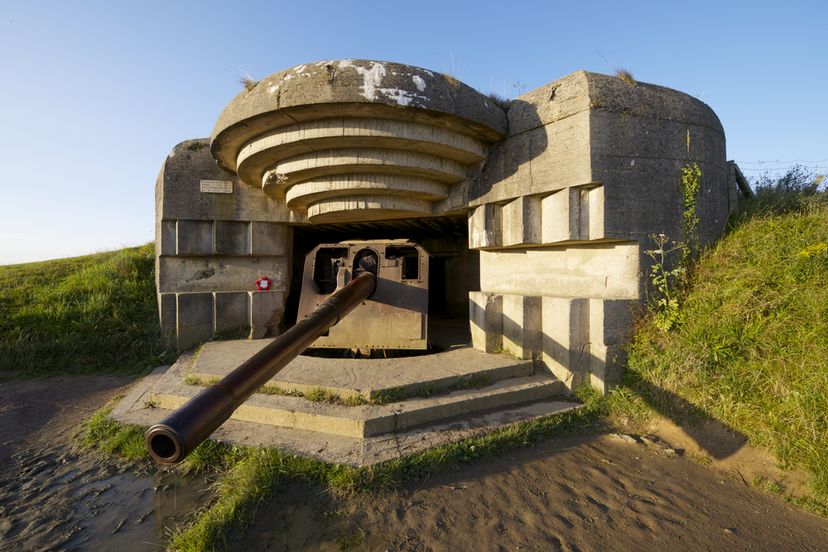
For those who are constantly glued to the World War II documentaries on the History Channel and have read countless books and articles about Allied tactics and strategic movements on the European fronts, a visit to Europe is the next step in your historical education. Personally seeing and physically standing on the many sites that were significant to that time will provide an unparalleled perspective and insight into the facts you already know about the war, as well as offer new information that is sometimes hard to come by from secondary sources. So for all the history buffs out there, here are 15 sites significant to the Second World War that, ranging from inspirational to overwhelming, are worth visiting in Europe:
15. Sachsenhausen Concentration Camp, Germany
This work camp just outside of Berlin is found about three km from the location of the first ever Nazi concentration camp known as Oranienburg (now destroyed). The camp became the center of Nazi operations and is now a museum detailing the life of the inhabitants, both officers and detainees in a number of exhibits. Visitors can also see the special exhibition dedicated to the Oranienburg camp found in the museum’s permanent exhibit, and walk the ground of the camp for an incomparable lesson in the severity of the Nazi aggression.
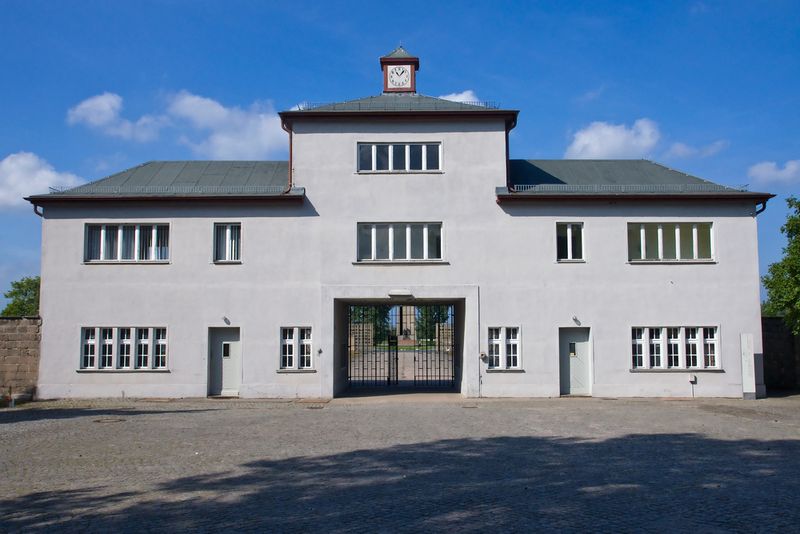
14. Arnhem Bridge, Netherlands
This bridge became well known after the strategic operation known as Operation Market Garden, whereby the Arnhem Bridge was the last in a string of strategic points targeted for takeover by the Allied forces. Successful up until that point, the Allies were unable to capture the bridge in the September 1944 Battle of Arnhem, an event that later became the subject of several books and the Hollywood film “A Bridge Too Far.” Surviving the September battle, the bridge was destroyed by Allied troops in October of the same year to help curb the transport of German supplies. In 1949 the bridge was rebuilt in the same style, and in 1977, renamed “The John Frostburg” in honor of the British commander that defended it in the September battle.
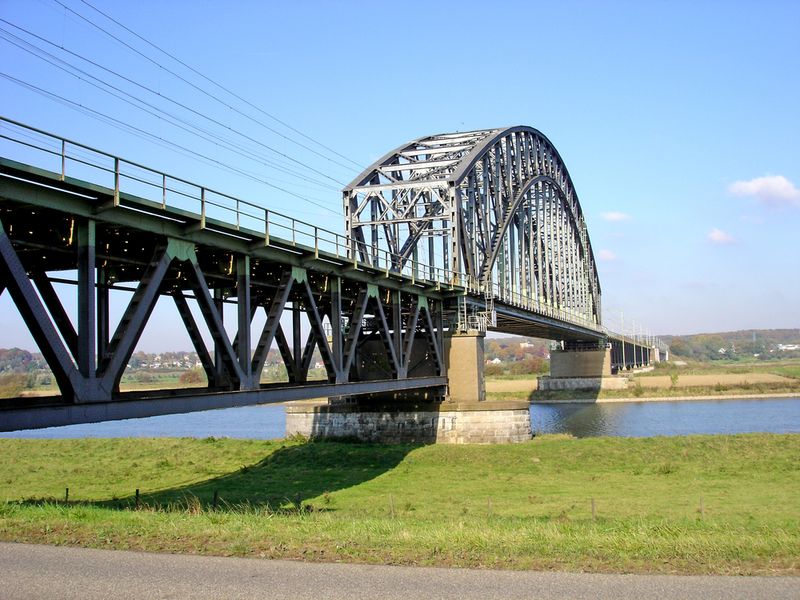
13. Oskar Schindler’s Enamel Factory, Krakow, Poland
As many who have read the Thomas Keneally’s novel “Schindler’s List” or seen the Spielberg movie of the same name know, Oskar Schindler was a Nazi Party member who saved hundreds of Jewish lives through political bribery and Jewish employment at his enamel and munitions factories. The administrative building of the enamel factory still stands today, and houses the Krakow Museum of Contemporary Art, as well as the Historical Museum of the City of Krakow, which is mainly devoted to the Party member and the lives of “his Jews.” This museum is must-see for anyone who wants to learn more about the life of a man now largely regarded as a hero.

12. Humboldthain Flak Tower, Germany
Originally constructed as a solution to air-strike vulnerability, German Flak Towers were domineering concrete complexes that sheltered anti-aircraft guns and protected ammunition from falling bombs. The towers operated in pairs, one a gun tower (Gefechsturm or G tower) and the other a command tower (Leitturn or L tower). Their heavily reinforced structure also served as bomb shelters for civilians as well as an extremely effective defensive center, with a radar dish that could detect bombers from over 50 miles away, eight 128-mm cannons with a firing capacity of 48 shells per minute and a number of other smaller cannons scattered around the tower. Many of the towers have since been destroyed or converted, but the one remaining in Berlin is open to visitors.
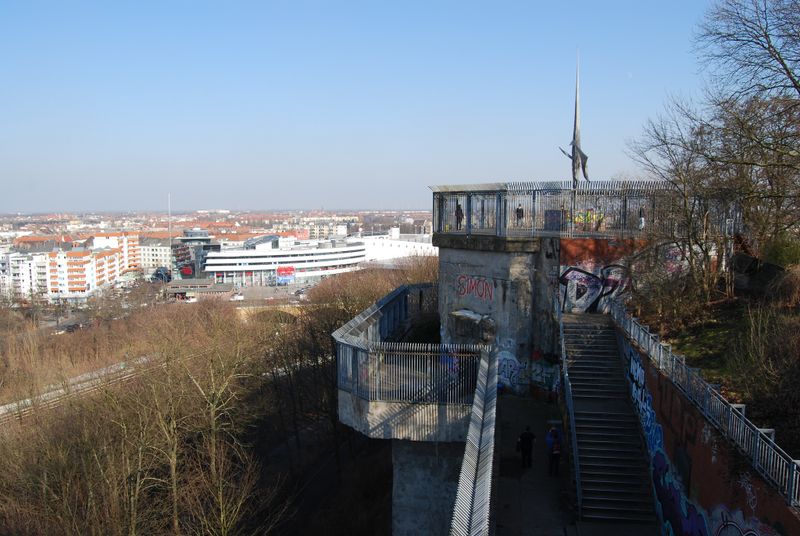
11. Vel D’Hiv Monument, France
Though the actual building of the Velodrome d’Hiver (indoor cycling track) was destroyed and replaced by government buildings, visitors can still stand on the spot, commemorated by a plaque, where in July of 1942, Jewish families in France were rounded up by the French police and forcibly herded into the Velodrome. It is there that over 13,000 citizens waited in deplorable conditions (without food, water or washroom facilities) for days before being dispersed among various concentration camps. A memorial to the victims was erected in the city in 1993, with the French Government issuing a public apology at a memorial service at the site in 1995.

10. Oradour-Sur-Glane, France
This small village in western France is memorialized as the site of one of the largest Nazi massacres on French soil. On June 10, 1944 SS officers stormed the village and killed the vast majority of residents, some 642 men, women and children, before largely destroying the area. Though officially rebuilt a few km north, the French government ordered the original site to be untouched and to stand testament to the horrors committed there. Visitors can walk through the ruins of the ghost town and pay their respects at the onsite memorial.
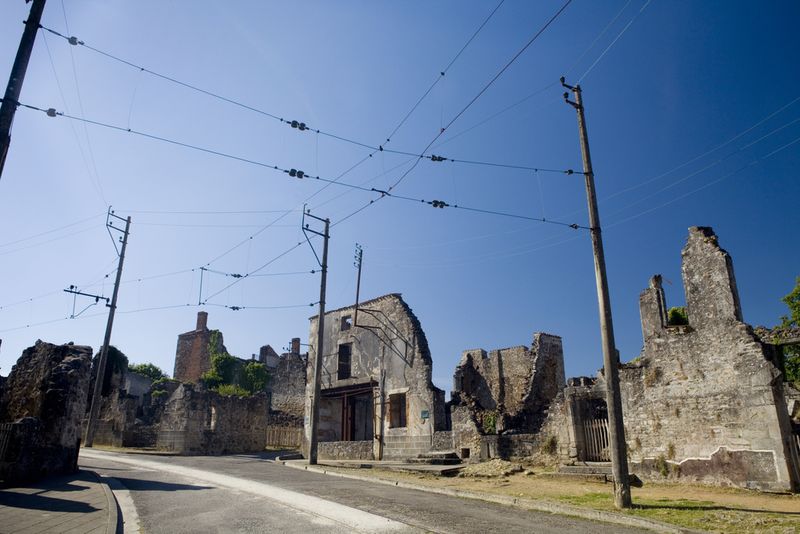
9. Umschlagplatz, Warsaw, Poland
During German occupation, the German-named Umschlagplatz (“reloading point”) was the Square in Warsaw used to round up Polish Jews and organize their deportation from the Ghetto to the Treblinka concentration camp. People waited in hordes for hours until enough detainees were rounded up to fill the train cars, with any signs of resistance resulting in instant death. Today, the site of the former Square is home to a memorial constructed in the image of train cars, erected to pay tribute to the countless lives doomed (and lost) on these very premises.

8. Warsaw Ghetto, Poland
In the beautiful Polish city of Warsaw, there still stands a testament to the largest and deadliest Nazi-created Ghetto in Europe. By the deadline of October 15, 1940, the city’s large Jewish population was forcibly required to move into an 18 km area which enclosed 73 of the city’s 1800 streets, and was divided into the “small” and “large” ghettos linked by a wooden bridge. At highest capacity, the Ghetto housed about 380,000 people, translating to about eight residents per room. Today, the site is commemorated by “The Footbridge of Memory” which denotes the location of the original bridge between the two Ghettos, several monument and memorials. The area also still contains chunks of the original separating wall as well as decrepit residential buildings which have stood untouched for the past seven decades.

7. The Wolf’s Lair, Poland
This major complex hidden among a dense Masurian forest was Hitler’s first headquarters on the Eastern Front, and became his most frequently inhabited hideout (he spent about half the war here). Originally built for the impending invasion of the Soviet Union, the property became a sort of small town consisting of shelters, barracks, two airfields as well as a power and rail station. Despite being heavily reinforced and highly secure, this was also the site of the infamous July 1944 assassination attempt of Hitler by Claus Von Stauffenberg. The premises were vacated and destroyed by German officials in January of 1945 and remained untouched by the Polish Government until the fall of Communism. Today, the site is in ruins but has become a popular tourist attraction with a handful of hotels and restaurants now available in the remote area.

6. Bletchley Park, England
Featured in the film “The Imitation Game,” Bletchley Park in Buckinghamshire was Britain’s central site for code breaking during the Second World War. As the location of the Government Code and Cypher School (GC&CS), it became the largest and most successful institution in penetrating secret Axis communications, most famously of the German Enigma and Lorenz ciphers. Analysis now suggests that the efforts conducted on these premises shortened the war by about 2 years, and the school is now an educational and historic attraction commemorating the accomplishments of the institution.

5. Fuhrerbunker, Berlin
Now largely destroyed, this bunker was located under the former Reich Chancellery building in the heart of the city, and is the site where Hitler spent the last few weeks of the war, married Eva Braun and committed suicide in April of 1945. Located 11.5 feet below ground level, the bunker was a system of 30 small rooms protected by 13 foot thick concrete walls with an exit point in the Reich Chancellery gardens. Today, the site looks inconspicuous enough as a quiet residential neighborhood, and is largely unmarked save the small plaque and information board that denotes the location and provides a schematic diagram of the bunker.
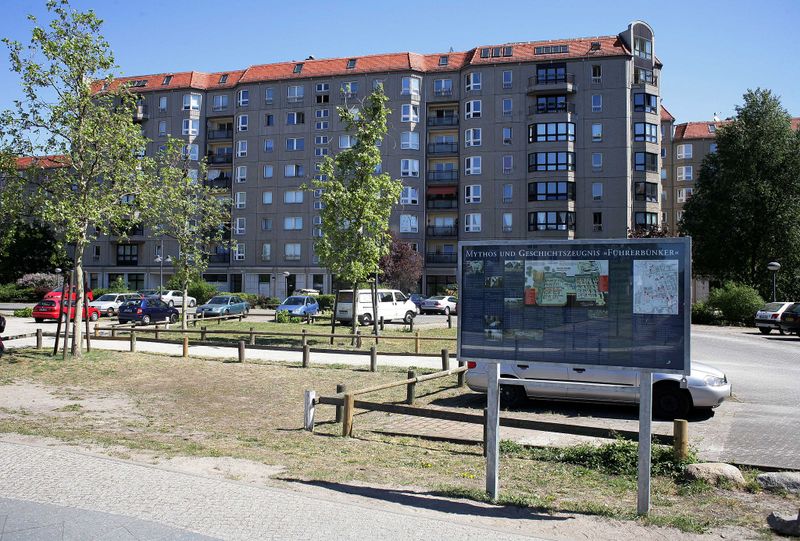
4. Cabinet War Rooms, England
Partially restored and opened as a museum to the public in 1985, the Cabinet War Rooms were originally a secret complex under the basement of the Treasury. The bomb blitz of December 1940 forced the complex to be reinforced as a bomb bunker, becoming the main strategic headquarters for the War Cabinet (consisting of Prime Minister Churchill and several Conservative and Labor Party ministers). Today visitors can descend below the streets of Westminster and check out the various rooms of the complex as they would have existed during the war, and of especial significance, the Map Room, which remains exactly as it was when the premises were closed and vacated in August of 1945.
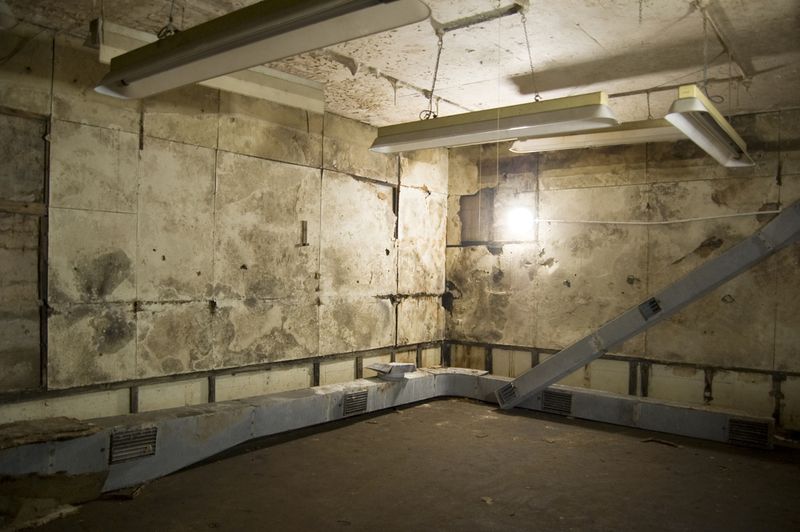
3. Auschwitz- Birkenau, Poland
Originally built in 1940 as a detention center for political prisoners, Auschwitz-Birkenau became the Nazi’s most gruesome legacy—the largest death camp and the primary site for the “Final Solution.” Located on the site of a former military base just outside of Krakow, Poland, the complex was regarded as the ideal location to carry out Nazi atrocities because of its proximity to the rail lines used to transport prisoners. Liberated on January 27, 1945 by the Soviet Army, estimates suggest that upwards of 1.1 million deaths were carried out on the property. Today, Auschwitz is a harrowing museum complex not for the faint of heart. While undeniably an important site to see, visitors are urged to check out the museum website ( http://visit.auschwitz.org/ ) to familiarize themselves with the rules, entry pass guidelines and capacity restrictions before their visit.
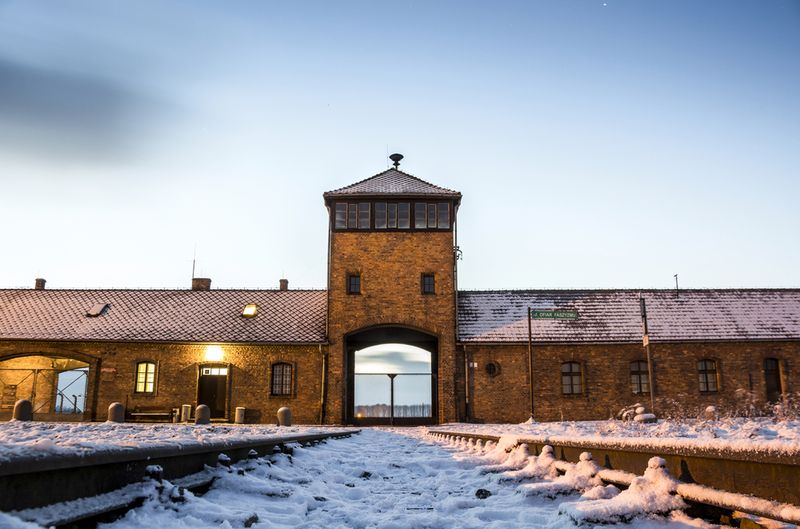
2. Musee de la Reddition, France
This red brick schoolhouse just northwest of the Reims train station is the historic site where, in the early morning of May 7, 1945 high officers from the German army met with officers of the Allied forces and signed the declaration of unconditional surrender, ending the second world war in Europe. Now known as the Lycee Roosevelt, the property was being used as the headquarters of Supreme Allied Commander in Europe, General Dwight D. Eisenhower, and the room where the signature took place, the map room, remains perfectly preserved behind a glass panel and comprises the museum now called the Musee de la Reddition.

1. Normandy, France
It is on this stretch of beaches on the Normandy coast where the infamous D-Day Landings of June 6, 1944 took place, changing the course of the war to favor the Allies. The five beaches—Sword, Juno, Gold, Omaha and Utah—were where the forces of the French, British, Canadian and American armies successfully landed and commenced an operation that changed the tide of WWII in Europe. Today, visitors can pay their respects to the sacrifices made by these troops at the various memorials found on the beaches, at the military cemeteries of each army and learn more about the operation and strategy at the various museums and information centers.

Like this? Check out 10 Significant World War II Sites to Visit in Germany
Please copy/paste the following text to properly cite this HowStuffWorks.com article:
- Outdoor Activities
- Destinations
- Book Hotels, Flights & Cars
- Advertise With Us
- Cookie Settings
Copyright © 2024 MapQuest Holdings LLC, a System1 Company
Official website of the Best Destinations in Europe.

Best destinations 2024

Christmas markets

Ski Resorts

Romantic destinations

Hidden gems

Best beaches

Best landscapes

Family destinations

Best National Parks

More inspiration

City breaks

Beach destinations

Cultural destinations

Shopping destinations

Sustainable tourism

Destinations for nature

Culinary destinations

Ski destinations

Christmas destinations
Book your flight

Compare low cost flights to Europe countries then book your airline tickets directly by clicking through to agency and airline sites.
Find your hotel

Big savings on hotels in thousands European destinations. Read hotel reviews & find the best price on hotels for all budgets.
Tours & Activities

Discover Europe’s biggest collection of things to do and guided tours. Whatever you want to do you’ll find it here. Best price guarantee !
- City Breaks
- Christmas
- Ecotourism
- Trip Finder
- Best destinations 2024
- Best beaches
- Romantic destinations
- Best hidden gems
- Best landscapes
- Best ski resorts
- Best Christmas markets
- More inspiration
- Tours & Activities

❤ Join us on :

10 World War II destinations in Europe
Never forget
10 World War II sites you should see in Europe
Normal 0 21 false false false MicrosoftInternetExplorer4
What is worse than war? Oblivion.
Millions of people were killed by conflicts they had not provoked ; they were cannon fodders who had to fight to protect their moral values and freedoms. They were innocent civilians, families and children in both camps, professional soldiers, minorities, gypsies, Jews, handicapped people, homosexuals, freethinkers, freemasons…
Wars need not be commemorated, but let us never forget those who suffered and fought to the end with a rifle or just the will to speak freely.
« The light shines in the darkness and the darkness has not overcome it. »
Discover our selection of the Second World War sites you should see in Europe .

1. Anne Frank House
Amsterdam - The Netherlands
Life is terrible for Jewish people in Amsterdam during the second world war; they have to hide like rats in their house in order to survive.
A young Jewish girl called Anne Frank writes a book that she will never see published. Come visit the house Anne wrote her diary in, discover the living conditions, daily routine and the story of Jewish children at that time.
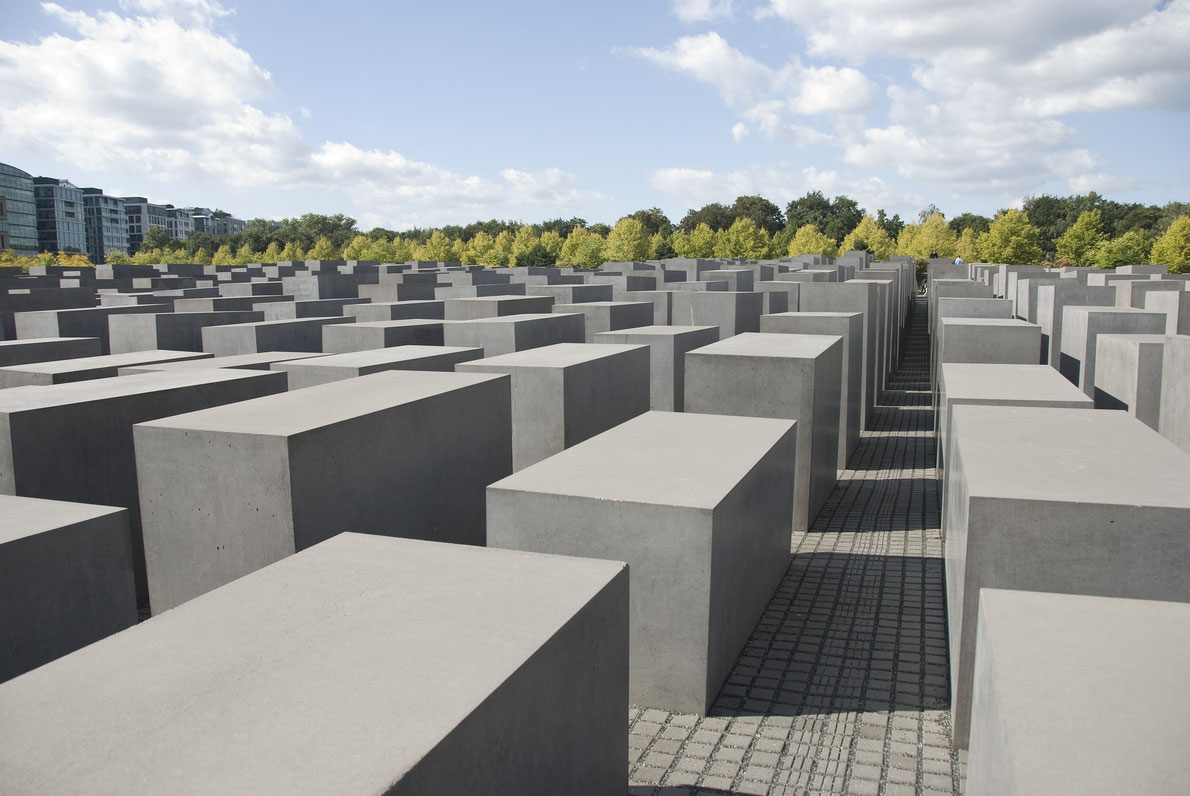
2. Holocaust Memorial
Berlin - Germany
Seeing this memorial on a photo you might say "Yes, ok, it's strange.", but once you are on the spot, in the heart of Berlin , you are overwhelmed with emotions ; you are lost, sad, ashamed of what was done to innocent people ; you are also aware of the enormous work done by the new generations of German people who condemn those acts and show the world that they will never forget.

3. Auschwitz
Some people persist in denying reality. Unfortunately, death camps are true and real; they show what people inflicted to their fellow men. Let us never forget.

4. Oskar Schindler Factory
Krakow - Poland
You have heard about Steven Spielberg's film " The Schindler’s List ". The German industrialist who saved more than 1000 people of Jewish origin during the Second World War ; he made them work in his factories.
Originally Oskar Shindler did so because the Jews, who were confined in a concentration camp next to his factory, were cheaper than the Poles, but he gradually commited to save their lives. He did more than that by sabotaging his own weapon factory so as not to slow down the arrival of the allies. The Schindler's factory is situated in Krakow Visit the place and let yourself be immersed by this incredible human story.

5. The Reichstag
The Reichtag was set on fire but do you know when, why and the consequences? Setting fire to the Reichstag allowed the nazis to pass appalling laws in order to get rid of communists, among others.
The centre of the building was used to put forward propaganda projects ; the building is now completely renovated; it houses the German parliament. Come discover this building by booking a Reichstag Dome tour .
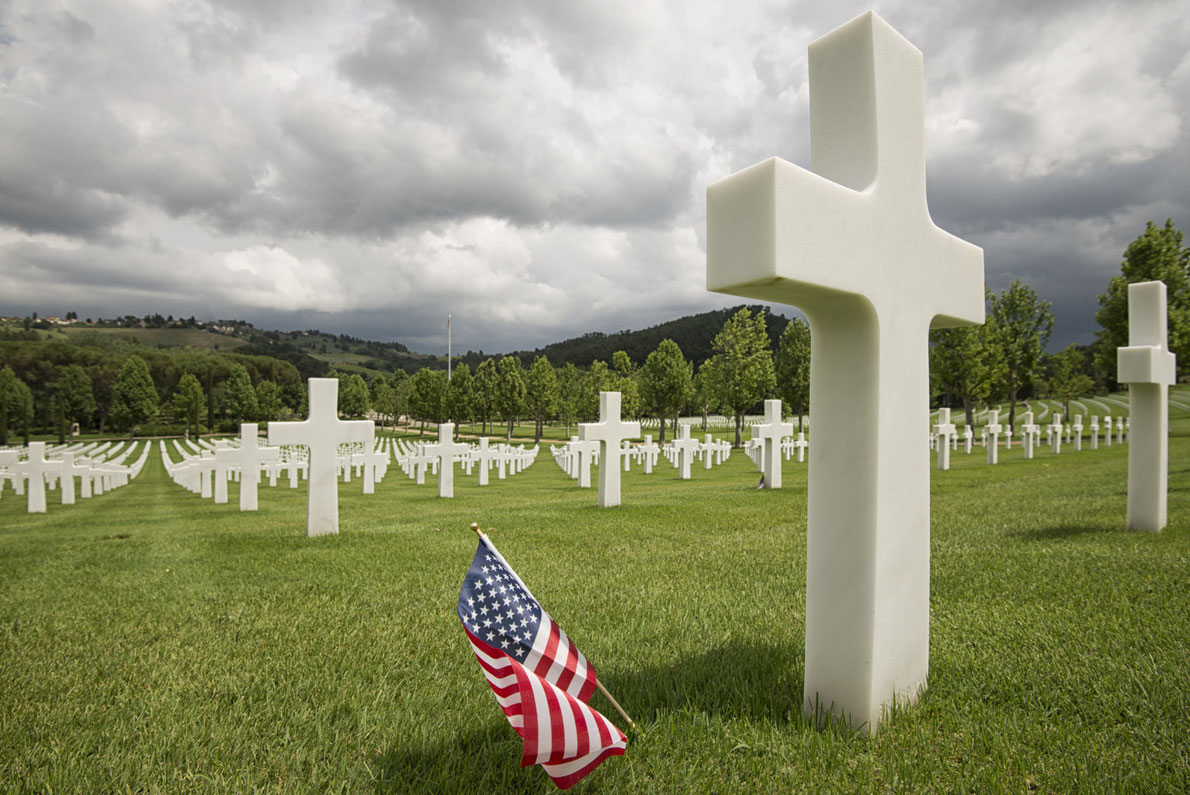
6. American Cemetery
Colleville-sur-Mer - France
You will be moved to see the 10,000 crosses and thankful to the soldiers who came from the other side of the world to fight with us for ideas of liberty and against the nazi dictatorship that threatened Europe.
The American cemetery of Colleville-sur-Mer was offered to the USA. There is a small piece of American land in the heart of Normandy.
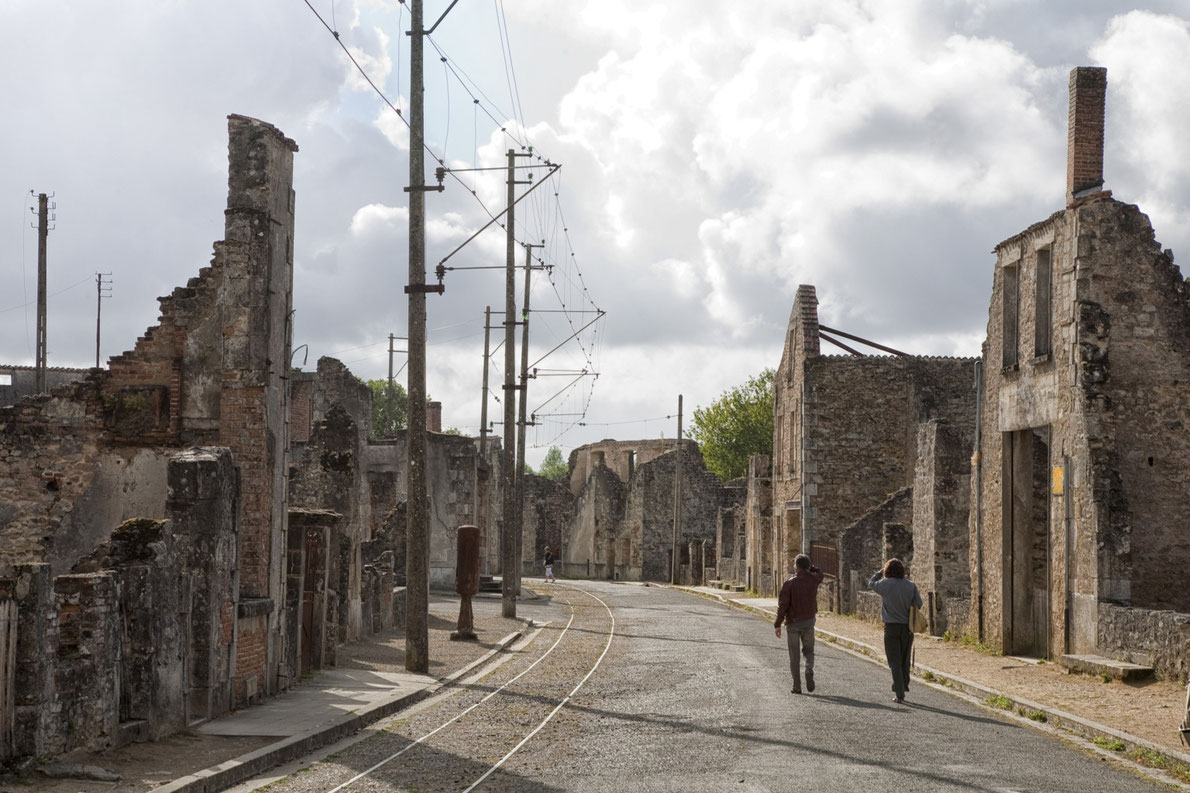
7. Oradour-sur-Glane
Berlin was completely destroyed at the end of World War II while many towns and villages in Europe were bombed by the nazis during five years of war. Oradour sur Glane was one of them.
According to the desire of the French President and in memory of the atrocities perpetrated by the nazis, the village was not rebuilt after the shelling on 10 June 1944 and the massacre of its 600 inhabitants.
Normal 0 21 false false false FR-BE X-NONE X-NONE

World War II affected many countries in and outside Europe. One of the most beautiful cities in Europe, Warsaw was not saved : more than 200,000 inhabitants were killed and almost all the monuments and buildings of the city were destroyed by the nazis.
Commemorating plaques testify those tragic events in different parts of the old town.
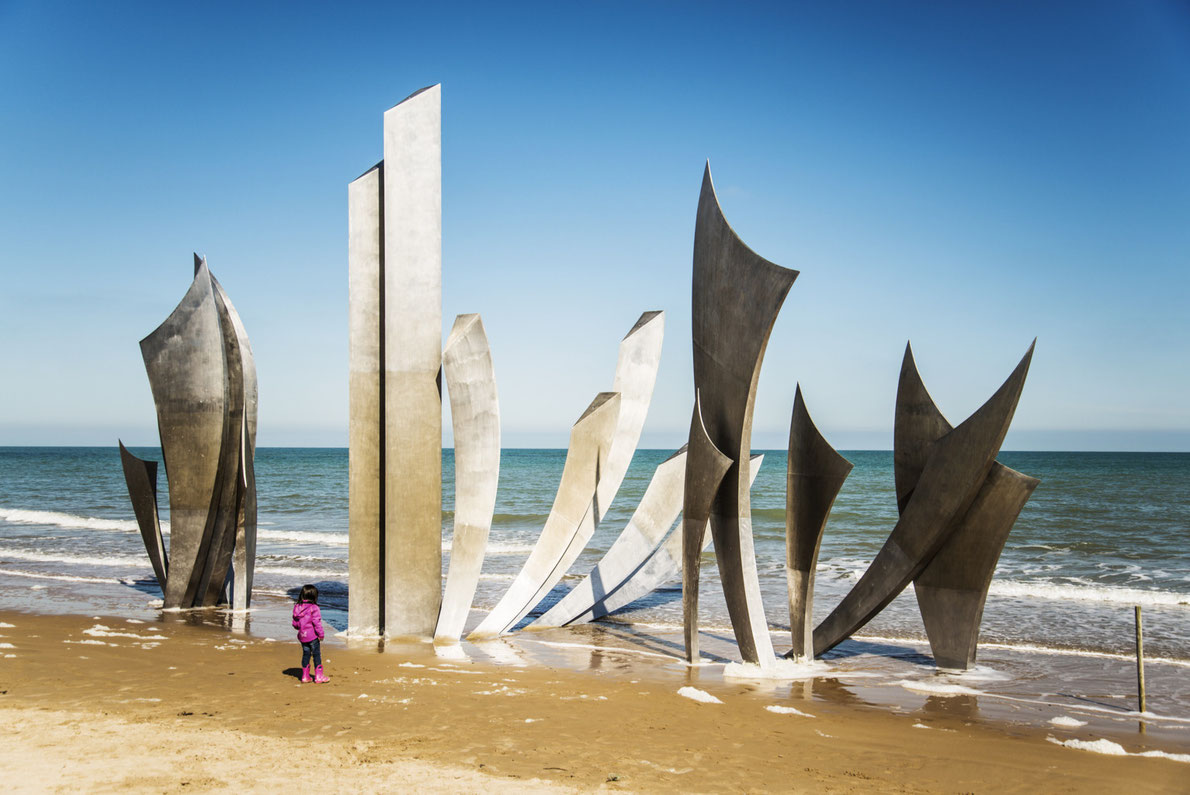
9. Omaha Beach
"Omaha beach" is famous around the world ; the name sounds very exotic in Normandy ; That code name was given by the American soldiers to talk about the beaches they would land on to free Europe from the nazi regime.
You can stay in Caen, the biggest town near the beach or in Saint-Laurent-sur-Mer facing Omaha beach.

The Yalta Conference was held in February 1945 with the Heads of State of the United States, the United Kingdom and the Soviet Union. Its aim was to discuss Europe's post-war reorganization.
The conference was held at the Livadia Palace, not far from the Swallow Nest on this photo ; it was ranked among the best castles in Europe . Yalta became a subject of intense controversy. To some extent, it has remained controversial.

Plan your trip to Europe
Hotels, Apartments, B&B...
Fresh deals every single day
Thousands reviews you can trust

Tours, Sightseeing & Activities
Discover Europe’s biggest collection of things to do and guided tours.
Whatever you want to do you’ll find it here.

More destinations
- Best of Europe
- Remember WWII destinations in Europe
Best in Europe
Best Destinations 2024
Best Romantic Destinations
Best ski resorts
Best Christmas markets 2024
Best beaches in Europe
Sustainable tourism in Europe
European Best Destinations
EDEN Destinations
Connect with us
Subscribe to discover latest travel inspiration, tips and deals from European Best Destinations.
My Newsletter
Best in Europe.
Your ultimate bucket list to travel in Europe

destinations 2024

Most exclusive
destinations

sustainable destinations

romantic destinations

fairy tale destinations

places to visit Netherlands

Art Nouveau destinations

places to visit in Portugal

medieval destinations

Family holiday

hidden gems

blue water destinations

for digital detox

Green Capitals

open-minded destinations

natural wonders in France

hidden gems in Italy

islands in Greece

things to do in Austria

European Best Destinations ®
- Scroll to top
- Terms of Use
War News | Military History | Military News
Top 10 wwii sites to visit in germany.
- World War 2
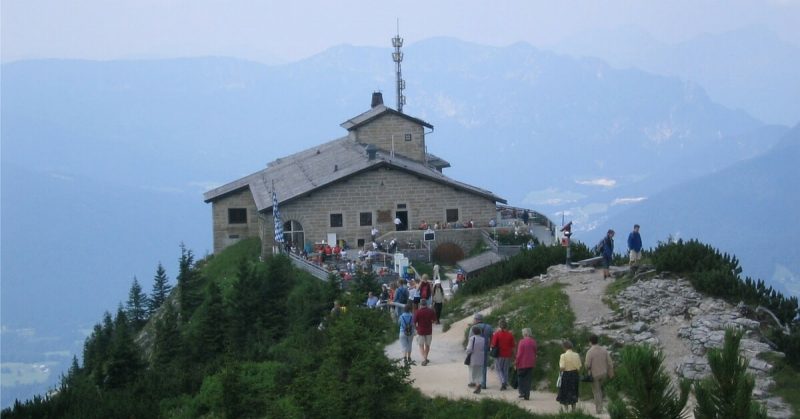
When planning to visit Germany, there are countless WWII locations from which to choose. To make planning easier for you, we have made a list of the 10 locations that we feel should be on your list.
We’ve tried to give you the full package that encompasses the entire history; from the birth of the Nazi ideology in Nuremberg and Munchen to its death in Berlin. We’ve covered everything from the development of the V-2 rockets to the Dachau concentration camp.
Party rally grounds, Nuremberg
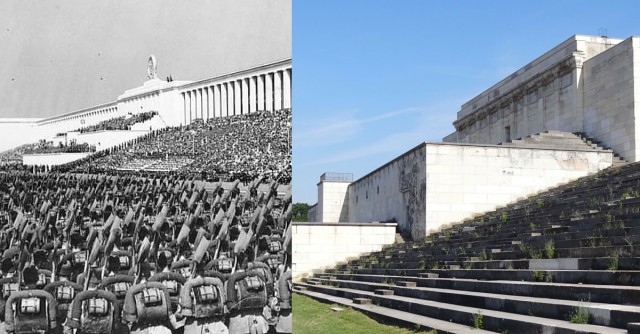
Hitler described Nuremberg as the ‘Heart of the Third Reich,’ so it makes sense that he would build the Nazis’ main rally ground around 11kms outside the city. Nuremberg is in Germany’s southwest, where Nazism grew from its modest beginnings to the party that took over the government.
The rally grounds are situated on six square miles. They include 24 towers and the balcony, known as the Zeppelin Tribune, where Hitler would stand to make speeches and address his party. In the arena, around 150,000 people could gather to salute their leader. The ground’s design was based on, but bigger than, the Colosseum in Rome.
Between 1933 and 1938 six Nazi rallies were held at the grounds. The sheer size and scale of the rallies were immense. The events were carefully planned and arranged so that they would portray an inspiring performance.
Since the end of the Second World War the German government, the Bavarian state, and the Nuremberg city authorities have all grappled with the challenge of what to do about these remaining infrastructures from the Nazi past
Visit information:
Address: Bayernstraße 110, 90478 Nürnberg, Germany Hours: 9AM–6PM Phone: +49 911 2317538
Wewelsburg Castle, Büren
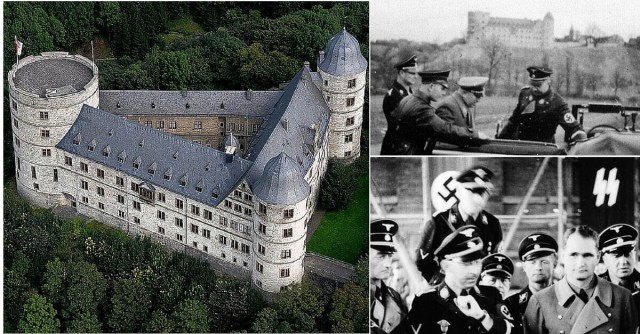
Wewelsburg Castle had served as Heinrich Himmler’s home and the SS’s headquarters throughout the Nazis’ reign in Germany. Heinrich Himmler, an ardent occult practitioner, and believer, he filled the castle with symbols that showed his fascination with the supernatural realm.
Significantly, its location is near what was then believed to be the site of the Battle of the Teutoburg Forest. Legend suggests that the castle held thousands of accused witches during the 17th century, who were tortured and executed within its walls.
Of course, no proof exists that Himmler wanted a Holy Grail castle, but the redesign of the castle by the SS referred to certain characters in the legends of the Grail: for example, one of the arranged study rooms was named Grail, and others, King Arthur, King Henry, Henry the Lion.
Address: Burgwall 19, 33142 Büren, Germany Hours: 10AM–5PM Phone: +49 2955 76220 Website: http://www.wewelsburg.de/en/
Fuhrerbunker, Berlin
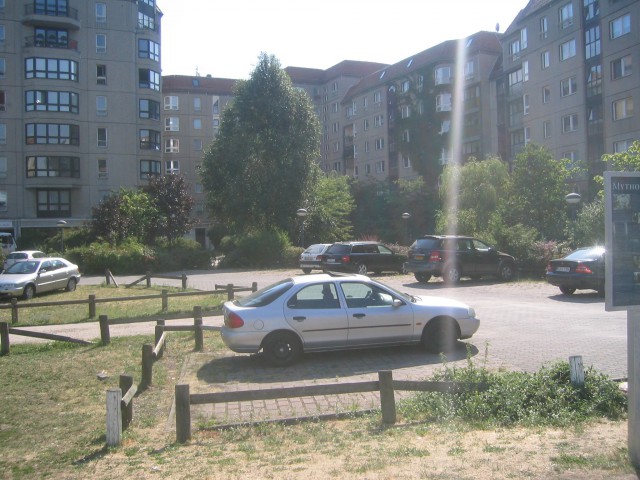
A parking lot now sits where Adolf Hitler’s Reich Chancellery once stood, in the center of Berlin. It is long gone thanks to Soviet troops liberating Berlin marking the end of World War II in Europe. But another infamous structure stood at this spot as well. There are no signs or commemorative placards of the building as many people have chosen to put the past behind them.
The present location of the infamous Fuhrerbunker, the location in which Hitler and his companion Eva Braun committed suicide is located beneath this parking lot with a sign stating the significance of the bunker under a patch of grass, of where Hitler spent his last month.
The Fuhrerbunker was originally intended as an air raid shelter, but as the war turned in favor of the allies, the shelter was extended into a much larger complex.
In 1947 the bunker’s ventilation towers were destroyed but other than that the complex was simply sealed off. Additional demolition occurred in 1959 but as the site was located close to the Berlin Wall, within the East Germany side of the Wall and was included in an area that was left mostly undeveloped and untouched.
It was not until the late 1980s that the East German administration began building on the site in an attempt to wipe out all trace of the past. Today, it is thought that there are still a few corridors to have survived but are sealed off from the public.
Address: In den Ministergärten, 10117 Berlin, Germany The Holocaust memorial is located nearby and should also be visited.
Berghof, Berchtesgaden
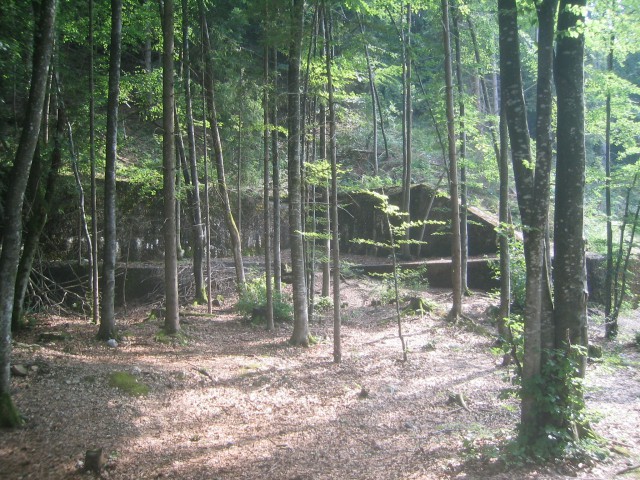
Hitler had always been attracted to the Obersaltzberg, the mountain overlooking Berchtesgaden. In the 1920s, he had rented a house there and in the 1930s he bought Haus Wachenfeld. This was rebuild into the Berghof in which he spent a large part of the war. Being close to Hitler was very important for the Nazi Party chiefs, and they moved into this area too, turning a lovely mountain into a Nazi powerhouse.
The Obersalzberg was bombed by hundreds of British Lancaster bombers on 25 April 1945, 12 days before the surrender of German forces on 7 May. At least two bombs struck the Berghof. On 4 May, four days after Hitler’s suicide in Berlin, departing SS troops set fire to the villa. Only hours later, the U.S. 3rd Infantry Division arrived at Berchtesgaden along with the French 2nd Armoured Division.
The ruined Berghof would remain in this state for seven years until it was finally blown up in 1952 the location was then used as to dump the remains of the other buildings . The garage remained standing until 1995. The ruins were further obliterated during the 1990s and early 2000s. By 2007, trees had overgrown the site and only scattered rubble, and the top of a retaining wall are still visible.
Address: Hintereck 2, 83471 Berchtesgaden, Germany
Eagles nest / Kehlsteinhaus, Berchtesgaden
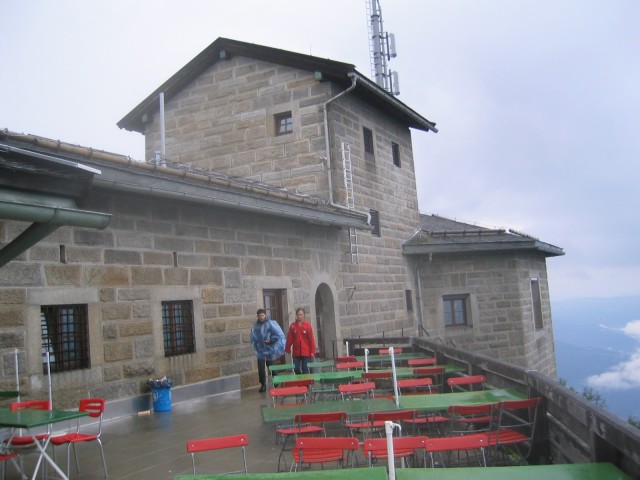
The Kehlsteinhaus or Eagles Nest as the allies called it, is situated on a ridge atop the Kehlstein mountain which towers above the town of Berchtesgaden. It was commissioned by Martin Bormann in the summer of 1937 as a 50th birthday gift for Adolf Hitler and was paid for by the Nazi Party. It was completed in just 13 months and an approach road had to be built which climbs 2,600 ft over 4.0 miles towards a car park near the top.
From a large car park, an entry tunnel leads to an ornate and previously gold-plated elevator which ascends the final 407 feet to the building. A massive red Italian marble fireplace, a gift from Benito Mussolini, dominates the building’s main reception room. It has been damaged by Allied soldiers who chipped off pieces of the marble to take home as souvenirs.
The building is now a restaurant which offers indoor dining and an outdoor beer garden. It is now a big tourist attraction with thousands of visitors ascending to the top every day admiring the same view that Hitler once enjoyed. Inside the Kehlsteinhouse are a number of information signs telling the story of how it was built and the use for the Nazi party.
Buses transport the tourists up to the parking lot, the road has been closed to private vehicles since 1952. There is also a footpath leading up, in about 3 hours you can walk up to the Eagles Nest and then enjoy a well deserved drink.
Address: Kehlsteinhaus, 83471 Berchtesgaden, Germany Open daily from May to September Website: http://www.kehlsteinhaus.de/en/
Dachau Concentration camp
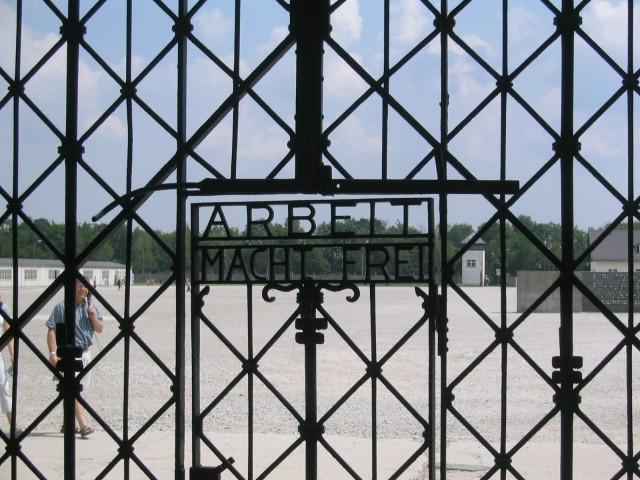
The infamous Nazi concentration camp in Dachau is found in the northeastern part of the town, and it has become an important tourist destination.
Immediately after successfully taking control of the reigns of the county in 1933, Adolf Hitler ordered to open the camp in Dachau. Dachau camp was the very first concentration camp in Europe and became a standard model for many others to follow including the infamous ‘Auschwitz.’
Over 200,000 prisoners have been locked up in Dachau from the foundation until its liberation in April 1945. 41,500 of this number died due to starvation, disease, and results of brutality.
In 1965 the Memorial Site on the grounds of the former concentration camp was established on the initiative of and in accordance with the plans of the surviving prisoners who had joined to form the Comité International de Dachau. The Bavarian state government provided financial support.
Address: Alte Römerstraße 75, 85221 Dachau, Germany Phone:+49 8131 669970 Hours: 9AM–5PM Website: https://www.kz-gedenkstaette-dachau.de/index-e.html
Peenemunde research facility
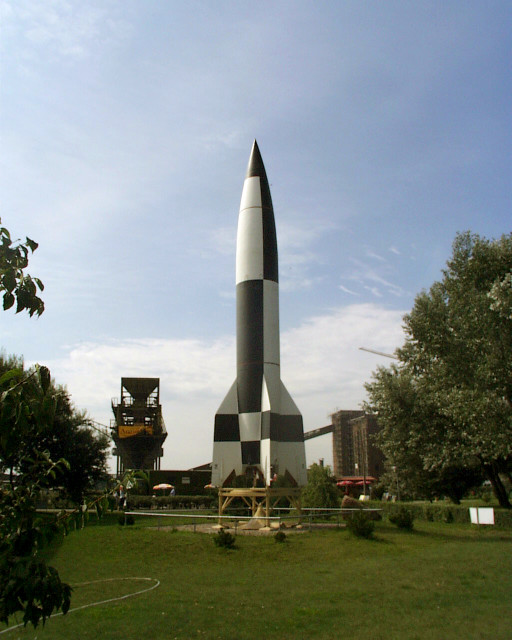
The Peenemünde Military Test Site established in 138 and it became one of the most modern technological facilities in the world. Several German guided missiles and rockets of World War II were developed and the first launch of a V-2 missile into space took place here in October 1942.
Engineers tested numerous flight objects equipped with revolutionary technology in the nearby air force testing area. The goal of the Peenemünde Military Test Site was simple and clear cut; achieve military superiority through advanced technology.
The construction of the test sites and the later serial production of the rockets was done by concentration camp inmates, prisoners of war and slave laborers. This vast pool of humans enabled the Nazis to get the V-2 into operational status is a very short period of time.
This came at a massive cost, inhumane living and labor conditions coupled with the frequent bombing of the test site by the Allies took a heavy toll, causing the death of countless humans.
The Peenemünde Historical Technical Museum is housed in the power station of the former Army Testing Site – the largest technical monument in the German state of Mecklenburg-Vorpommern. The Museum serves as an international meeting place and cultural venue. In 2002, the museum was awarded the Coventry Cross of Nails for its efforts toward reconciliation and world peace.
Historisch-Technisches Museum Peenemünde GmbH Address: Im Kraftwerk, 17449 Peenemünde, GERMANY Telephone: +49 38371 505 0 Website: http://www.peenemuende.de/en/
Hurtgenwald
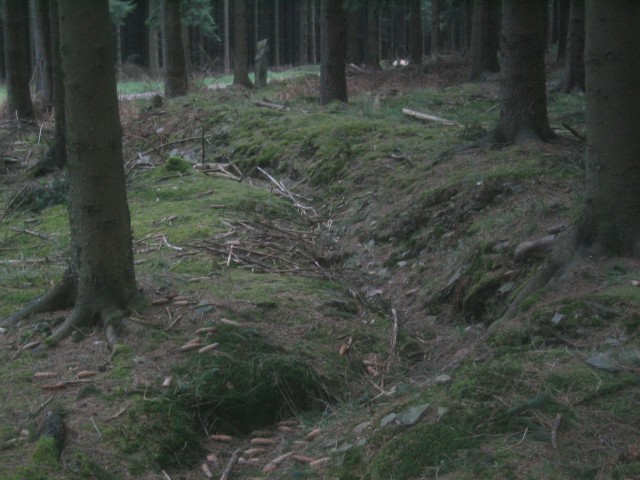
The Battle of Hürtgen Forest was the longest battle on German ground that was fought during the second world war, it lasted from 19 September 1944 to 10 February 1945. The U.S. First army tried to push through the forest and secure two Rur dams which, if opened, could sweep away an Allied bridgehead further downstream.
In 5 months of bitter fighting in the worst imaginable conditions, the U.S. First Army lost at least 33,000 killed and wounded, the German casualties were around 28,000.
Because there was no glory in the Hürtgen Forest, only death and destruction fighting an elusive and well-entrenched enemy in a damp, dark and muddy forest, the battle is largely forgotten. The Battle of the Bulge received far more media attention and ended in a glorious victory, thus it has overshadowed the Hurtgenwald ever since.
To remember the battle, the Museum of Hürtgen Forest 1944 and in Peacetime tells the story of this battle and its consequences for the local population. The museum is run by volunteers and almost all objects in the exhibition were collected in the Hürtgen Forest area after the war.
Nearby in the forest monuments, trenches, and demolished bunker can be visited.
Visit Information:
Address: Pfarrer-Dickmann-Str. 21-23, 52393 Hürtgenwald-Vossenack, Germany Hours: Sundays 11.00-17.00 (March-November) Phone: +492429 90 26 13 Website: http://www.museum-huertgenwald.de/
Königplatz, Munich
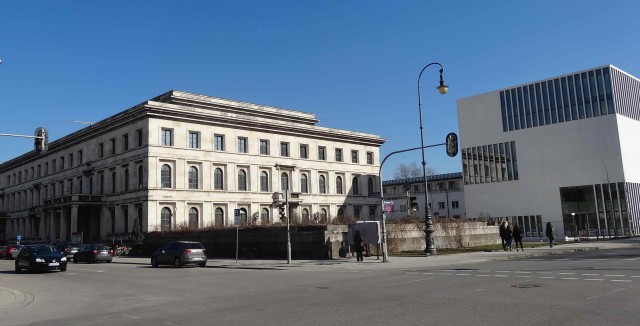
In the heart of Munchen lies a large square called the Königplatz, during the Third Reich it formed the administrative heart of the Nazi Party and mass rallies were held here. Located just off the Königplatz was the Brown House, where the National headquarters of the Nazi Party was located.
On the east side of the Königplatz the Nazis erected two Honor Temples in which they “enshrined” the remains of the sixteen Nazis that were killed in the 1923 Beer Hall Putsch. In 1947, the U.S Army demolished both temples and removed those buried there, but their platforms remain to this day.
Next to the temples, two buildings of the Nazi party constructed by Paul Troost still exist. In the Führerbau, visible on the photo above, the Munich Agreement was signed in 1938 and is now a school for music and theater.
On 1 May 2015, on the former location of the Braun Hause, the new Munich Documentation Centre for the History of National Socialism opened. It is as a place of education and remembrance documenting and addressing the crimes of the Nazi dictatorship and their origins, manifestations, and consequences right up to the present day.
Address: Königplatz, Munich, Germany Hours: Tuesday to Sunday 10 am – 7 pm Website: http://www.ns-dokuzentrum-muenchen.de/1/home/
Feldhernhalle, Munich
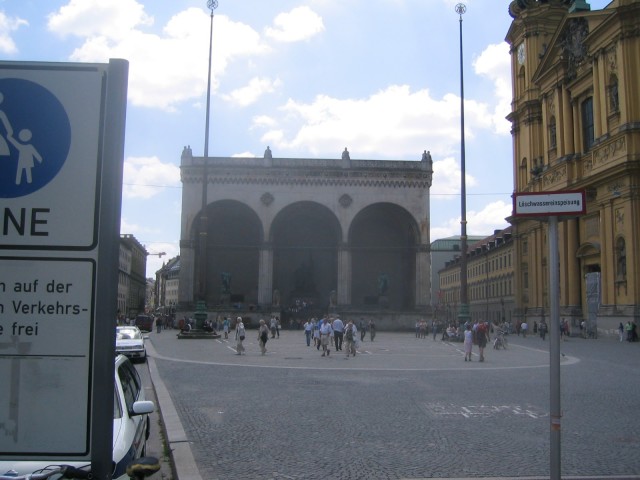
Close to the Königplatz, on the Odeonsplatz in Munich, the Feldherrnhalle is located. In 1841 it was commissioned by King Ludwig I of Bavaria to honor the tradition of his army.
It was at the Feldherrnhalle, or Field Marshals Halls, that on the morning of November 9th, 1923, Adolf Hitler’s “Beer Hall Putsch” came to a bloody end.
The Bavarian State Police halted the illegally organized march by the followers of Adolf Hitler here, which was the last desperate attempt to take over the Bavarian State.
The Nazi’s participation in the march were order to stop but continued so the State Police felt threatened and opened fire. Sixteen marchers and four policemen were killed in the ensuing gun battle.
Those that were killed were later moved to the honor temples on the Königplatz.
This meant the end of the Putsch and Hitler after which he was arrested and sentenced to a prison term in Landsberg prison.
When Hilter took over power in 1933 the Feldherrnhalle was turned into a memorial to the martyrs of the putsch. A monument, called the Mahnmal der Bewegung, was designed by Paul Ludwig Troost and placed opposite the location of the shootings. It listed all the names of the fallen SA men, which had been turned into Martyrs.
The SS had a ceremonial guard at the monument at all time and started using the Odeonsplatz for SS parades and commemorative rallies. During some of these rallies, the sixteen dead SA men were each commemorated by a temporary pillar placed in the Feldherrnhalle topped by a flame. New SS recruits took their oath of loyalty to Hitler in front of the memorial.
On 3 June 1945, local people spontaneously destroyed the Mahnmal der Bewegung, and the Feldherrnhalle was later restored to its pre-Nazi appearance.
Address: Odeonsplatz, Munchen, Germany

Log in with user name:
Log in with social media:
Get FREE email communications from Fodor's Travel, covering must-see travel destinations, expert trip planning advice, and travel inspiration to fuel your passion.
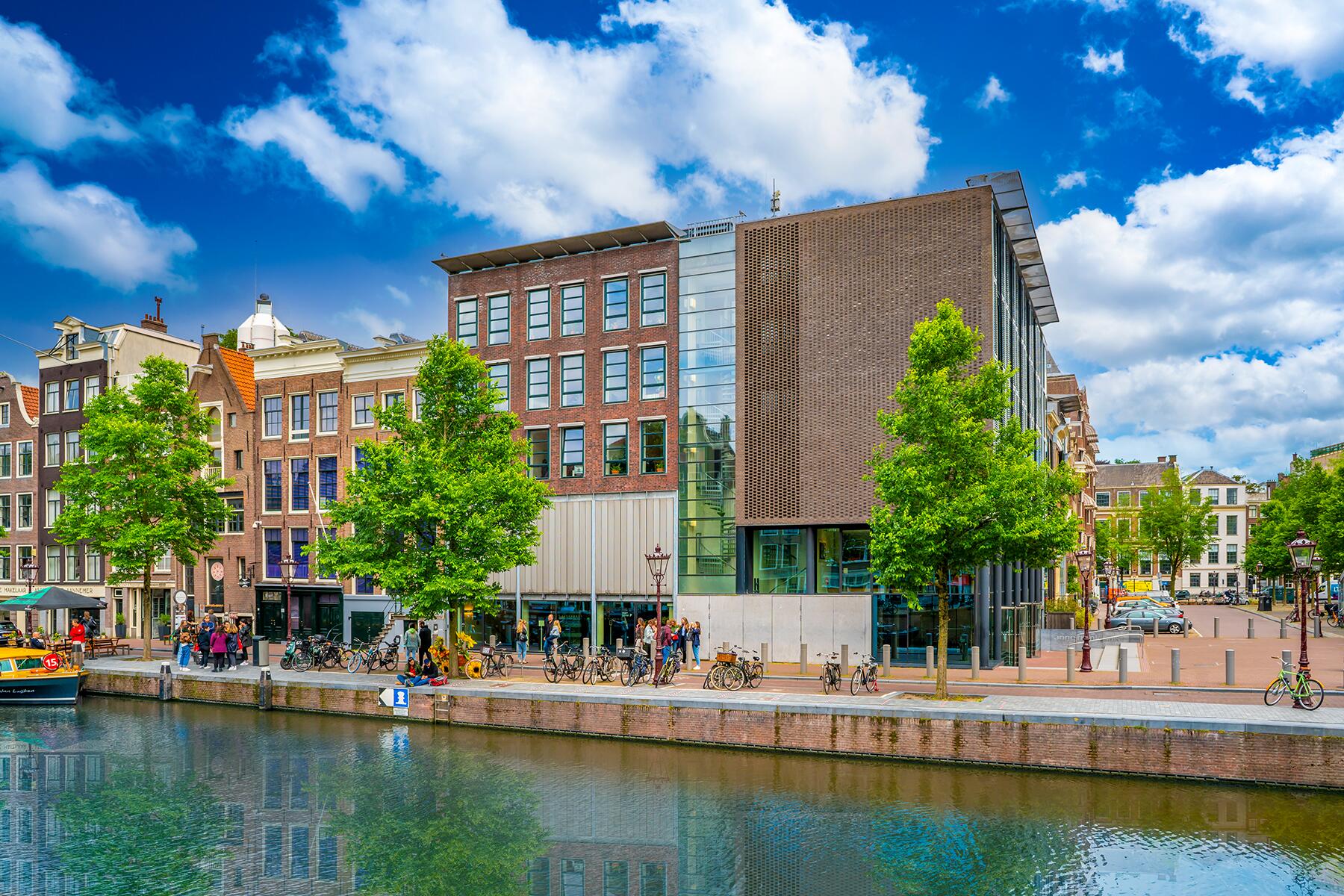
10 Important World War II Sites That All Travelers Should Experience
- Travel News
A WWII guide for travelers.
It’s not easy to read gruesome details of World War II. It was the deadliest conflict in history, resulting in between 70-85 million deaths worldwide. These are not mere numbers—these are people who were sent to concentration camps to be killed; soldiers and prisoners of war who bravely fought; civilians, including the elderly and children, who were caught in the crossfires.
There are war memorials and museums around the world to share stories of noble sacrifices and heroic acts, but they also serve as reminders of the worst we’re capable of: turning against our neighbors and destroying each other. The lessons from WWII are important, as are these memorials, museums, and sites that relay that humanity has gone through terrifying times—lest we forget.
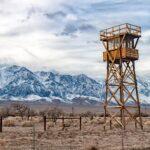
Top Picks for You

Anne Frank House
Where: amsterdam, the netherlands.
When she turned 13, Anne Frank received a diary as a gift, which is now one of the most popular books in the world, and shortly after, her family went into hiding from the Nazis. The Diary of a Young Girl is an account of the two years she spent in the cramped secret annex in a house in Amsterdam. The young Jew, her parents, and elder sister, along with four others, were discovered in 1944 and sent to concentration camps. Only Anne’s father, Otto Frank, survived. He published his late daughter’s diary and her dream to become a writer came true.
The secret annex now attracts millions of visitors every year. The Anne Frank House opened in 1960 as a museum and has on display Anne’s diary. There are also personal items, like the map Otto Frank had on the wall to track the Allies progress.
Auschwitz-Birkenau State Museum
Where: oświęcim, poland.
Auschwitz was the largest Nazi concentration camp and extermination site. Here, 1.1 million people were murdered between 1940 and 1945–around 1 million of them were Jews. Poles, the Roma people, and Soviet prisoners were also killed. Located in a small Polish town, Oświęcim, the camp was once used as army barracks by the Polish. After the Nazis occupied Poland, they turned the site into prisons and later developed gas chambers at Auschwitz II-Birkenau. More sub-camps were built that used prisoners as slave labor and the Auschwitz III-Monowitz was the largest of them all.
Today, it’s a bone-chilling museum that shows you the horrors of humanity. You can visit Auschwitz-I and Auschwitz II-Birkenau, where you’ll see the gas chambers, personal belongings left behind by those who were brutally murdered (shoes, talismans, garments), and archival documents and works of arts by the prisoners.
Recommended Fodor’s Video
British normandy memorial, where: normandy, france.
On June 6 of this year, the 77th anniversary of the Normandy landings, the British Normandy Memorial opened. It is dedicated to the 22,442 people who died on D-Day and the ensuing battle under British command.
D-Day was the biggest amphibious invasion in history when around 160,000 British, American, Canadian, and other Allied soldiers landed on five beaches of Normandy on June 6, 1944. Over the next 77 days, they had total control of Normandy. The victory changed the course of the war and the troops went on to liberate Paris.
There are 160 stone columns with names of the fallen inscribed on them, a bronze sculpture of charging infantrymen, and a monument dedicated to French civilians who lost their lives. The memorial overlooks Gold Beach, one of the landing sites, and cost £30 million to build.
The National WWII Museum
Where: new orleans, louisiana.
The sprawling National WWII Museum in New Orleans has six buildings that narrate the stories of the war. There is so much on this six-acre campus, from exhibits on the history and production of war machines to personal accounts of those who were impacted.
Every aspect of the war is covered. You can learn about why it started, how it was fought (with more than weapons), and how it changed the world. The museum features archival footage and narrations (including Beyond All Boundaries , narrated by Tom Hanks), a pavilion dedicated to STEM research that helped win the war, and exhibits theatrically taking visitors to Normandy, Tokyo, and Berlin.
USS Arizona Memorial at Pearl Harbor
Where: oahu, hawaii.
On December 7, 1941, the Japanese bombed the naval base of Pearl Harbor and killed 2,400 people. The USS Arizona exploded and sank, claiming 1,177 sailors who were on it. All in nine minutes. It is still submerged underwater and remains a war grave, a resting place for those Marines who couldn’t be recovered. And decades after the attack, it continues to leak oil.
The USS Arizona War Memorial is built over its remains and is accessible by a boat. Visitors come to see the white arched structure of the memorial and the wall that has inscriptions of those who perished in the attack. Diving in the waters and looking at the wreckage is also possible, but because it’s a revered war grave, divers can’t go inside the ship.
You should also take time out to visit the Battleship Missouri Memorial —you can walk on the deck of the battleship USS Missouri , where the official surrender ceremony took place on September 2, 1945. A beginning and an end to the U.S. campaign.
Imperial War Museums
Where: england.
The Imperial War Museums are comprised of five museums throughout England that have documented wars and conflicts since World War I. In Manchester, you can visit IWM North to learn how war affects people—there’s a special exhibit here where men and women describe what life was like during World War II. In London, you can see the Churchill War Rooms, a group of basement offices where the British government ministers and strategists, including Prime Minister Winston Churchill, carried out the planning of the war.
The museums also run the We Were Ther e program with people who have lived through these conflicts and share them with visitors. These museums also exhibit modern-day conflicts including Syria, Iraq, Afghanistan, and more.
Memorial to the Murdered Jews of Europe
Where: berlin, germany.
Close to the Brandenburg Gate, 2,711 concrete slabs of varying heights stand in an area of 19,000 square meters (204,500 square feet). This is a memorial dedicated to the six million European Jews who were murdered by the Nazis. It opened in 2005, decades after the atrocities took place. It’s not a typical memorial—the design is intended to be uneven and wave-like and the memorial itself has been criticized . But walking through the labyrinth of gravestone-like slabs is an unnerving experience and the design tries to evoke confusion and chaos, taking inspiration from the turbulent time in the history of the world.
Underneath the open-air memorial is an information center, where you can see videos from the extermination sites and hear the voices of the survivors.
You can also visit these World War II sites in Germany to understand the extent of the tragedy.
Nagasaki & Hiroshima
Where: japan.
The end of the Second World War was also terrifyingly tragic. America dropped two atomic bombs on Japan—the first one on Hiroshima on August 6, 1945, and the second one on Nagasaki on August 9, 1945. More than 140,000 people were killed in Hiroshima by the blast and 74,000 in Nagasaki–but the true death toll is considerably more, as many died in the following weeks, months, and years due to the nuclear radiation.
In Hiroshima, the Atomic Bomb Dome was the building located underneath the explosion, but it wasn’t destroyed completely. It still stands today as a reminder of the suffering and a monument of world peace. You should also visit the Hiroshima Peace Memorial Museum, Flame of Peace, Children’s Peace Monument, and the Cenotaph for Atomic Bomb Victims.
The Nagasaki Atomic Bomb Museum exhibits first-hand accounts of the people who survived the bomb as well as belongings from the victims. The museum, along with the Nagasaki Peace Statue and the Nagasaki Peace Park, reminds us of the dangers of war and promotes world peace.
These sites in Japan aim to educate people about nuclear weapons and continue to discourage their use.
WHERE: Israel
Yad Vashem is Israel’s largest memorial dedicated to the Holocaust, established in 1953 as a campus, archive, and museum. Within the complex is the Holocaust History Museum, which has 10 halls, including the Hall of Names, memorializing three million names of Shoah victims in a haunting circular room. There is also a children’s memorial, the Hall of Remembrance that burns an eternal flame, and the Avenue of the Righteous Among the Nations, with 2,000 trees commemorating non-Jews who risked themselves to save Jewish victims.
Kranji War Memorial
Where: singapore.
The fall of Singapore in 1942 to Japanese forces was a big blow to the British Empire, which colonized and governed the nation. The Kranji War Memorial is located close to the place where the Japanese first landed and launched an attack. The prisoners at Kranji had started a small cemetery, which is now the resting place of 4,461 casualties from the Commonwealth—the white gravestones lined up to remember people from Singapore, India, Canada, Australia, Malaya, Britain, New Zealand, and the Netherlands who died during the War. It also has a mass grave of 69 Chinese servicemen who were killed by the Japanese. The site also has a Singapore Memorial with more than 24,000 names of those who have no known grave.
If you are in Manila and are interested in WW II sites, take the ferry over to Corregidor Island in Manila Bay, lots of history there. It was General Macarthur's and the Allied Forces' last stand as the Japanese invaded the Philippines and from where MacArthur departed to Australia, followed by surrender of the remaining U.S. and Filipino forces and the Bataan Death March. The Pacific War Memorial & museum there is dedicated to U.S. and Filipino forces that fought & died in the Pacific Region during WW II. There are several other sites on the island as well. Very worthwhile day trip from Manila.
When you get around to WW I sites, please don't forget Verdun. The Ossuary, the Living Trench, et alia are very moving, especially in the fall when the weather is gloomy. It moved my father when he saw it in 1933 and it moved us in 1974.

Get our Rail Planner app
Plan your trip, get extra discounts, and show your Pass as you go.

Our favorite spring routes
Celebrate spring with these 7 off-the-beaten-path train routes

All about seat reservations
Everything you need to know about booking your seats

Alternatives to Busy Routes
Travel between popular European cities without seat reservations

Through our Chatbot in the bottom right corner.

Ask the Community
Browse questions from fellow Eurail travellers, or ask your own!
- Plan your trip
- Suggested Itineraries
10 days in Europe: the World War II sites
- Order overview
- Reservations overview
- My Trips & Travelers
- {{translatedTraveler}} {{#promotional}} {{currencySign}} {{standardPrice}} {{/promotional}} {{quantity}}x {{currencySign}} {{finalPrice}}
- Child {{childPasses}}x FREE
- {{translatedPassType}}
- {{translatedValidityPeriodDescription}}
- {{translatedClass}}
- Remove Pass(es)
- {{variant.localizedTravelPackDescription}} {{quantity}}x Free
- {{variant.localizedPassUpgradeDescription}} {{quantity}}x {{currency}} {{price}}
- Your order will arrive by {{expectedDeliveryDate}} 1 x {{currency}} {{price}}
Your cart is empty
Discover the European sites of World War II with this 10-day itinerary. Follow in the footsteps of the Allied forces, from the beaches of D-Day to the heart of Berlin, and into Poland to witness the destructiveness of the Nazi regime.
Itinerary highlights
Visit World War II sites of great historic significance: the beaches of Normandy, the Anne Frank house, and the dreaded Auschwitz extermination camp.
Normandy, France
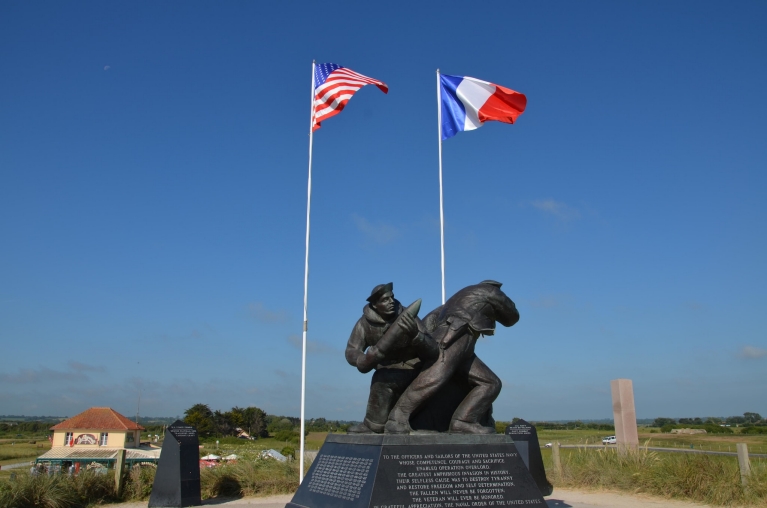
Operation Overlord: Start of the Allied invasion
On June 6 th 1944 (known as D-day), the Allied Forces launched a full scale assault on the beaches of Normandy.
Visit the impressive Utah Beach museum , built on the exact spot where the first American troops landed.
Check out the Airborne museum in Sainte-Mère-Église , the French village that was the first to be liberated by paratroopers.
Ardennes, Belgium
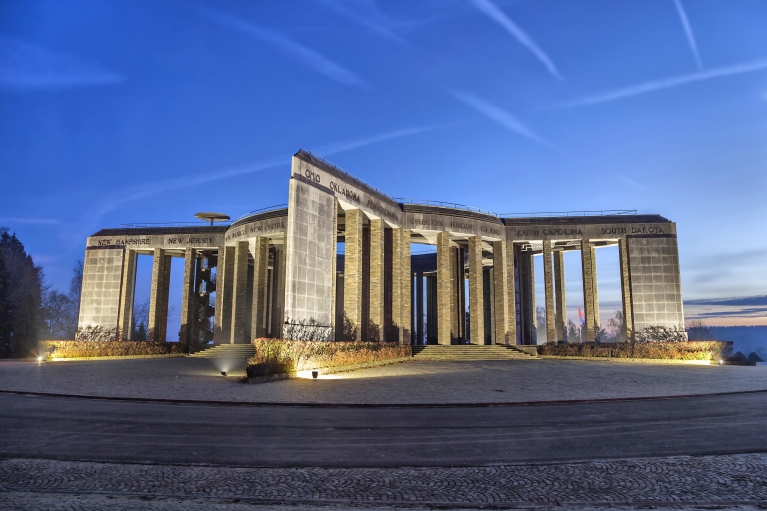
Battle of the Bulge: A cold counter offensive
On December 16 th 1944, the Nazis started their last great offensive in the Ardennes region in Belgium.
Check out the Mardasson Memorial in Bastogne , dedicated to the American troops who liberated the city.
Learn all about the Battle of the Bulge in the Bastogne War Museum.
Arnhem, the Netherlands
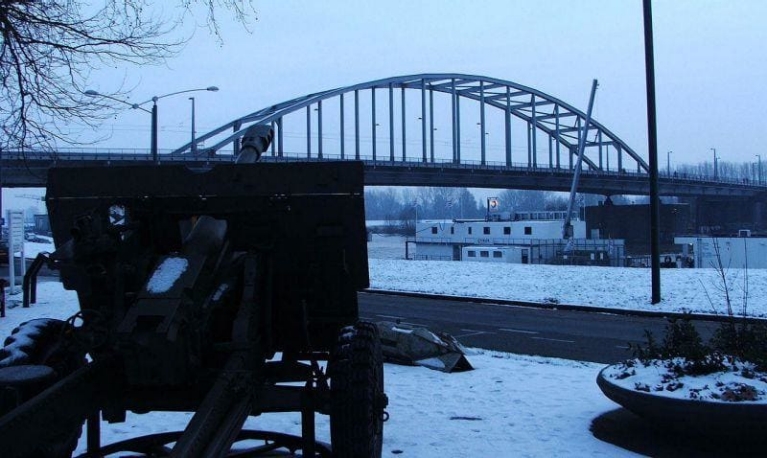
Operation Market Garden: A bridge too far
On September 17 th 1944, the Allies attempted to cross the Rhine, but failed to take the last bridge in Arnhem.
Follow the Liberation route to see the John Frost bridge and other battle sites in and around Arnhem.
Take a 1 hour trip to Amsterdam to visit the famous Anne Frank House and the Resistance Museum .
Berlin, Germany
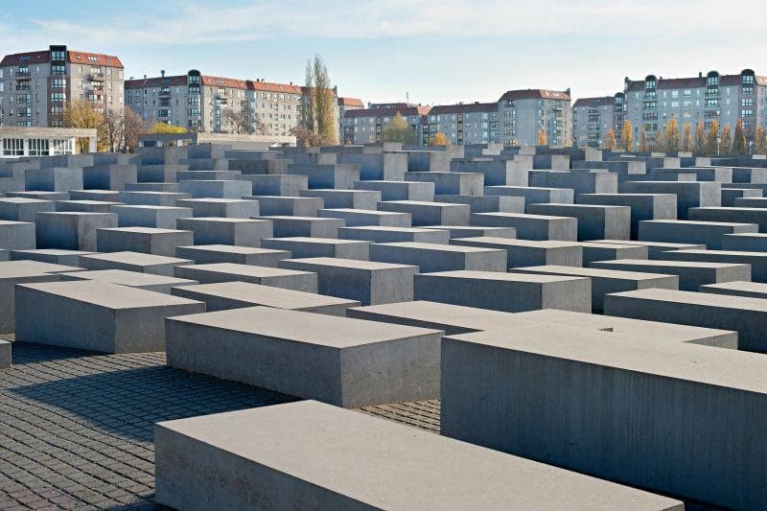
The Battle of Berlin: Road to victory in Europe
On May 7 th 1945, World War II ended in Europe with the unconditional surrender of Nazi Germany.
Visit the Humboldthain Flak Tower , the last remaining anti-aircraft tower that was built to defend Berlin.
Walk through the blocks of the impressive Holocaust Memorial and take a trip to Sachsenhausen concentration camp.
Warsaw, Poland
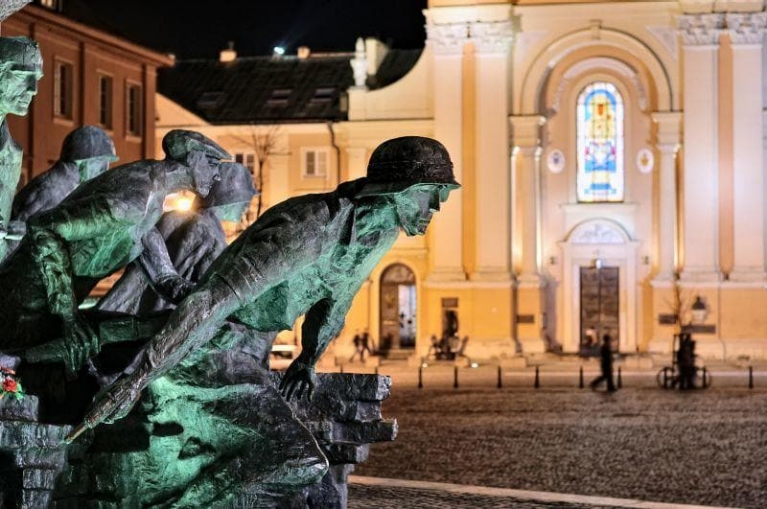
Operation Tempest: The tragic fate of Warsaw
On August 1 st 1944, the Warsaw Uprising started. It would end with the near-obliteration of the city.
Visit the Warsaw Uprising Museum to learn more about the dramatic events that took place here.
Walk through the remains of the Warsaw Ghetto , which was burned down after the Jewish revolt of 1943.
Krakow, Poland
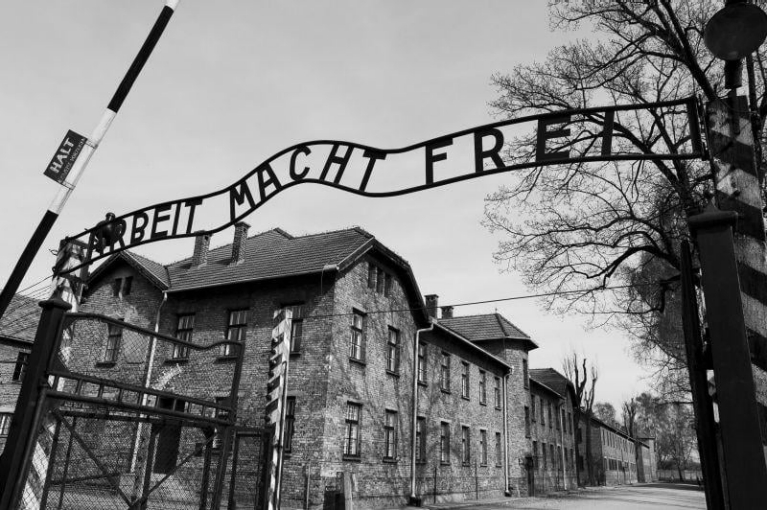
The Holocaust: The Nazis' final solution
On January 27 th 1945, Russian troops liberated Auschwitz, where over 1.1 million people were killed.
Take half a day to explore Auschwitz and learn about one of the darkest pages in history.
In Krakow, visit the factory of Oskar Schindler , who managed to save the lives of over 1,000 Jewish workers.
Which pass should I get?
The ideal rail pass for this trip is the Eurail Global Pass . With this Pass you can travel all over Europe, in no less than 33 countries.
Change of currency
You cannot change the currency once you have a Pass in your cart. Remove the Pass, and then change the currency on the website header.
Change location
- UK / International
- Call toll-free tomorrow from 9am EDT 617-223-4521 617-223-4390 or
- REQUEST A QUOTE
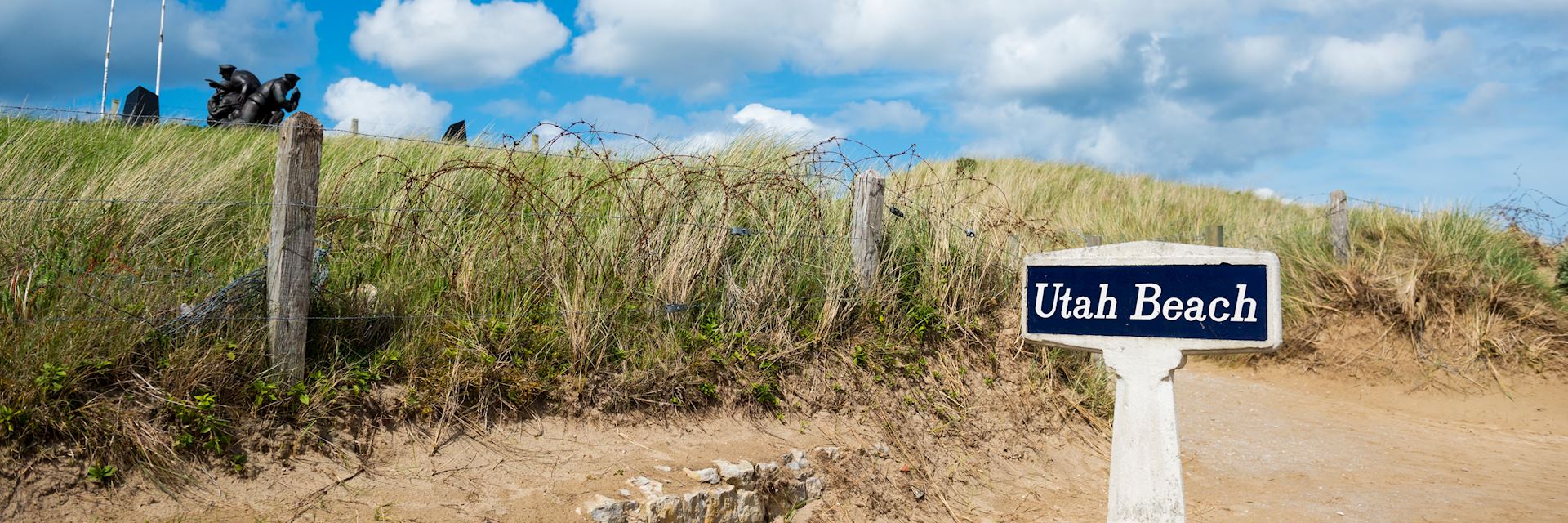
The best World War II sites in Western Europe
In London, shrapnel damage still pocks the walls of the Victoria & Albert Museum, and in Normandy, whole fields remain scalloped by craters from the D-Day invasion. In ways large and small, World War II has left its mark on the people, countries and landscapes of Western Europe.
Whether you want to add a few war-related sites to your trip or plan an entire itinerary based around military history, we’ve created a guide to some of Western Europe’s most impressive World War II sites for you. In addition to blockbuster sites like Churchill’s War Rooms and the Normandy beaches, we’ve also included smaller, lesser-known options like the Bourbon Tunnels in Naples.
Submarines and secrets in Liverpool, UK
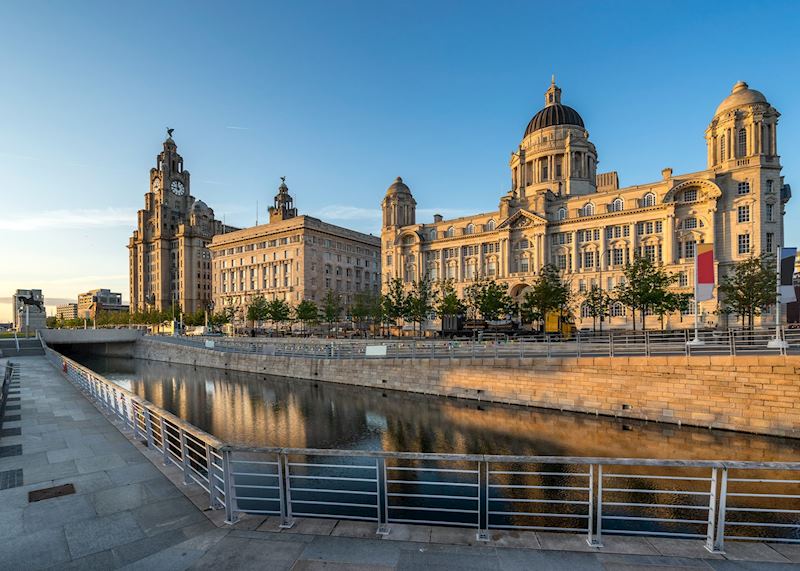
Though it’s best known for its musical history, Liverpool played an essential role in the war’s naval areas. The island nation was dependent upon convoys bringing in supplies from the Atlantic and those ships were protected by the massive, complex operation at the Western Approaches.
Left almost exactly as they were when the office closed in August 1945, the museum’s Map Room includes a huge world map, marked in white gridlines. Here, personnel plotted out the movement of ships like a huge, high-stakes game of Battleship, with real lives at risk. A visit here gives you a glimpse into the beating bureaucratic heart of the Allied operations during the Battle of the Atlantic.
This HQ played a complicated game of hide and seek with the many U-boats that prowled the Atlantic, hunting convoys in so called ‘wolf packs’. At the U-Boat Experience, located across the River Mersey from the museum, you can also look inside U-534, one of just four surviving German submarines that’s been preserved. Its rust-streaked exterior hints at the cramped, grim conditions that sailors on both sides had to contend with.
Churchill’s War Rooms and the Imperial War Museum, London
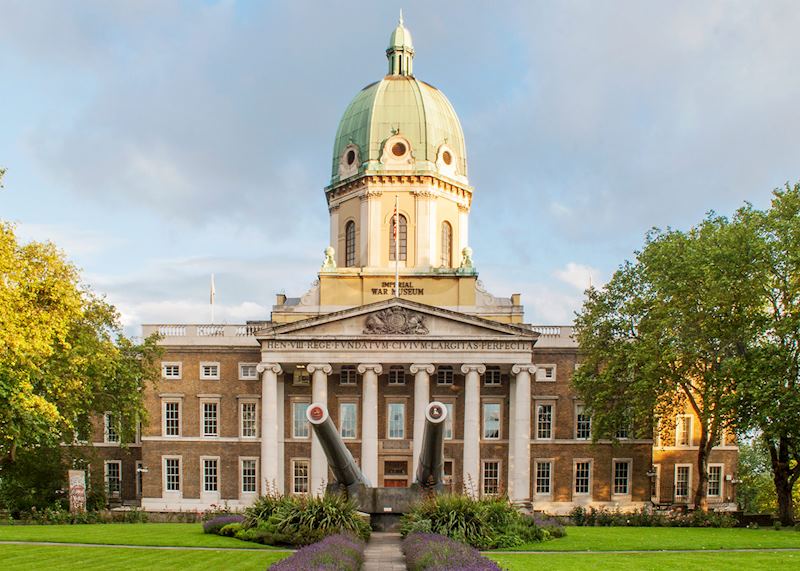
Even in a teeming metropolis like London, you can still see the scars of the war. On the Victoria & Albert Museum, for example, shrapnel from the Blitz took big bites out of the stone walls — the marks are carefully preserved and annotated with a plaque.
But the inarguable highlight of any World War II-themed trip to London is Churchill’s War Rooms. Technically part of the Imperial War Museum, it carefully preserves the underground complex that housed British command during the war, including those deadly months during the Blitz.
These spartan, joyless rooms, left as they were at the war’s end, might seem familiar because they’ve been reproduced endlessly in movies and television, down to the gleaming black Bakelite phone that Churchill used. However, a private guide can provide a fresh perspective on the headquarters.
Look for the special ‘noiseless’ typewriters that Churchill had imported from the States because he preferred a quiet working environment. You can also see a weather indicator sign, intended to convey the conditions upstairs to the isolated workers toiling away in the bunker. During particularly heavy bombing days, George Rance (an official of the Office of Works) would set it to ‘windy’.
Churchill located his command facility near Saint James Park, close to 10 Downing St, but the main bulk of the Imperial War Museum is located on the other side of the river. Set in what was once Bedlam Hospital, the museum focuses on 20th-century conflicts and the British and Commonwealth troops who fought and died in them.
The World War II exhibits here are comprehensive and often harrowing. You’ll see a German V2 Rocket and a gleaming silver Spitfire that survived the Battle of Britain, its sleek silhouette easy to pick out among the sharp angles of the atrium’s ceiling.
The museum goes well beyond the basic weapons, delving deep into the human cost of the war. One exhibit follows a real family throughout the duration of the war, and another looks at the strange-but-true aspects of espionage and counterintelligence. Perhaps the most gut-wrenching is the Holocaust exhibition, which documents the atrocities of the genocide through photos, film and objects.
Castle, cliffs and tunnels in Dover, UK
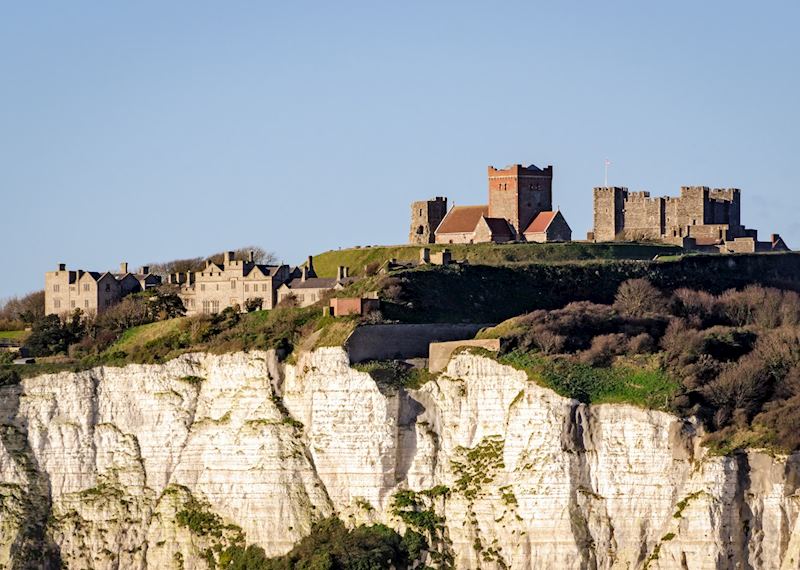
Imposing Dover Castle stands sentinel over the white cliffs that mark the narrowest point in the English Channel. Parts of this square-shouldered fortress date to the 12th century, though there have been fortifications here since the Romans.
Underneath the castle complex, carved out of the soft chalk, you’ll find a network of no-longer secret tunnels that were first created during the Napoleonic Wars. They were converted into an air raid shelter in 1939 and expanded the next year to include a secure underground hospital and Combined Operations Headquarters. Churchill himself stood on a balcony, overlooking the strait, during the Battle of Britain.
The tunnels can seem tight and very dark, the gloom barely pierced by the period-accurate lighting and, in a few places, some parsimonious windows. A tour focuses on Operation Dynamo, the rescue operation to save the soldiers stranded at Dunkirk. With immersive sound effects, projectors throwing light, and the appearance of flames on the tunnel walls, it’s a compelling tour that can be overwhelming for some.
The beaches at Normandy
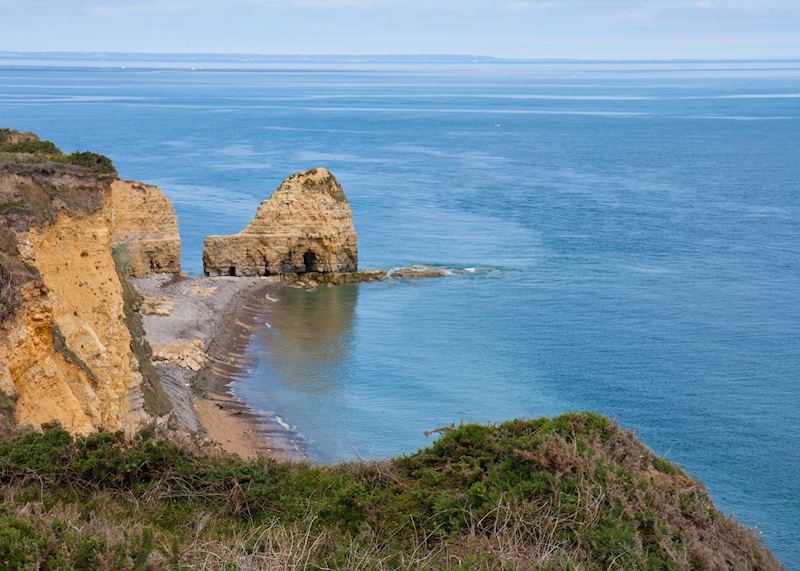
Even though the landings at Normandy have been depicted in films, it’s very different to see it in person. Standing there, on the wide golden sands at Omaha or looking down at the sheer cliffs of Pointe-du-Hoc, can give you a visceral understanding of the odds the Allied forces faced during this pivotal battle.
Plan for at least three days to see everything associated with the war, including the museums, the cemeteries, the artificial ports and the American, British and Canadian landing sites.
A private driver-guide is imperative in Normandy. The narrow roads are confusing, so simply navigating the area is a challenge without one. What’s more, a guide can put what you’re seeing into context, offering small details that don’t come from a guidebook or museum. Many of our guides are local to the area and can speak about their parents’ or grandparents’ personal wartime stories.
Paris, home of the French Resistance
The war is everywhere and nowhere in Paris . After the occupation, Parisians worked hard to erase the remnants of the war from their capital city, so you won’t find many scars from bombing or other obvious signs. However, in a city of 130 museums and countless monuments, you’ll find several dedicated to different facets of World War II.
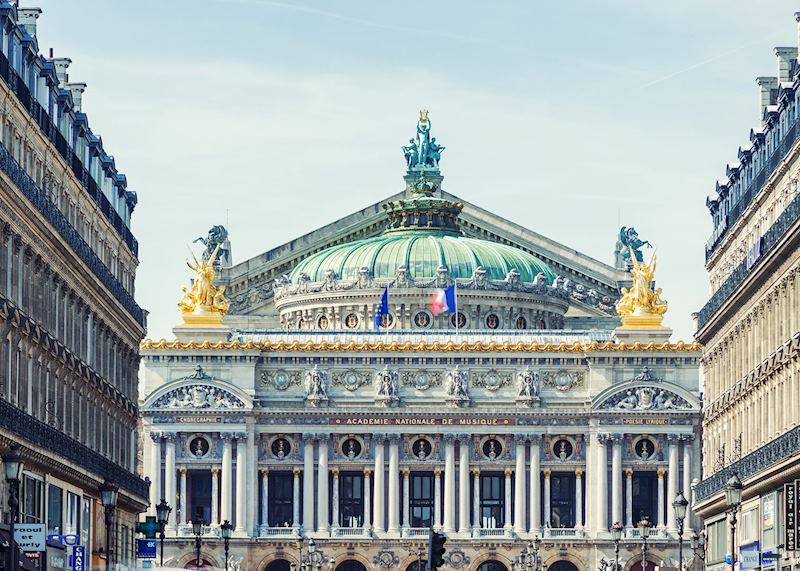
Musée de l’Armée at Les Invalides examines all of France’s military conflicts with a large, permanent exhibit dedicated to World War II. The sheer size and scope of the museum can be overwhelming, so we suggest a private guide to help you navigate the collection and put the exhibit into context, drawing out details that even those familiar with the history may not know.
Located mostly underground, on the site of a former morgue behind Notre Dame, the Mémorial des Martyrs de la Déportation commemorates the 200,000 French citizens who were deported to concentration camps. For a museum focused specifically on the Jewish experience in France during the war, Mémorial de la Shoah is located in Le Marais, an area that had a large Jewish population in the years before the war.
Away from the formal exhibits, Paris remains much as it was during the war — a city devoted to pleasure. High ranking Nazi officials certainly indulged when they were here, and German command tried to get every soldier a stint in Paris, treating the city as if it was a theme park to boost morale. The military governor of Paris, General von Choltitz, set up his HQ in the elegant palace hotel Le Meurice on the Rue de Rivoli. He also refused Hitler’s command to raze the city in the waning days of the war, seduced by the city’s beauty.
Paris was also the hub of the Resistance and a hotbed of espionage and guerrilla action. On the streets, you’ll occasionally see small, sober plaques commemorating the places where some of those fighters died as they fought for the city’s liberation in August 1944.
Today, you can attend a performance at the Paris Opera House, which was once festooned with swastikas, or take a seat at the Moulin Rouge, which remained open during the war and was popular with soldiers. You can also linger over an espresso at Café de Flore, where Picasso spent much of his time during the war. He not only created busts and paintings, but also wrote a play and sold postcards of his anti-war masterpiece Guernica .
Guernica in Madrid
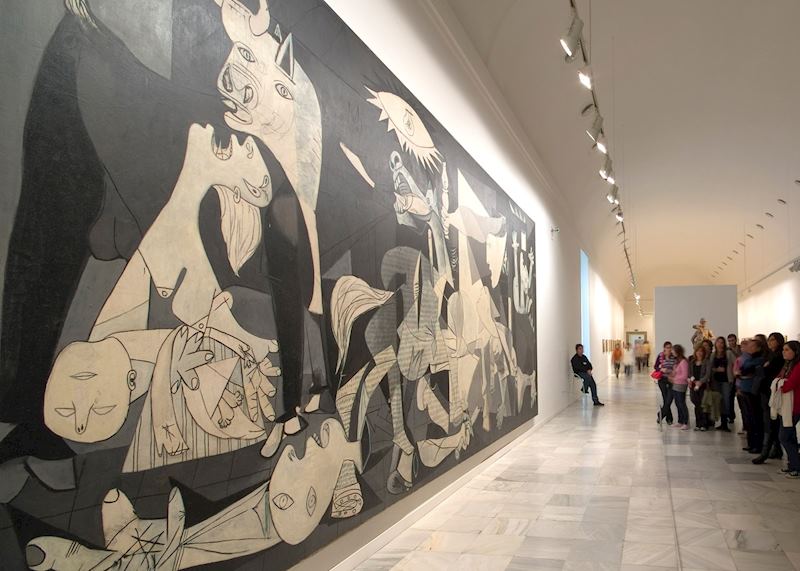
World War II’s dress-rehearsal, the Spanish Civil War left still-gaping wounds both in Madrid and across Spain as a whole. In the Cuidad Universitaria, where the main fighting in Madrid took place, you can still see bullet holes in the buildings along the main avenues and battered Francoist bunkers dotting the forests. Because Franco only died in the 1970s, the war remains fresh in Madrileños’ minds and talking about it is still frowned upon.
Despite that, Madrid is home to one of the era’s most important artworks: the massive and moving Guernica. Painted in 1937, it depicts one of Hitler’s earliest acts of international brutality — the indiscriminate bombardment by the German Condor Legion of the Basque town that shares the painting’s name. The grim, gray-scale work depicts the town’s wholesale slaughter in jagged angles and fractured figures.
The artist himself insisted that the piece not return to his home country until the Spanish people once again enjoyed democracy, a condition that wasn’t fulfilled until 1981. Today, you can see it hanging in grave solitude in a gallery at the Reina Sofía.
Bourbon bomb shelters and vintage cars, Naples, Italy

In the mid-1800s, King Ferdinand II of Bourbon ordered a secret escape tunnel to be built from his Naples palace to a military barracks, in case his fractious subjects rioted. However, the king died before the tunnel was completed.
It was rediscovered in the 1930s, when officials used it as a storage space for impounded cars. Then, once the war began, locals took shelter here from aerial bombardment and parts of the space were expanded and converted to a hospital. After the war, the space became a dumping ground for wartime rubble and fascist monuments.
Today, you can visit the tunnels, which are dark and close, and see the items that have been left here over the years. You’ll see objects left behind by sheltering Neapolitans, including toys and a hairbrush. Ranks of vintage cars slowly moulder into rust, broken bicycle skeletons have turned ghostly pale with dust, and a cracked, nose-less statue of fascist leader Aurelio Padovani leans against a wall, staring off into the darkness.
Read more about trips to Europe
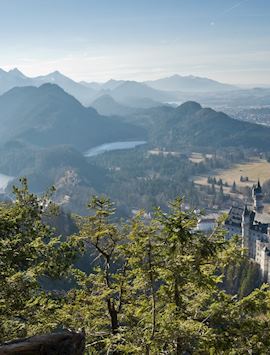
Highlights of Germany self-drive
13 days from $4,250pp
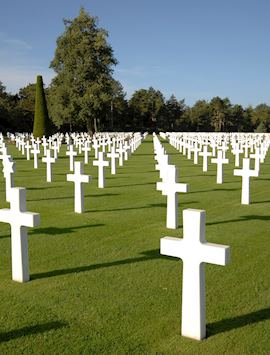
Classic Paris & the Normandy D-Day beaches
9 days from $6,995pp
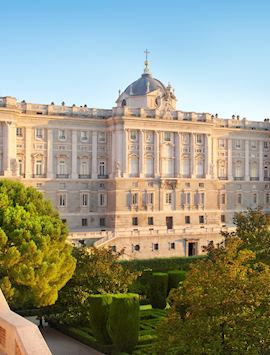
Madrid, San Sebastián & La Rioja tour
7 days from $8,920pp
Start thinking about your experience. These itineraries are simply suggestions for how you could enjoy some of the same experiences as our specialists. They’re just for inspiration, because your trip will be created around your particular tastes.
Further reading
- Historic England: exploring London, Oxford and Bath
- Introducing Normandy: from the D-Day Beaches to the Bayeux Tapestry
- In and around Madrid: our highlights
- Unlocking Italy’s key Roman sites of Rome, Pompeii & Herculaneum
Plan your trip
Tell us about your plans and one of our specialists will plan a unique trip for you...
Request our brochure, The World Your Way

Order your digital copy via email.
- All Destinations
- United States
- European Theater
- Pacific Theater
- The Home Front
- The Holocaust
- Pearl Harbor
- WWII Events
- Wings, Wheels, & Weapons
- General WWII Travel Topics
- Work With Me
- Skip to main content
DESTINATION: WWII
A World War II Travel Blog

Welcome to Destination: WWII – Your online resource for visiting World War II battlefields, museums, monuments, and memorials around the world.
Latest Posts
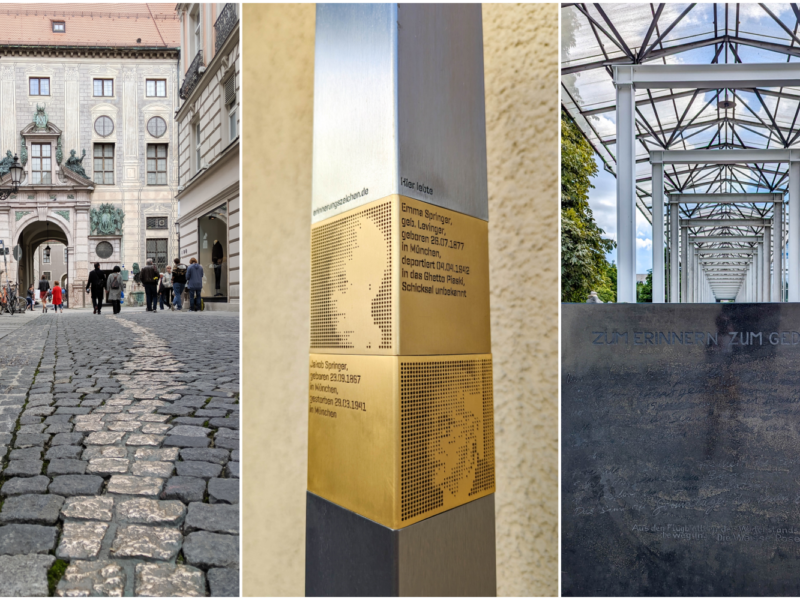
Munich WWII Sites: 26 Eye-Opening Spots You Need To Know About
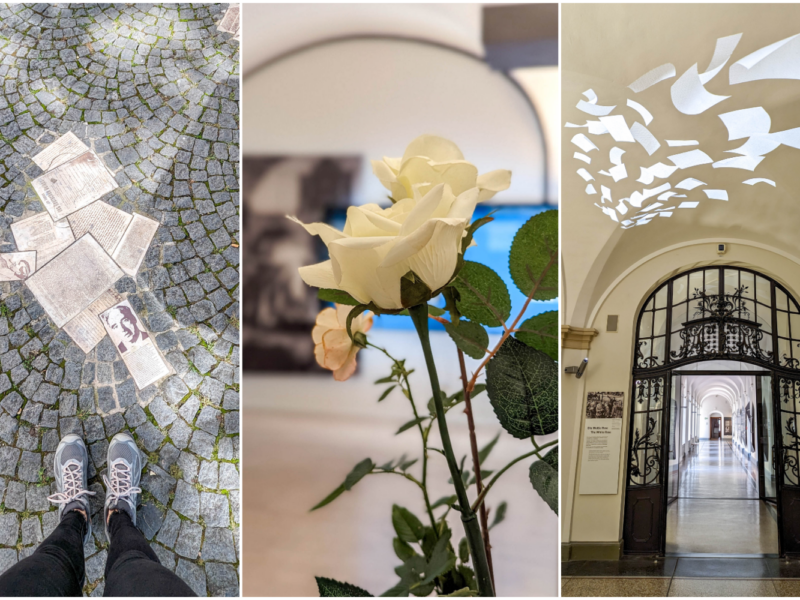
Munich’s White Rose Movement: 13+ Great Museums & Memorials to Visit in Germany
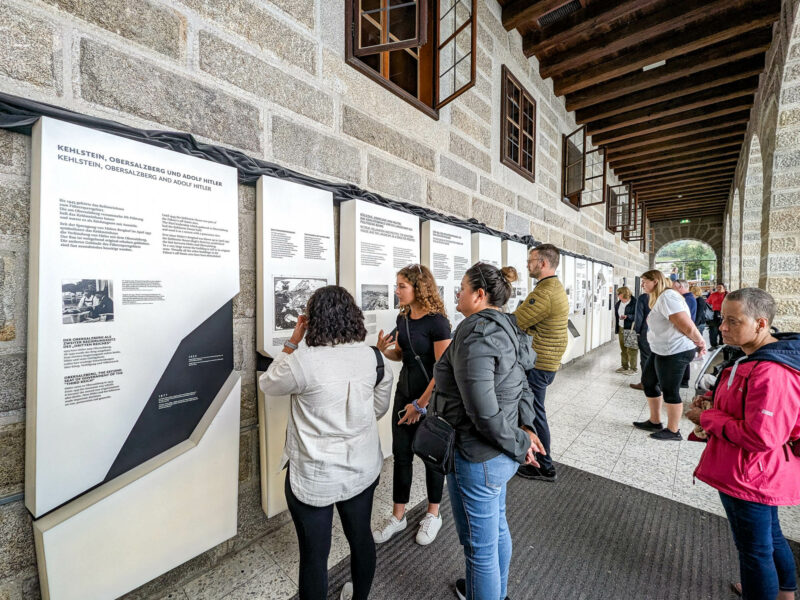
The Truth About Visiting Hitler’s Eagle’s Nest: What You Need to Know Before You Go
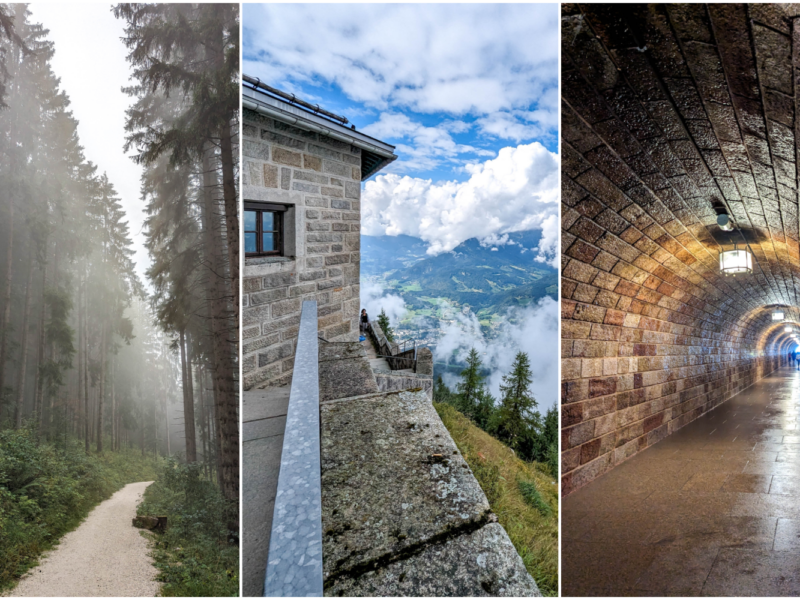
Hike to the Eagle’s Nest: 11 Reasons to Skip the Bus in Berchtesgaden
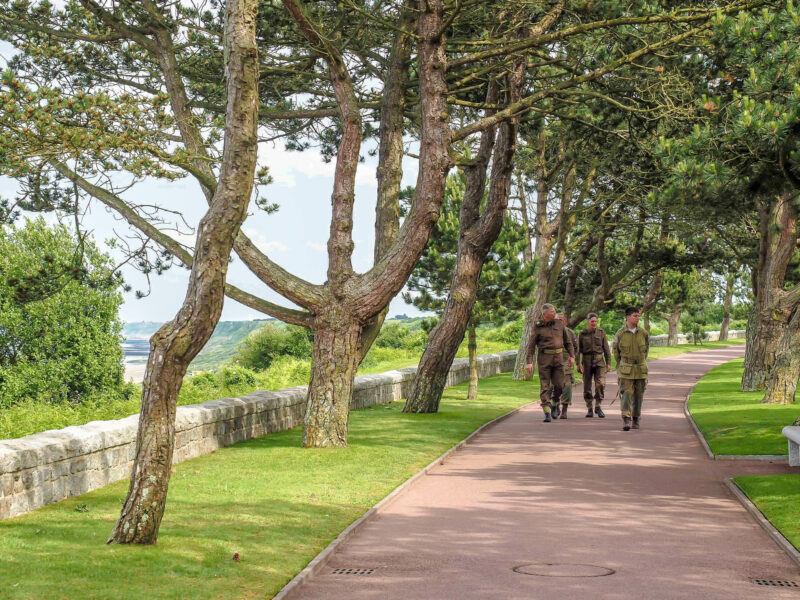
The 10 Best Local D-Day Tours in Normandy for 2024: Beaches, Battlefields, & Beyond

10 Things You Need to Know Before Visiting Normandy’s D-Day Sites
Click Here for More

Meet Your Guide
Hi, I’m Ashley! I’m a full-time travel writer, tour guide, and World War II historian based in Boston, MA who’s traveled to 32 countries on 5 continents. I formed Destination: WWII from a desire to encourage and help travelers visit WWII sites around the world.
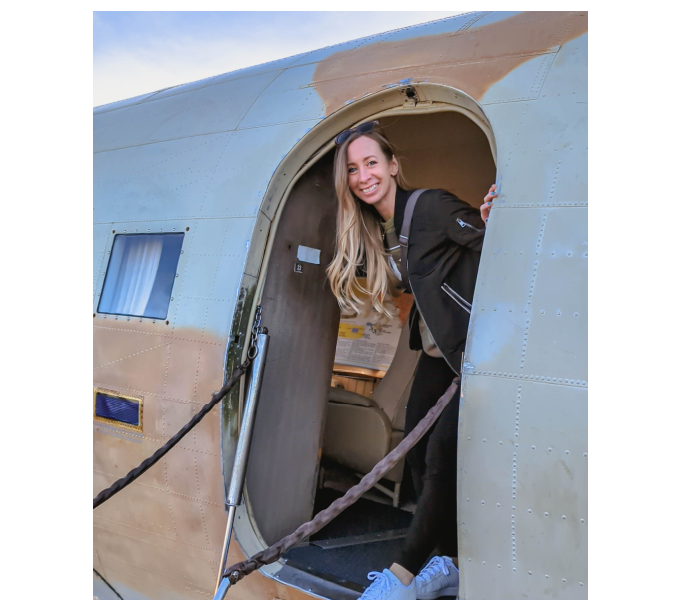
Explore These Categories
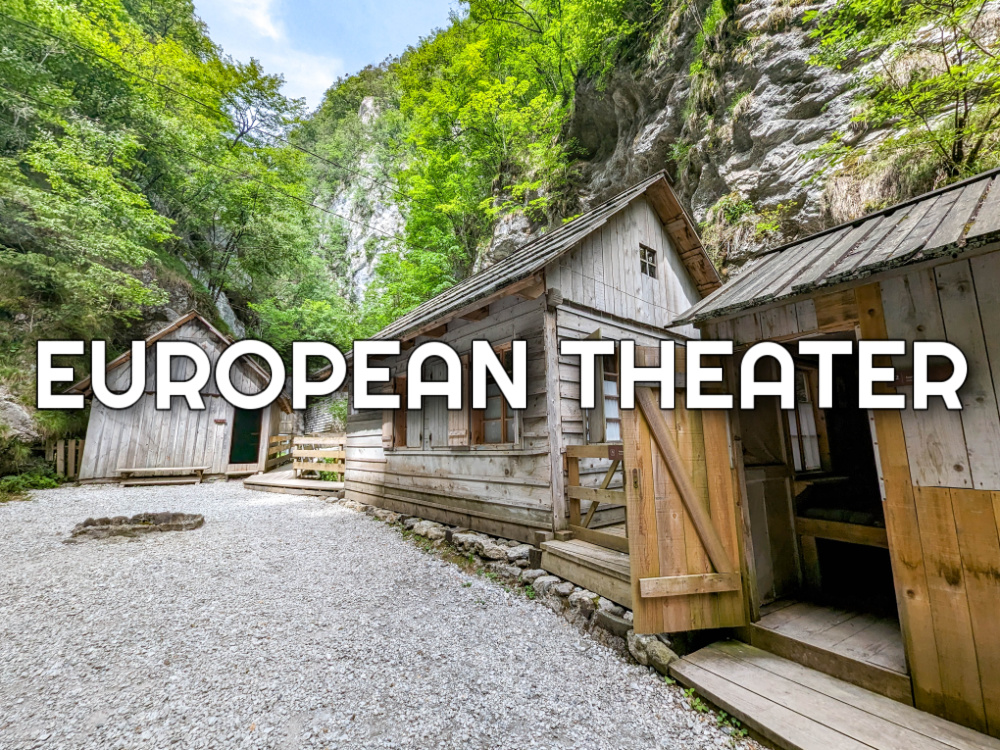
Most Popular Posts
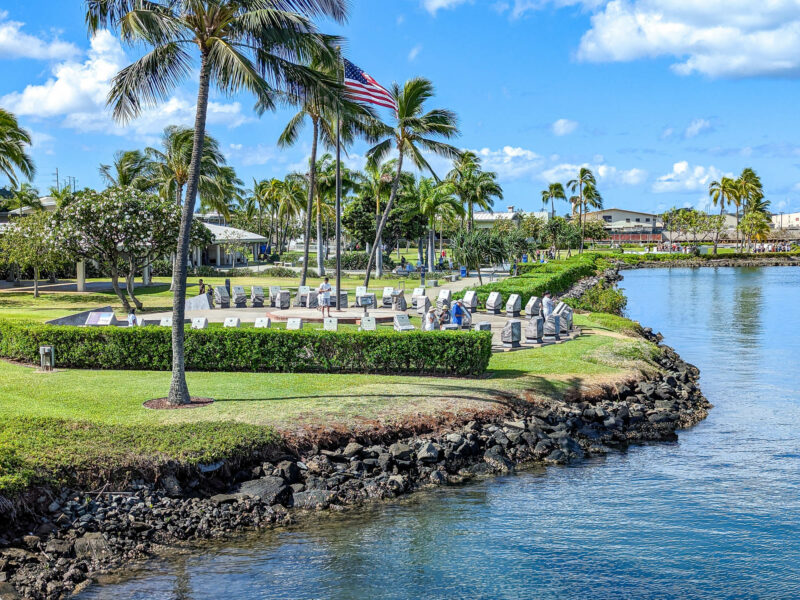
Visiting Pearl Harbor: 22 Things You Need to Know First + Helpful Tips
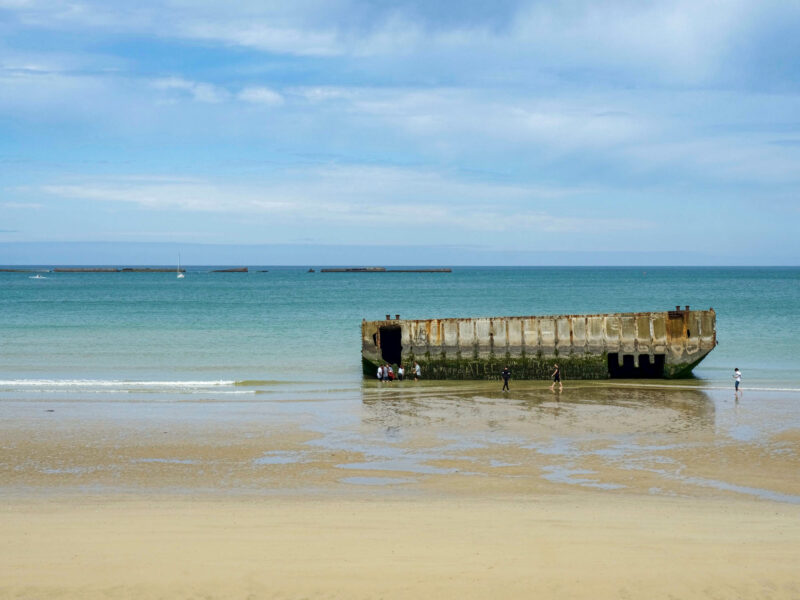
The 8 Best Normandy Tours from Paris in 2024: D-Day in a Day

Terezín Concentration Camp from Prague: How to Get There & What to See
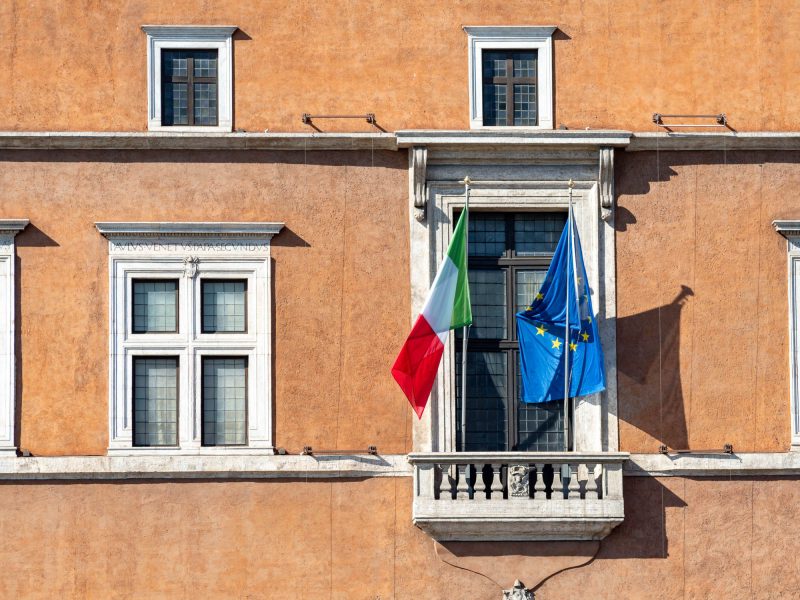
WWII Sites in Rome, Italy: 8 Museums, Memorials & More To Visit Today

7 of the Best D-Day Sites to Visit in Normandy If You Have Just 1 Day
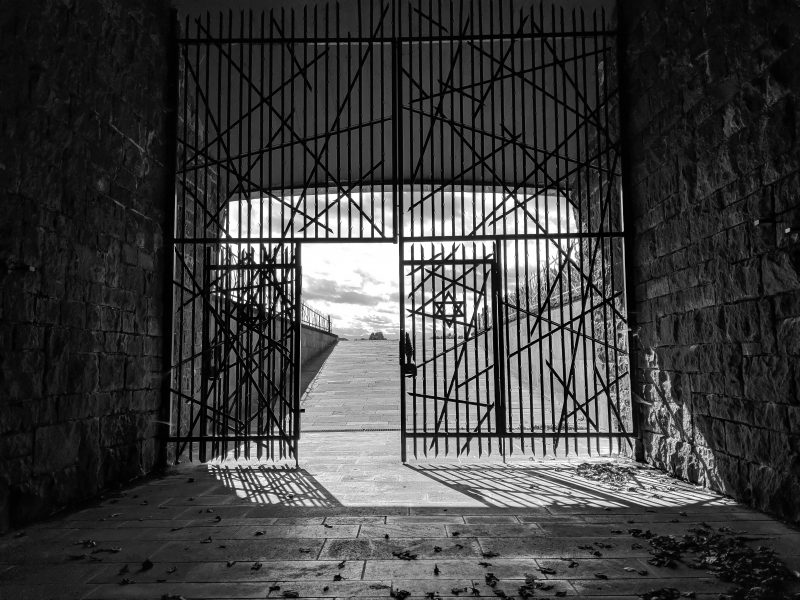
Complete Guide to Visiting Dachau Concentration Camp Outside Munich
Subscribe to dwwii.

Paris WWII Sites Map
TTC family of brands
My Trafalgar
Destinations
Get Inspired
866 513 1995
WWI and WWII Battlefields
316 reviews
Last Minute Deal
Save up to $607
Available Dates
Your itinerary
Dates & prices
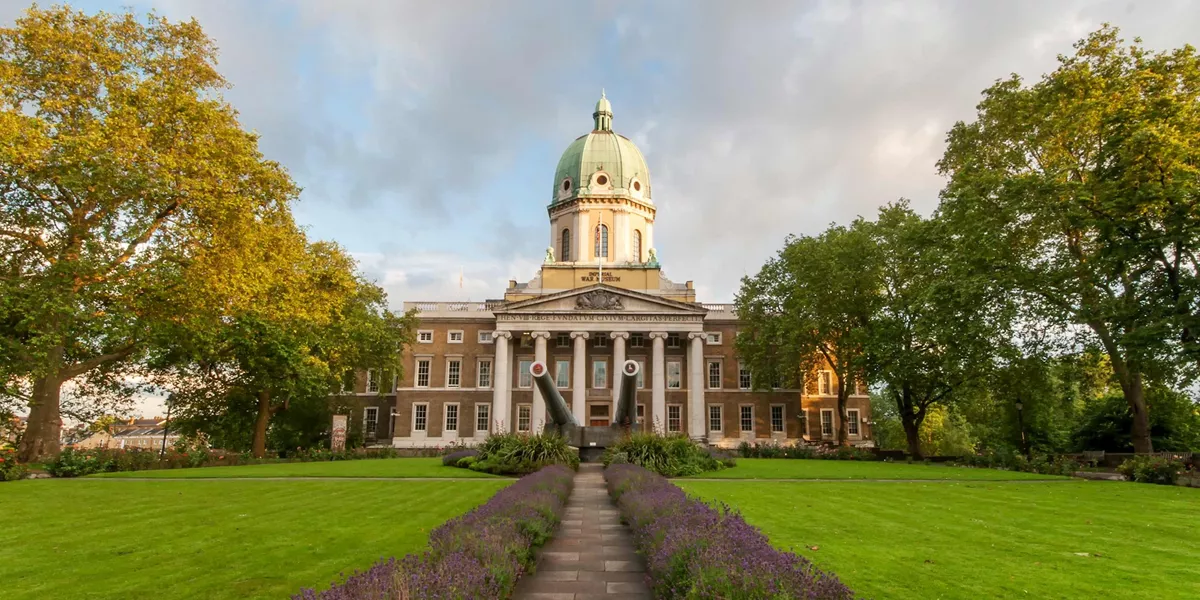
11 Day Battlefield Tour of UK, Belgium and France
11 days, 3 countries and 11 cities
Accommodation
10 Breakfasts, 4 Dinners
View day-by-day trip itinerary
Travel to the front lines of Europe, where brave soldiers once fought for freedom. On this epic battlefield tour through the countryside of Britain, Belgium and France, you’ll explore the tragedy and triumph of two World Wars.
Looking to book in a group of 9 or more?
Deals, savings and exclusive private touring options available plus if you need a different date or itinerary change we can create a custom trip. Contact us for more details
Trip code:
Low deposit from $200
Deposit protection
Free booking changes
Trip map & itinerary
Day by day itinerary
11 days itinerary trip from London to Paris visiting 3 countries and 11 cities
Download itinerary
Print itinerary
Expand all days
About this trip
Sightseeing highlights.
Explore London and Paris with a Local Specialist
Discover Normandy, Amiens, the Somme Region, Ypres, Brussels and Rouen
Visit the Imperial War Museum in London, the D-Day Landing Beaches, Saint-Sulpice church in Paris, Amiens Cathedral, military cemeteries throughout northern France and Belgium, the Australian National Memorial, the Caen Memorial, WWI & WWII Battlefields, the Dunkirk War Museum and evacuation beaches, and the Memorial Museum Passchendaele
View Buckingham Palace in London, the Eiffel Tower and the Arc de Triomphe in Paris and the Menin Gate
Travel highlights
Specific transfer information can be found here:
Airport Transfers
An expert Travel Director and professional Driver
Cherry-picked hotels, all tried and trusted
All porterage and restaurant gratuities
All hotel tips, charges and local taxes
Breakfast daily and up to half of your evening meals
Must-see sightseeing and surprise extras
Audio headsets for flexible sightseeing
Luxury air-conditioned coach with Wi-Fi in most countries or alternative transportation (such as rail journeys)
Optional Experiences and free time
Eurostar high-speed train from London to Brussels
On occasion, hotels of similar standard and location may be utilized.

MAKE TRAVEL MATTER® Experiences
Every one of our tours includes at least one conscious travel experience that supports one or more of the United Nations Sustainable Development Goals (SDGS). Look out for yours within the day-by-day trip itinerary.
Find out more

Net-zero by 2050
Travel knowing our 4-point climate action plan will ensure net-zero greenhouse gas emissions by 2050.

Support Local
Your tour directly supports local communities by visiting family-run businesses, UNESCO sites and places of cultural significance.

Sustainable Practices
Every part of our business, from trip design to how we run our offices, aligns to our 5-year sustainability strategy which ensures a positive impact on people, the planet and wildlife.


Philanthropic Efforts
Our not-for-profit, the TreadRight Foundation, invests in nature-based solutions to address climate change.
You’ll make a positive impact to people, planet and wildlife on this tour
LIVE, UNEDITED & INDEPENDENT TRAVELER REVIEWS
WWI and WWII Battlefields trip reviews
#ttbattlefields.
Real moments from real travelers, creating the greatest travel stories they’ll ever tell
Or search for something else

Help & Info
WE MAKE TRAVEL MATTER®
Unedited Reviews
Our Destination Management Companies
Frequently Asked Questions
Travel Updates
Media & Press Room
Do Not Sell or Share My Personal Information
Travel Planning
Get Your Free Brochure
Travel Insurance
Booking Conditions
Trip Deposit Level
Recommendations
Trafalgar Tours Limited is a proud member of The Travel Corporation family of companies.
#SimplyTrafalgar
Travel House, Rue du Manoir St Peter Port, Guernsey, GY1 2JH
Selected Region
United States
United Kingdom
New Zealand
South Africa
Copyright 2024 Trafalgar. All rights reserved.
Terms and Conditions
Privacy Policy
Cookie Policy
You will be redirected to your dashboard shortly. We will also call you back in 24 hrs .
- 5 Legit World War 2 Sites In Europe That Are A Must-Visit For All!
23 Mar 2023
For those you’ve grown up watching the documentaries on the European history, and if your love for history knows no boundaries, then it is likely that a trip to Europe will treat your inner history buff very well. The history bits can be intriguing and to witness it ‘live’ is a rare visual retreat. Europe is a place full of cautiously kept ancient remains whether it is an old church in the main town or a historical building with age-old relevance.
There is always something to be seen from the past of Europe’s each city and some of the must visit places are that of the World War 2 sites in Europe that lie deep and buried in the dark ages.
Other than being historical in nature, these sites offer bright sights and breath-taking landscapes which not only offer a historical reason to tour the place but also a scenic background, civilized culture, recreation facilities, and an overall pleasantry aura to learn about its history, comfortably at our own convenience.
Much of the Second World War movement was led and dominated by the Nazi Regiment under the command of Adolf Hitler. Hence, the Holocaust period or the Jewish part of Europe’s history is of great relevance that has been preserved through these World War 2 sites in Europe in order to relate to its great past.
1. Dunkirk, France
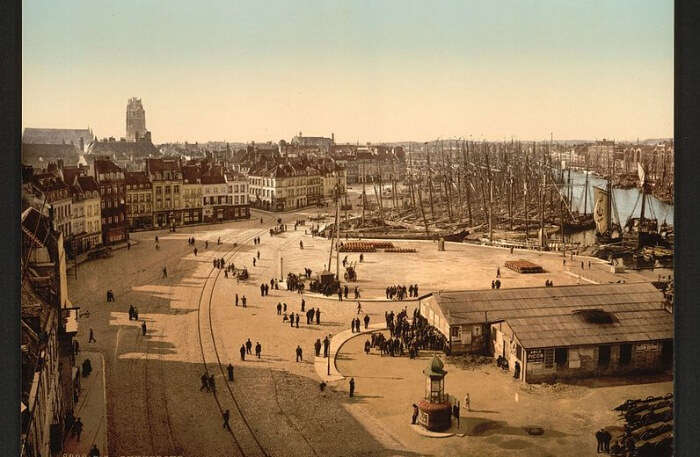
Image Source
This is the place where the war took place on the beaches. Dunkirk lies to the north of France and is famous as it was here where the British and French troops fought against the German army during the World War 2. The Dunkirk evacuation eventually led to the defeat of the German troops. It was nothing short of a miracle when the British, Belgian, and French troops were isolated on the Dunkirk beach and harbour.
Today, a tourist has an option to catch a ferry from Dover to Dunkirk and explore the battleground while visiting the famous beaches of Dunkirk . There is also a famous Dunkirk 1940 museum which houses the war artefacts to walk you through the beach battleground. In addition to that, the visitors must tour the war sites like the Port Museum, three boats of Duchesse Anne, the barge guide, the lightship Sandettie, the Saint-Éloi church, and the town hall.
Also, a boat trip to explore the port and understand its installations is a good way to learn about the past and enjoy the beach touristy flair. There are other places of interest, giving tourists enough time to indulge in the history of the place by relaxing on the fine sand beaches and enjoying the beauty of the shore.
Suggested Read: In Pictures: 30 Most Beautiful Cities In Europe That Will Make You Want To Take The EuroTrip Now!
Europe Holiday Packages On TravelTriangle
Explore the most beautiful places to visit in Europe, from Paris to the Venice canals and from the Greek islands to the Swiss alps. Book customized packages by expert agents on TravelTriangle. Inclusive of airport transfers, cab, resort, sightseeing and meals. Best holiday experience Guaranteed. Book Now

Magnificent Switzerland Holiday 6D/5N Package @ Rs 69,999
Plan your trip today!

Magnificent Europe Tour 7D/6N Package @ Rs 70,975
Get quotes from multiple travel experts.
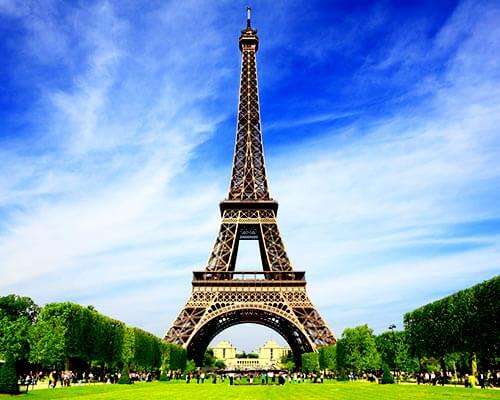
France & Switzerland Tour Package 8D/7N @ Rs 90,000
Compare & customize quotes before booking.
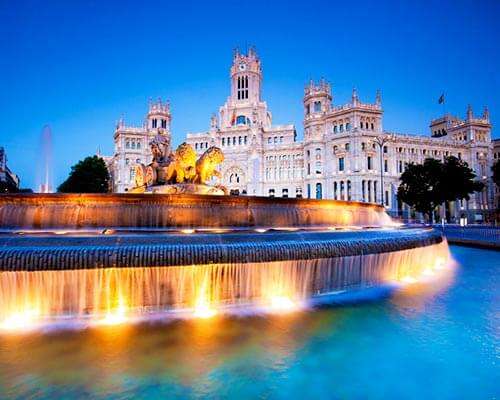
Scintillating Spain & Portugal Tour 11D/10N @ Rs 101,150
Have Questions? Talk to our travel experts today.
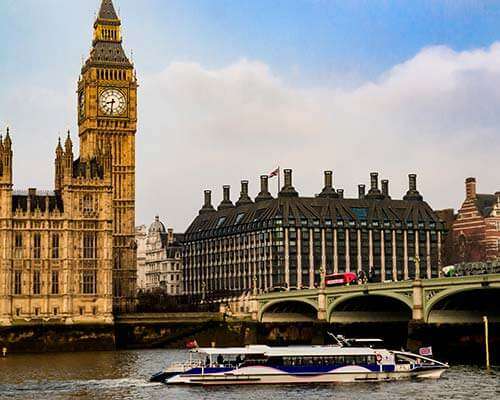
6 Country Europe Tour Package 12D/11N @ Rs 118,650
Best prices guaranteed. EMI option available.

See more at TRAVELTRIANGLE.COM
2. Berchtesgaden, Germany

Located near the Austrian Border, Berchtesgaden is a town full of scenic and mountainous beauty. So much for the relaxing nature of Berchtesgaden, that even Nazi officials including Adolf Hitler could not ignore the place. As a result of this, the town emerged as the secret ground for official and personal gatherings of the Nazi regiment.
Much famed as Hitler’s mountain hideaway, Berchtesgaden is popularly called the Eagle’s Nest which has a monumental entrance and takes its visitors through a tunnel and then in a brass elevator, that connects up till the Obersalzberg headquarters. There is plenty to watch and observe here about Hitler’s luxurious stay and taste. The Documentation Centre, and the original Obersalzberg construct including the living room and windows, are a must visit for the history buffs.
Beyond the concrete walls, there is enough ground for recreation and relaxation. The open-air café surrounded by the magnificent Bavarian mountain display is both picturesque and fresh to soak in all the touristy vibes.
Suggested Read: Summer In Estonia: A Pocket Guide For A Tour Down The Country’s Most Extra Places
3. Jewish Cemetery, Prague
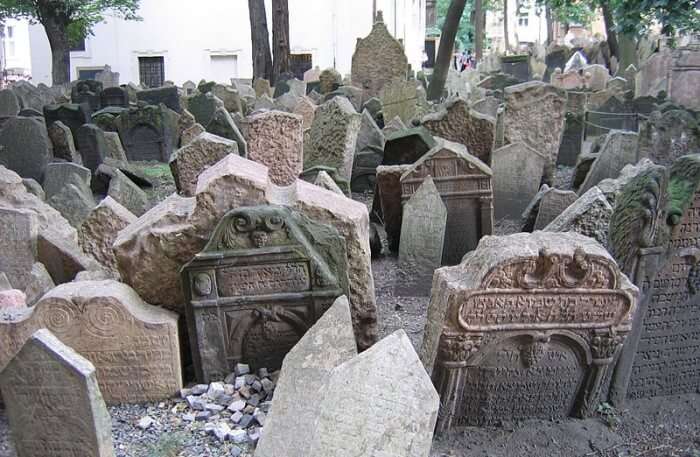
Lying ahead of the Prague Old Town is the Jewish Quarter . There is enough space to walk you through the Jew history including the Children’s Museum, four synagogues, and the most infamous Jewish Cemetery. You can embark on a specified history tour starting from the Old Town, enjoying the scenic landscapes of Prague , and then head to the Jewish Quarter to get a glimpse of the history of Jews who suffered a massive community destruction under the Nazis led by Adolf Hitler.
The first sight of the Jewish Cemetery will give you goosebumps and a fair idea of what transpired during the Hitler regime, before and during the World War 2. There are layers and layers of tombstones built on a small acreage as the war atrocities were so much that the Jews were not given enough space to bury or pay homage to their loved ones. Because of which, over 12,000 tombstones were laid over each other in a makeshift sort of arrangement. There are tombstone overlapping one over the other so that it appears to be death and human criminality further marginalized to the visitors.
It is heart-wrenching and evoking to note that Jews were so helpless during this period that they did not even have a burial ground to put their loved ones to rest. On a positive side, the site tour is a refreshing sight of how people lived during this time. The beautiful row of houses, the stunning synagogues, and the small boutique shops that sell the Jewish garments or accessories are a must visit.
Suggested Read: 6 Most Romantic Places In Central Europe For Couples
4. Dachau Camp, Munich

Dachau is a popular medieval town as well as a residential area in north-west zone of Munich that houses one of the memorable World War 2 sites in Europe of the Dachau Concentration Camp. It is a must visit for those who are keen to catch a glimpse of how Nazi camps were organised to hold the political prisoners.
The Dachau Camp gives a clear picture of life at the camps, their lodge facilities, their work-life, the prisoner hierarchy, the gas chambers, the cremation ovens, and the memorial shrines. In short, anything and everything one may need to know about the human atrocities done in a Nazi Camp can be traced here.
Much of the original construction and its layout has been kept intact. It is a visual retreat for history experts. There is a documentary show and there is a museum, which provides enough dope on the history from the camp period till the World War 2.
Besides the camp history, the town of Dachau is a hidden gem from the past. The complete layover of the place is a pleasant walkthrough, especially for people who seek solace and some time away from the crowd. With around 45,000 people living here, Dachau has many open-air cafes that offer a relaxing vibe to chill with your loved ones. Also, it houses an 18th-century Renaissance castle with a lovely lookout garden that is located on an elevation and serves as a prominent spot in the otherwise unwinding town streets.
5. Normandy, Paris

Normandy in Paris is often flocked by the travelers who love beach destinations as this city serves as a home to many beaches where the World War 2 was fought. The famous Omaha Beach has reserved memories of the war and many things to learn through stories and historical facts. There is also a visitor centre which will guide you through other World War 2 sites in Europe like that of the American Cemetery, the Caen Memorial, and so on.
It is advisable to appoint a guide and take a guided tour in order to learn more about the sacrifices made during the war, which ultimately led to freedom of the French Citizens. Your visit to Normandy from the city centre of Paris will be full of exquisite countryside views. Also, make sure you stop on your way to the French northwest coast, to explore the historical Caen Memorial which is a site devoted to the war memories.
Your next stop would be the German defense site of Pointe du Hoc that commemorate the fight between the German and American troops. Post that, you can also visit the American Cemetery which serves as the burial ground for US military members.
Further Read: 20 Best Places To Spend Christmas In Europe Where Festivities Breathe Magic Into The Air!
Intrigued much? Apart from walking through the rich history of the place, relish the scenic beauty of nature in the backdrop while exploring the charm of these historical sites and take respite in the small pleasures of life on your next trip to Europe .
Looking To Book An International Holiday?
Book memorable holidays on TravelTriangle with 650+ verified travel agents for 65+ domestic and international destinations.

Trip to Sri Lanka at Rs 13,500/-
Plan Your Vacation Today!

Trip to Singapore at Rs 20,499/-
Get Quotes From Local Experts

Mauritius Holiday Starting at Rs 65,000/-
Talk to Our Experts Today

Maldives Honeymoon Trip at Rs 39,800/-
Pay with easy EMI Option

Europe Trip at Rs 89,999/-
All Inclusive Deals

Vacation in Dubai at Rs 27,499/-

Hong Kong Holiday at Rs 24,999/-
Money Safe Guarantee

Thailand Holiday at Rs 7,999/-
Flights Excluded
People Also Read
Places To Visit In France Places To Visit In Greece Places To Visit In Switzerland
Recent Posts
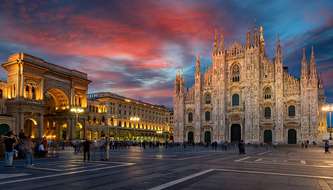
10 Endroits touristiques en Italie qui sont incroyablement magnifiques
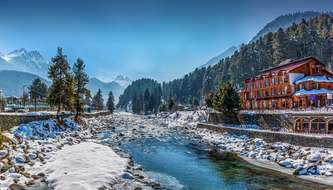
2024 में स्वर्ग में 19 हनीमून के लिए कश्मीर में घूमने की जगहें

2024 में शानदार छुट्टियाँ बिताने के लिए 10 श्रीनगर के पास घूमने की जगहें!

30 कश्मीर में घूमने घूमने की जगहें, 2023 में कोई भी मिस नहीं कर सकता
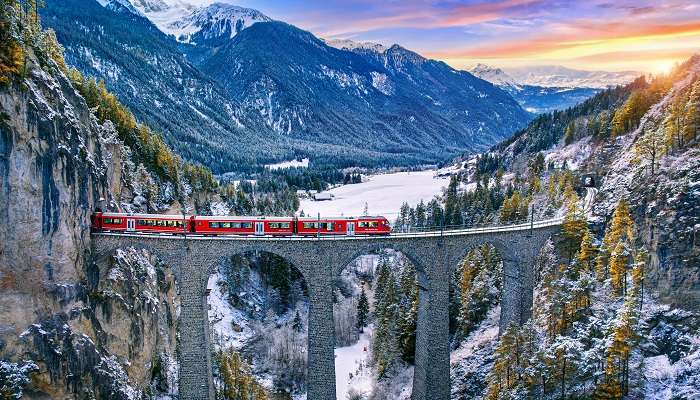
La Suisse en juin: pour une expérience de voyage merveilleuse au milieu des sereines Alpes suisses en 2024.
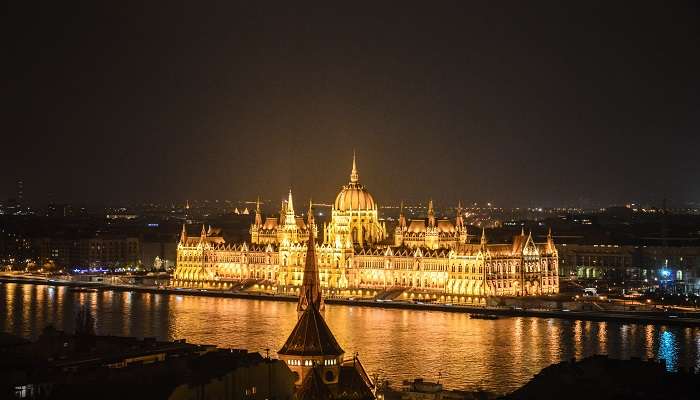
17 Meilleurs endroits à visiter en Hongrie en 2024, le joyau de la couronne d’Europe!
Trending Blogs

20 Mysterious Places In India To Visit In 2023 More Bizarre Than The Bermuda Triangle

10 Scariest Roads In India That Are A Driver’s Nightmare

101 Places To Visit In India Before You Turn 30 in 2024

35 Exotic Places To Visit In December In India 2024 To Enjoy A Surreal Vacation

60 Best Honeymoon Destinations In India In 2024

95 Best Honeymoon Destinations In The World In 2023 For A Romantic Escape!
Best Places To Visit In India By Month
Best places to visit outside india by month.
- TravelTriangle
- International
- Europe »
- Tour Packages
- Honeymoon Packages
- Family Packages
- Budget Tour Packages
- Luxury Tour Packages
- Adventure Tour Packages
- Group Tour Packages
- Maldives Tour Packages
- Bali Tour Packages
- Dubai Tour Packages
- Singapore Tour Packages
- Thailand Tour Packages
- Europe Tour Packages
- Sri Lanka Tour Packages
- Tour Packages From Delhi
- Tour Packages From Mumbai
- Tour Packages From Bangalore
- Tour Packages From Chennai
- Tour Packages From Kolkata
- Tour Packages From Hyderabad
- Tour Packages From Ahmedabad
- Thailand Tourism
- Bali Tourism
- Singapore Tourism
- Maldives Tourism
- Mauritius Tourism
- Dubai Tourism
- Europe Tourism
- Hotels in Thailand
- Hotels in Maldives
- Hotels in Mauritius
- Hotels in Bali
- Hotels in Dubai
- Hotels in Singapore
- Hotels in Sri Lanka

Sign Up Today
Start your 14 day free trial today

The History Hit Miscellany of Facts, Figures and Fascinating Finds
10 Places to Explore World War Two’s History in England
Experience the sights of wartime england..

19 Dec 2022
World War Two was one of the defining moments in British History. Unlike many conflicts, the war directly impacted regular people – especially during the Battle of Britain and The Blitz – along with its effects on everyday life, including rationing and black-outs.
There are many locations where you can experience the sights of wartime England and explore the history of those who fought. Here’s our guide to just some of England’s significant World War Two locations, museums and monuments.
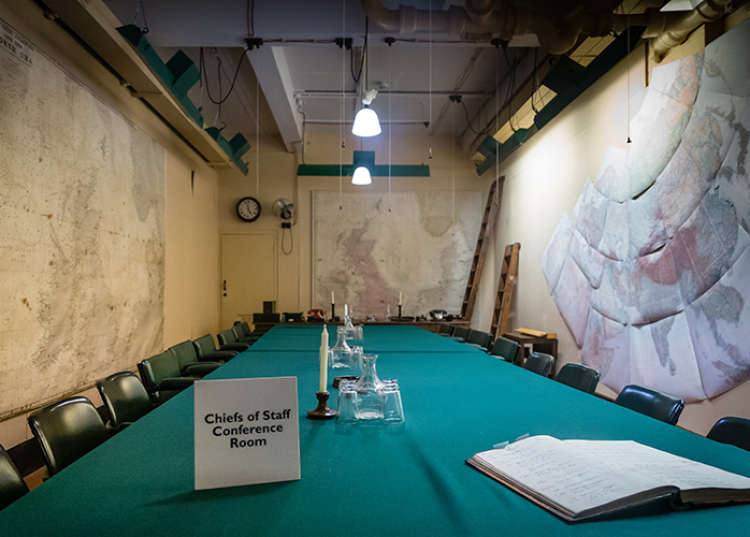
1. The Cabinet War Rooms
Secreted beneath the streets of Westminster, the Cabinet War Rooms are part of the underground bunker complex now known as the Churchill War Rooms in London where Britain’s wartime government operated during World War Two.
Today, visitors can walk through the corridors from which Winston Churchill directed Britain and stop at the Churchill Museum. Open between 9.30am and 6pm, the museum tells a story through personal items and artefacts from Churchill’s childhood to his military and political career.
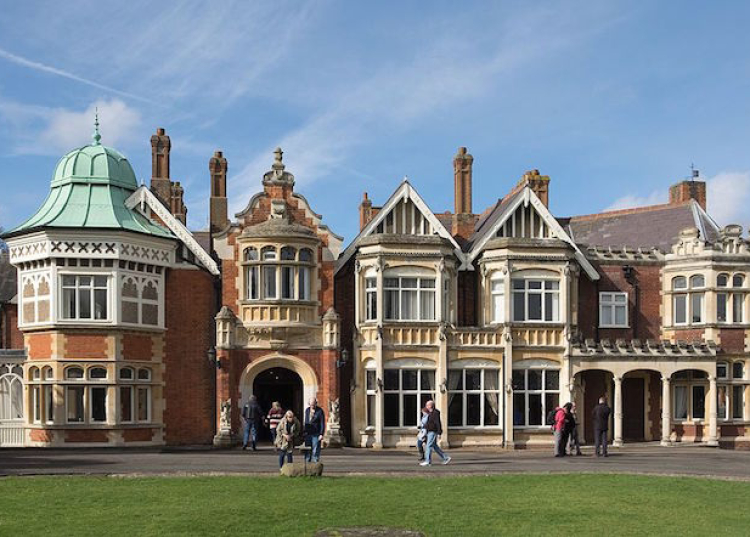
2. Bletchley Park
Bletchley Park is an English country house and estate in Milton Keynes, 50 miles north of London . Originally the eccentric home of the Leon family, Bletchley Park then came into the possession of MI6, becoming in 1938 a vital British intelligence centre.
Over the course of the ensuing Second World War, a team of British codebreakers at Bletchley Park – then known by the codename Station X – managed to decipher the machinations of Enigma , the highly effective code encryption machine used by the Nazis. The British government were thus finally able to intercept German messages, and could begin to map their enemy’s military movements.
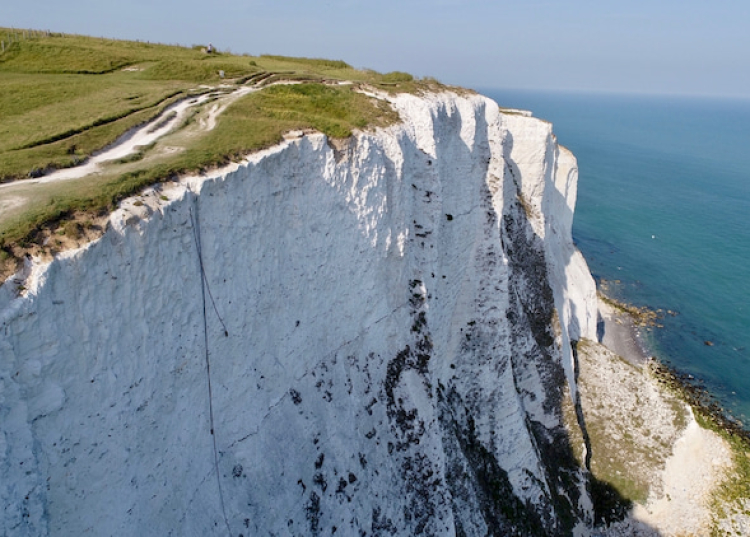
3. White Cliffs of Dover
The famous White Cliffs of Dover stand guard at the Gateway to England. In some places over 300 feet high, the White Cliffs are a symbol of the United Kingdom and a reassuring sight to travellers. The cliffs also have a special place in our national history – used for defence in both World Wars, the Cliffs have been immortalised in song, in literature and in art.
During the Second World War, the White Cliffs of Dover were Britain’s frontline from 1941 and large gun batteries were constructed along the coast. On the cliffs close to South Foreland, important gun positions were built which would attack enemy forces across the Channel. Although quickly constructed and only fired sparingly, the guns were an important aspect of the defence of Britain.
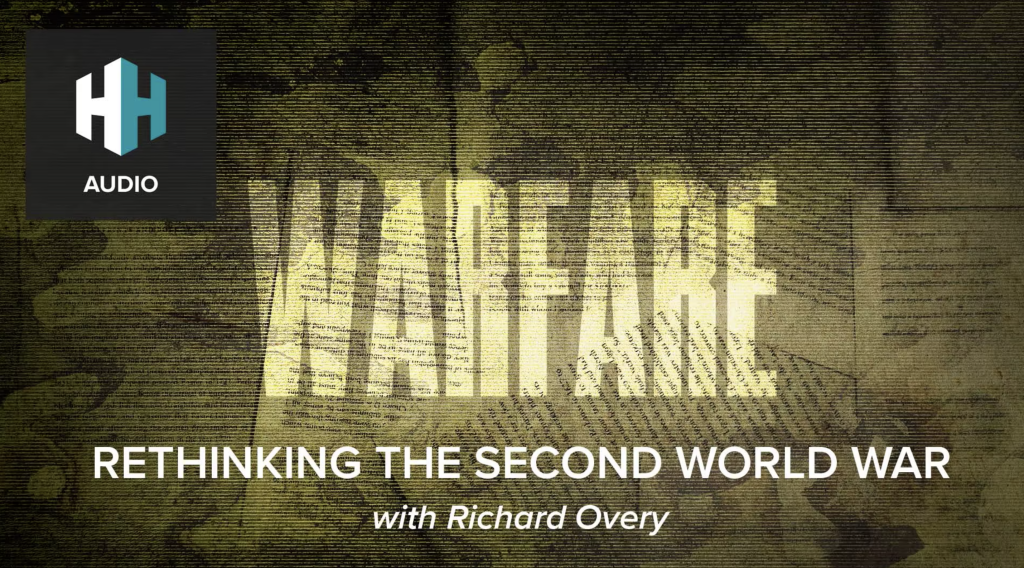
4. Southwick House
Southwick House is a Grade II listed 19th-century manor house, 5 miles north of Portsmouth, and is the site from which D-Day was launched.
The village of Southwick was later entirely taken over by Allied Command, and Southwick House itself was used as the advance command post (Sharpener Camp) for the Supreme Headquarters Allied Expeditionary Force (SHAEF). In 1944, in the months leading up to D-Day, the house became the headquarters of the main allied commanders, with General Eisenhower, Admiral Ramsay and General Montgomery all based here.
Eisenhower made his decision to delay D-Day by 24 hours (due to poor weather) in the library of Southwick House, and indeed the whole D-Day operation was organised from here.
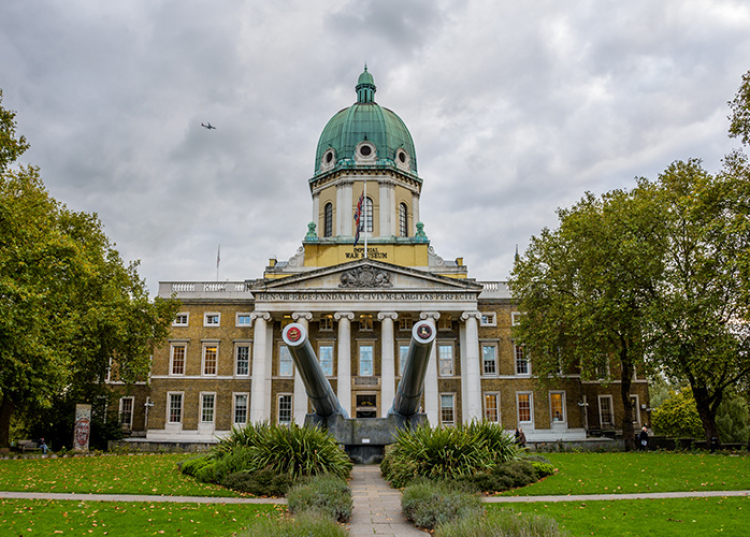
5. Imperial War Museum
The Imperial War Museum is dedicated to exploring worldwide conflicts throughout history. The exhibitions in the London Imperial War Museum cover, amongst other things, different aspects of the First and Second World Wars including military history, the Holocaust, women’s roles in the conflicts, wartime artwork and the political issues of the time.
At the beginning of the Second World War, the museum’s remit was extended and a collecting programme began. Vulnerable collections were evacuated to stores outside London and the museum was closed to the public from September 1940 to November 1946. There were more than 40 incendiary hits on the building during the war, which caused varying amounts of damage.
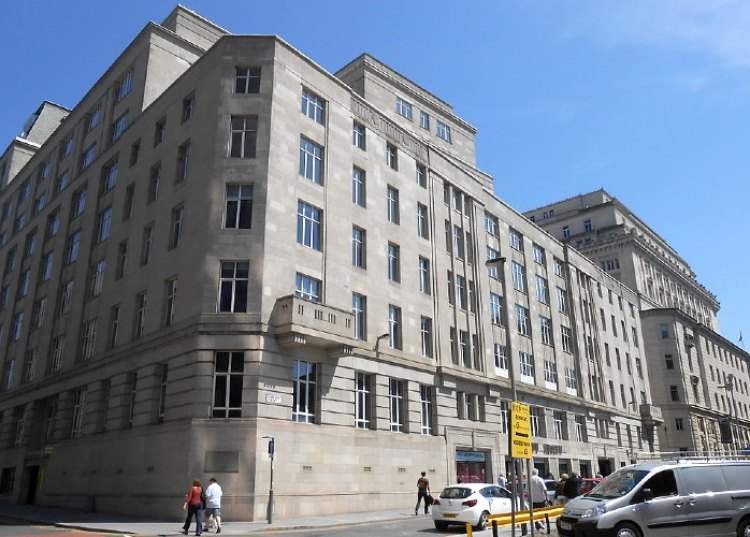
6. Western Approaches Museum
The Western Approaches Museum in Liverpool sits within a World War Two bunker complex which served as the combined services command centre during the Battle of the Atlantic – the Allied fight against the German U-boat offensive in the Atlantic ocean.
A bunker was built below Derby House, with extensive reinforced concrete protection given to the basement. It was bomb proof and gas proof, with a 7ft thick concrete roof and 3ft deep concrete walls, containing 100 rooms covering 55,000 square feet.
The museum allows you to step back in time and undertake a unique experience, where you don’t just see the history but can actually venture inside to experience it first-hand.
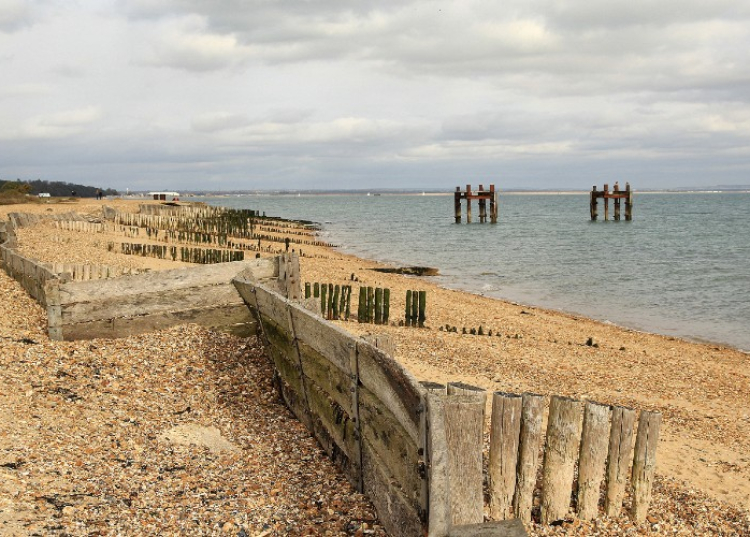
7. Lepe Beach
The sand and shingle shore at Lepe and nearby Stone Point was used as a troop embarkation point for D-Day, for soldiers camped in ‘Marshalling Area B’.
Lepe and the surrounding area came under the control of the shore station HMS Mastodon, and many hundreds of troops with their equipment, vehicles and ammunition were hidden along the narrow roads and in numerous closed camps hidden in the wooded areas across the New Forest in the build-up to D-Day .
From 31 May 1944 onwards, soldiers made their way down to the coast to embark onto the ships and landing craft that would take them to Normandy – some on the Lepe shore, others at sites to the east or west, notably in Southampton. Vehicles were loaded earlier, but the soldiers themselves embarked only just before D-Day, followed by those who would be landing on subsequent days.
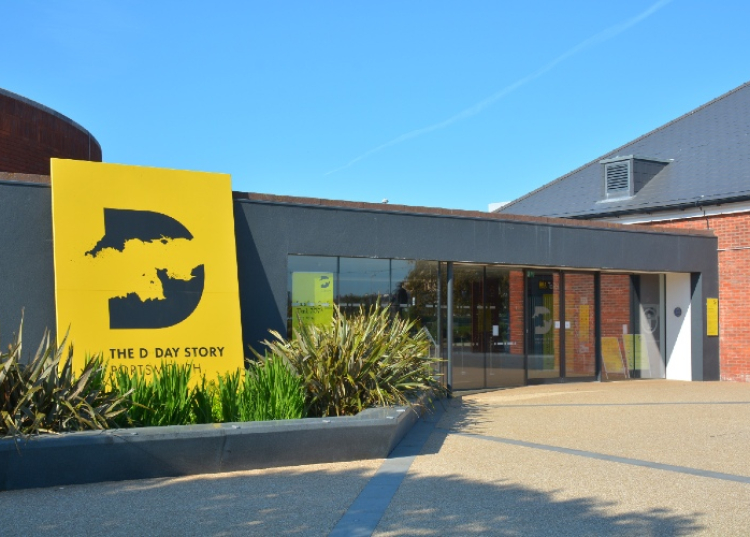
8. The D-Day Story, Portsmouth
The D-Day Story is the only museum in the UK dedicated to the Allied Invasion in June 1944 – telling the unique personal stories behind this epic event.
Whilst the Normandy landings took place in France, the whole operation depended upon dozens of embarkation areas along the whole stretch of the south coast of England , where troops and supplies were held before loading onto the ships and landing craft.
The D-Day Story museum tells the story of this, as well as that of D-Day itself and the Battle of Normandy. It also covers the story of the liberation of Europe from Nazi Germany occupation – through the personal possessions and words of the people who took part, as well as using imagery, audio-visual presentations, authentic vehicles and hands-on interactives help to bring the story to life.
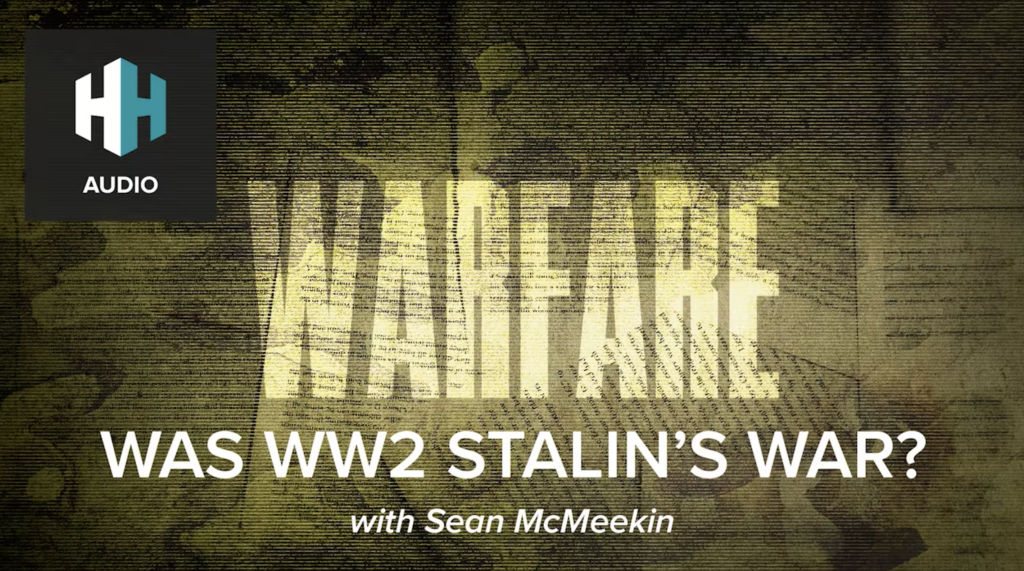
9. The Royal Air Force Museum London
The Royal Air Force Museum (RAF Museum) is located on the former Hendon Aerodrome in Colindale, North London. The museum includes five buildings and hangars which showcase a series of exhibitions dedicated to the history of aviation and which celebrate and commemorate the first 100 years of the RAF and its role today.
The museum site was one of the first civilian airfields, acquired by Claude Grahame-White in 1911. In 1914, the aerodrome was requisitioned for Home Defence during the First World War as part of the RAF Hendon Royal Naval Air Station, training new pilots in the flying schools on site.
Following the outbreak of World War Two in 1939, the site at Hendon became an operational RAF station again – home to No. 24 Transport and Communications Squadron. It also briefly served as a fighter station during the Battle of Britain.
The museum housed on the site today was officially opened on 15 November 1972 by the Queen. Housing a fantastic collection of over 100 aircraft, the RAF museum has an impressive selection of planes including some of the most famous ever to have graced the skies.
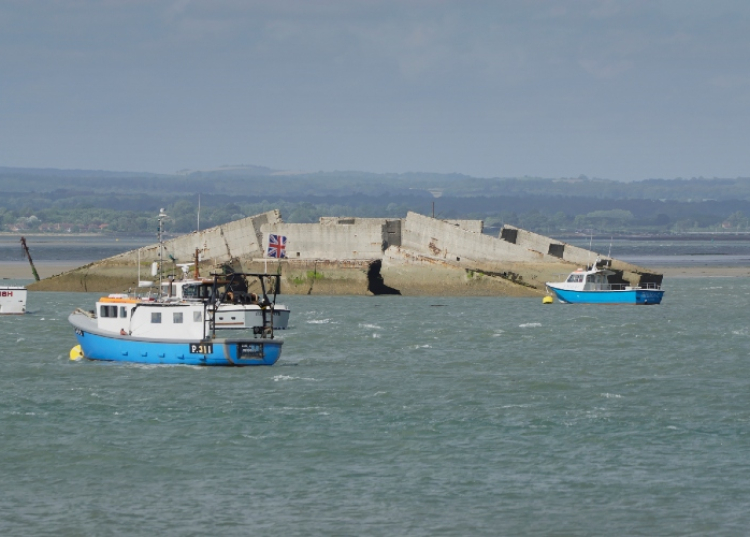
10. Langstone Harbour and Hayling Island
Langstone Harbour and Hayling Island were used as sites for the construction of components of the ‘Mulberry Harbours’ – the artificial harbours created by the Allies to enable them to land their forces in Normandy on D-Day.
As part of the planning for Operation Overlord (codename for the Battle of Normandy) and due to the lack of big port facilities in Normandy, it was decided that artificial harbours were needed in order to quickly offload the heavy and bulky crucial cargo needed to support a successful invasion.
These artificial harbours, codenamed Mulberry, were built in Britain before being towed across the Channel with the Allied invasion force on D-Day, and then assembled by the army once in the waters surrounding France.
27 Meaningful Places to See World War II Sites in Berlin
This post contains links which earn me a small commission at no cost to you.
Ali Garland, Berlin expert & long term resident What to Do
World War II shaped Berlin’s and Germany’s history, and the horrible things that occurred are never forgotten. If you’re interested in World War II history, this extensive list of places to see World War II sites in Berlin is for you.
Berlin has many World War II sites and attractions that are worth visiting to learn about this history and to remember the many victims.
Since many of the atrocities that took place actually happened before the war started, I’ve included memorials and museums that cover the time period leading up to the war.
In this list of Berlin World War 2 attractions , you’ll find museums, memorials, and other sights that have ties to the war, the Holocaust, and the events in the years before war broke out.
Please visit these places with respect. Many of these sites honor tragic events and deceased victims.

What you'll find here
Tours that focus on World War II in Berlin
Taking a tour can be a great way to see several World War II sights in Berlin while also learning the history from an expert guide. Here are a few we recommend.
- Berlin Small Group Third Reich and Cold War Walking Tour
- Berlin World War II & Third Reich Tour
- Sachsenhausen Concentration Camp Half-Day Tour From Berlin
- Third Reich Berlin Walking Tour – Hitler and WWII
- Berlin Jewish History Walking Tour
Where to stay in Berlin
Berlin has lots of great neighborhoods for you to stay in and explore. If you’re visiting Berlin for the first time, it might be best for you stay somewhere central.
Many of the attractions are in Mitte or easily connected to Mitte by Berlin’s public transport , so you should stay somewhere in that region. Here are a few hotels we recommend.
BUDGET: Circus Hostel Popular hostel with a bar/brewery downstairs
MIDRANGE: Circus Hotel Centrally located near restaurants & transport
UPSCALE: Westin Grand Centrally located, can chisel off your own piece of the Berlin Wall
UPSCALE: Westin Grand Luxury hotel where you can chisel off your own piece of the Berlin Wall
APARTMENT: Adina Apartment Hotel Kitchenette; near grocery stores, shopping, Museum Island
For a more detailed look at the different neighborhoods and our hotel recommendations, check out our guide to where to stay in Berlin .
Or read my full review of the 25Hours Hotel in Charlottenburg with fantastic views of the Zoo and Tiergarten.
Where to find World War II sites in Berlin
From the well known memorials and museums to the ones you may not have heard about, this list of places to see World War II sites in Berlin is a great way to explore the city’s dark history.
Also, check out our list of the best World War II and Cold War sites in Berlin .
Map of Berlin WWII attractions
All the memorials, museums, and other WWII sites I mention in this article are on this map, except the Stolpersteine since there are so many locations of them throughout the city.
Memorial to the Murdered Jews of Europe
The Memorial to the Murdered Jews of Europe, often referred to as the Berlin Holocaust Memorial , honors the large number of Jewish people who died at the hands of the Nazis. This is one of the most important World War II sights in Berlin, and it’s probably already on your Berlin bucket list .

The memorial consists of 2,711 concrete blocks of varying heights, and the ground they sit on is an uneven slope similar to a wave. It’s supposed to make you feel uneasy.
The information center is inside and showcases letters, diaries, photographs, and biographies of the victims to help personalize the experience.
Entrance is free. The outside section is open 24/7, but check opening times for the information center. Photography is allowed (no flash inside) but please be respectful.
Do not sit on or climb on the cement slabs or take selfies. This is a place to reflect and remember those who were murdered.
Location: Cora-Berliner-Straße 1, 10117 Berlin

A small but powerful memorial sits in the middle of Bebelplatz along Unter den Linden , an important sightseeing area that’s probably already on your Berlin itinerary . If you don’t look down, you might miss it.
It’s a square glass panel, and when you look down, you’ll see empty shelves. This is a sight that remembers what was lost on May 10, 1933 when the Nazis burned approximately 20,000 books whose stories they didn’t want told.
Location: Bebelpl. 1, 10117 Berlin

Join our Facebook group!
Have questions about planning your trip to Berlin?
Join the Facebook group here to chat with Ali (she runs this site) and other people who have been to Berlin for tips.
Topography of Terror
The Topography of Terror Museum is one of the more interesting things to do in Berlin because it sits on the location that was the headquarters of the Gestapo and the SS between 1933 and 1945. This is where persecution and killings of Nazi opponents were organized, and where the genocide of Jews, Roma, and Sinti was coordinated.

This powerful museum now serves as a place to remember history and warn us from repeating the terrors of the past. The exhibits here use photographs and documentation to tell visitors about the crimes that were organized here, plus there are excavation sites you can view through glass windows.
Topography of Terror is definitely one to add to your list of places to see World War II sites in Berlin. Read my full guide to visiting Topography of Terror for more information and tips.
Location: Niederkirchnerstraße 8, 10963 Berlin
Stolpersteine

Every so often when you’re walking around Berlin, glance down at the sidewalk below you. You might see Stolpersteine, which are small brass squares that honor victims of the Nazis.
These “stumbling stones” sit in front of the victims’ last known address before they were taken away. Their name, date of birth, date of death if known, and where they were taken are among the details listed on these humble but meaningful memorials.

Nazi Forced Labor Documentation Center
Managed by the Topography of Terror Foundation, the Nazi Forced Labor Documentation Center in the Schöneweide neighborhood is the location of a former forced labor camp. This is just one of over 3,000 that once existed in the Berlin area.
In the exhibition spaces and in the air raid shelter, you can view inscriptions, letters, and biographies of the people who were imprisoned at this labor camp. You can also tour some of the barracks, view the living conditions, and learn about the every day lives of the prisoners. This is one of many free museums in Berlin .
Location: Britzer Str. 5, 12439 Berlin
Reichstag Building

The Reichstag Building is the current seat of the German Parliament and one of the most historic landmarks in Germany . It also has quite a history with both World War II and the Cold War.
It was used by the German government until 1933 when a fire greatly damaged the building. Marking the end of the Weimar Republic and the strengthening of the Nazi dictatorship, the building was neglected and suffered more damage during WWII.
After the war, when Berlin was divided into East and West, the Reichstag Building sat in the West just steps from the Berlin Wall. The seat of the German government has moved to Bonn, and though the building was somewhat repaired, it was seldom used.
After reunification, the building was redesigned and restored. It opened in 1999, and the German Parliament returned here once again.
Today you can take a free tour of the Reichstag Building , but you must register well ahead of time. It’s one of the most popular free things to do in Berlin .
Location: Platz der Republik 1, 11011 Berlin
Jewish Museum
The Berlin Jewish Museum tells the stories of Jewish people in Germany from the Middle Ages to present day. The whole museum, inside and out, is designed to be part of the experience of learning about the diverse Jewish culture and the gaps made by the Holocaust.
You can explore three different sections of the museum that teach about different aspects of Jewish life, culture, and history in Germany. The museum uses a lot of symbolism, which makes this creative space more impactful. For example, in one area, uneven ground conveys a feeling of uncertainty.
This is a fantastic museum to visit if you’re interested in the history of the Jewish people in Germany.
Location: Lindenstraße 9-14, 10969 Berlin
Platform 17 Memorial
At the Grunewald S-Bahn station in the southwest corner of Berlin, you can see the Platform 17 Memorial. This station was used by the Nazis in the early 1940s to transport Jews to concentration camps.
Since it’s not centrally located, it was easier for the Nazis to make sure their prisoners weren’t seen while lining up to board the train. Today this memorial honors those who left from this station and were taken to horrible places where they were most likely killed.
The memorial was sponsored by Deutsche Bahn, Germany’s railway company, and track 17 is no longer used by any trains. The Platform 17 Memorial doesn’t take long to visit and is a 25 minute Sbahn ride from the Alexanderplatz station.
Location: Am Bahnhof Grunewald, 14193 Berlin
>>Check out these unique things to do in Berlin .
Anhalter Bahnhof

A little south of Potsdamer Platz is Anhalter Bahnhof, the remains of a train station. It was once one of the most important train stations in Berlin, and part of Berlin’s World War II history.
Unfortunately during the Nazi era, it was one of three stations in Berlin used to deport Jews to concentration camps. The station was damaged during WWII, but was still operational for several more years.
Anhalter Bahnhof is located in the former East. When the Soviets started using Ostbahnhof as the main train station in the East, Anhalter Bahnhof was no longer needed, and operations ceased in 1952.
Location: Askanischer Pl. 6, 10963 Berlin
>>Read: 13 Places to See the Berlin Wall + 9 Other Wall Attractions
Olympic Stadium

The Olympic Stadium in Berlin is another World War II site to visit. Built by renowned architect Werner March, this geometric masterpiece can hold up to 100,000 people.
But it has a dark history. During the Nazi regime, the Olympic Stadium was used to host propaganda events.
Today it’s an open-air venue used for concerts and other large events. If you visit the stadium on an event-free day, you can take a tour of the stadium and learn about its role during the Second World War.
Location: Olympischer Platz 3, 14053 Berlin
>>Read: 17 Top Sights in Berlin From a Local Who Knows
Kaiser Wilhelm Memorial Church

This famous Berlin landmark is one of the most important churches in Berlin. The original church was built here in the 1890s, but was damaged in WWII air raids in 1943.
Interestingly, the church was not rebuilt and instead has been left much as it was after World War II. Its been nicknamed by Berliners as Der Hohle Zahn—literally “The Hollow Tooth”.
This church is a stark reminder of the destruction of war and an interesting World War II site in Berlin.
Location: Breitscheidplatz, 10789 Berlin
Soviet War Memorial in Treptow Park
Located in Berlin’s Treptow Park in the southern part of the city, the Soviet War Memorial commemorates 7,000 of the 80,000 soldiers of the Red Army who lost their lives in the Battle of Berlin in 1945.
Part memorial, part cemetery, this is one of several Soviet War Memorials in Berlin, and was inaugurated in 1949, four years after the war. It’s an impressive example of a soaring Soviet monument.
Location: Puschkinallee, 12435 Berlin
Soviet War Memorial in Tiergarten

The Soviet War Memorial in Tiergarten Park is the other well known one in Berlin. It’s large and even includes a tank.
The memorial’s location was strategic – it’s within the park along Strasse des 17 Juni, not far from the Victory Column, the Reichstag Building, and Brandenburg Gate . Of all the Soviet War Memorials in and near Berlin, this is the only one that was built in the former West.
There are several other Soviet War Memorials in and near Berlin, but these are the two that are most central.
Location: Str. des 17. Juni 4, 10557 Berlin
Sachsenhausen Concentration Camp
One of the more popular day trips from Berlin , the Sachsenhausen Concentration Camp is located just outside the city limits, reachable on public transport with a ticket that includes zone C.

Not only did tens of thousands of people die here, but this concentration camp was the headquarters of the whole concentration camp system. Even after the Nazis were defeated and World War II ended, the Soviets used Sachsenhausen as a camp for their own political enemies, and thousands more died over the next five years.
Though this is a somber site, it’s important to learn about those who suffered and died here. Read more about how to get to Sachsenhausen from Berlin .
Entrance is free, but consider taking a guided tour like this one to enrich your experience: Sachsenhausen Memorial Half-Day Tour From Berlin .
Location: Str. d. Nationen 22, 16515 Oranienburg
Silent Heroes Memorial Center
This memorial center remembers the Jewish people who resisted persecution before and during World War II and those who helped them. The exhibit shows the plight of those who faced deportation and worse, and how they decided to go underground in order to resist.
Learn about their living conditions and how people tried to help them, including both successful and failed attempts.
The Silent Heroes Memorial is actually part of a bigger memorial center called the German Resistance Memorial Center, which honors many who resisted the Nazi rule.
The center’s location is also significant as it is the historic site of the attempted coup of July 20, 1944.
Location: Stauffenbergstraße 13-14, 10785 Berlin
Flak Tower in Humboldthain Park

From 1940-41, the Nazis built bunkers and set up an anti-aircraft gun tower in Humboldthain Park. After the war, the bunkers were mostly filled in, and nature began to reclaim the area.
Today not much is visible of its past, but it’s an interesting World War II site to see. And from the viewing platform at the top of the hill, you’ll be rewarded with some excellent views of Berlin .
The bunkers are now home to bats during the winter, but in the summer, Berliner Unterwelten offers tours of some of the underground sections of the demolished flak tower.
Location: Hochstraße 5, 13357 Berlin
Berlin Story Bunker
Near Anhalter Bahnhof is the Berlin Story Bunker museum, which is a bunker from World War I, not II. It tells the history of Berlin over 800 years.
One of the most interesting exhibits is about Hitler, how he came to power, why so many voted for him, and other questions and answers about the Nazi regime and the events leading to and during World War II.
If you’ve ever wondered how it all happened, this is an excellent museum to visit.
Location: Schöneberger Str. 23A, 10963 Berlin
Memorial SA Prison Papestrasse
This former SA prison is the only place remaining with traces of the terrors of the Nazis from as early as 1933. For much of 1933, it was a concentration camp run by the SA Field Police.
Here the SA (Sturmabteilung, or Storm Troopers) imprisoned, interrogated, and tortured political opponents, Jews and other groups persecuted by the Nazi regime. The names of almost 500 prisoners are known, but it is believed that the number is much higher.
At this museum, you can see exhibits documenting the history of this former prison. It also serves as a memorial to those who suffered here.
Location: Werner-Voß-Damm 54A, 12101 Berlin
Museum Berlin-Karlshorst
This museum documents World War II on the eastern front, but its location is also quite significant. The building is where Germany signed their unconditional surrender in front of representatives of Russia, the US, the UK, and France on the night of May 8-9, 1945.
This was the ceremonial recognition of complete defeat and victory over Hilter’s regime. The Museum Berlin-Karlshorst (formerly called the German Russian Museum) isn’t so centrally located, but it’s a significant place to visit for World War II history in Berlin.
Location: Zwieseler Str. 4, 10318 Berlin
Anne Frank Center
The story of Anne Frank and her diary is well known around the world, and if you’re ever in Amsterdam, the Anne Frank House is excellent. But Berlin also honors her memory and legacy with the Anne Frank Center.
At this museum, you can learn about Anne Frank and the history of National Socialism. It’s also an interactive museum that’s great for all ages.
Though there is a small entrance fee, this is one of many excellent cheap activities in Berlin .
Location: Rosenthaler Str. 39, 10178 Berlin
Museum Blindenwekstatt Otto Weidt
During World War II, Otto Weidt ran a workshop making brooms and brushes, and many of his employees were blind and deaf Jews. When they were in danger, he used his shop to help keep them hidden from persecution and deportation.
This museum tells the story of Otto Weidt and his workshop, and it’s another interesting and free World War 2 attraction in Berlin.
Memorial to Homosexuals Persecuted Under Nazism

Though Jews were the biggest group that suffered under the Nazi regime, they weren’t the only victims. In the southeast corner of Tiergarten, you’ll find the Memorial to Homosexuals Persecuted Under Nazism.
This memorial uses a video to tell the history of how gays were arrested, tortured, castrated, and killed under Nazi rule. The intention is to encourage tolerance and acceptance while remembering the past.
Location: Ebertstraße, 10785 Berlin, across the street from the Holocaust Memorial
Memorial to the Victims of the Nazi Euthanasia Murders
Under Nazi rule, tens of thousands of patients from sanatoriums and nursing homes as well as people who were deemed to be racially and socially undesirable were murdered. This horrific crime is considered a precursor to the mass murder of European Jews.
Today the memorial is at the location where the euthanasia murder program was planned, developed, and carried out.
Location: Tiergartenstraße 4, 10785 Berlin
Memorial to European Sinti and Roma Murdered Under Nazism

On the eastern edge of Tiergarten, you can see the Memorial to European Sinti and Roma Murdered Under Nazism. This memorial honors the memory of the many Sinti and Roma people, formerly called “gypsies”, who were killed under the Nazi regime.
You can learn about the history of this group and what happened to them, and there’s a fountain where a flower is placed every day.
Location: Simsonweg, 10117 Berlin
Memorial to the Murdered Members of the Reichstag

Political leaders in Germany were also victims of the Nazis. The Memorial to the Murdered Members of the Reichstag honors the 96 known members of Parliament who died at the hands of the Nazis before and during World War II.
You can see this memorial in Platz der Republik, in front of the Reichstag Building. It’s near the trailer type buildings where you enter for a booked free tour.
Honestly, it’s a little cramped here, almost like the memorial was inconveniencing the people who set up the trailer looking buildings. I feel like they could’ve set those trailers back a little farther to give a little space to the memorial.
Location: Scheidemannstraße 5, 10557 Berlin
House of the Wannsee Conference
This luxury villa was the location of the infamous Wannsee Conference in 1942. Nazi government officials met to discuss the so-called “Final Solution to the Jewish Question” here.
Today this location serves as a museum documenting this awful meeting and how their plan was put into action. It’s also a Holocaust memorial where you can learn about the genocide of the Jewish population.
This World War II site isn’t centrally located, but it’s a historically important attraction to visit.
Location: Am Großen Wannsee 56-58, 14109 Berlin
Cecilienhof Palace

Cecilienhof Palace was built from 1914 to 1917 in the style of an English Tudor manor house, and it was the last palace built by the Hohenzollern family. They ruled the Kingdom of Prussia and German Empire until the end of World War I.
This palace is also famous for being the location of the Potsdam conference from July 17 to August 2, 1945, when the Allies met to discuss and decide how to handle post war Europe and Asia. This meeting is seen as the end of World War II and the beginning of the Cold War.
This Cold War site is a great place to include on a day trip to Potsdam .
>>Read: How to Get to Potsdam From Berlin by Train
Location: Im Neuen Garten, 14469 Potsdam
Berlin World War II Tours
Consider taking a tour to see several World War II sights in Berlin while also learning the history from an expert guide. Here are a few we recommend.
Berlin Travel Resources
I want you to have the best trip to Berlin, and hopefully this list of World War II sites in Berlin is helpful. But there are lots more tips on the site!
- 101 Best Things to do in Berlin
- 23 Impressive Castles in Berlin (And Nearby)
- 27 Best World War II & Cold War Sights in Berlin
- 29 Fun Day Trips From Berlin
- 75 Things to Know Before Visiting Berlin: Essential Berlin Travel Tips
- What to Wear & What to Pack for Berlin, Germany: Your Ultimate Berlin Packing List
- How to Get Around in Berlin: An Easy Guide to Berlin Public Transportation
Check out my favorite travel planning sites and resources
These are the sites I like for travel planning, plus items I like to travel with.
Planning Booking.com : Find a Berlin hotel here.
Rick Steves and Lonely Planet : My favorite guidebook resources.
Tours, Activities, Tickets Viator : Great site for finding tours and other activities.
GetYourGuide : Another good option for tours and activities.
Transport Welcome Pickups : No stress option for airport pickups.
Discover Cars : Find a rental car for Germany road trips.
Deutsche Bahn and FlixBus : Best options for getting around Germany.
Packing Orange SIM & eSIM : Great option for SIM & eSIM cards for German & EU.
Collapsible water bottle , plug adapter , and stuff bag : Small things that will make your trip a little easier.
Packing Orange SIM & eSIM : Great option for SIM & eSIM cards for Germany & EU.
Book a local photographer Flytographer : Hire an amazing local photographer anywhere in the world. Use code BERLINTRAVEL to get $25 off your first photo shoot.

Related Posts

What to do in Berlin on Monday: 25+ Museums & More

What to do in Berlin on Sunday: 15+ Ideas

Best Berlin Hop On Hop Off Bus Tours
You could also add the Georg Elser memorial at Wilhelmstrasse, Berlin.
Good one, thanks!
Leave a Reply Cancel reply
Your email address will not be published. Required fields are marked *
Save my name, email, and website in this browser for the next time I comment.
This site uses Akismet to reduce spam. Learn how your comment data is processed .

Buy Visit Rome Pass, your city pass for visiting Rome. +50 attractions and public transportation included in one tourist card.
✅ Free entrance to the main attractions of Rome ✅ Free public transport
- 7 unmissable World War II sites to visit near Rome
- Places and Tours
Here is where you can see World War II sites in region of Lazio , 7 war landmarks from Rome to Cassino.

June 4th, 1944.
It's a Sunday and the sky is clear over Rome .
General Clark proudly leads the American troops in the liberation of Rome , reaching the Vittoriano buildingat the very heart of the city ,the symbolic place of Mussolini's gatherings. The Roman citizens take to the streets to celebrate the Allies .
The Germans of Field Marshal Albert Kesselring are retreating north , saving further devastation in Rome and Lazio. The Second World War is almost over .
If you've ever wondered where to see World War II sites near Rome, you've come to the right place. We have selected 7 historical sites in Rome and Lazio showing the brutality of the conflict in this part of Italy.
Seven stages for an ideal journey to remember the absurdity of war and to see the scars it left in the Lazio region.
War tourism in the sites of World War II grew a lot in recent years. It should not be considered like a simple recreational activity: war tourism is a moment of study and reflection on an historical period whose consequences still echo strongly today.

The lively harbour of Anzio.
The Anglo-American troops chose the pretty port towns of Anzio and Nettuno for their landing , at the time united in a single municipality called Nettunia.
The troops landed in January 1944 on the beaches north of Anzio: the Levante beach (codenamed X-Ray and reserved to the Americans) and the coastline that goes from Tor Caldara to Tor San Lorenzo ( Peter Beach , attacked by the English).
The Anzio Beachhead Museum (“Museo dello Sbarco di Anzio”) provides an interesting reconstruction of the landing and the fierce fighting that followed, through unique objects , weapons, vehicles, prints and uniforms. Many of these objects have been fished out few hundreds meter from Anzio's port.
The museum is hosted in the halls of the beautiful Villa Adele , about 400 meters from the train station, and is divided into four sections (English, American, Italian and German). Admission is free and it is possible to book guided tours .
The Paradise on the Sea in Anzio (“Paradiso sul Mare”) is a wonderful Art Nouveau building, born as a casino. It was later chosen by General Mark Clark as the headquarters of the allied command. After the war, the Paradiso was used as a film set for masterpieces such as Fellini's “Amarcord” and Alberto Sordi's “Polvere di stelle”.
Anzio is mentioned in a song by Pink Floyd , "When the tiger broke free", dedicated to Roger Water's father , killed near Anzio in the hours following the troops landing.
Anzio and Nettuno are well connected by train to Roma Termini (1-hour journey, around €5), making it a great day trip for history and sea lovers - there's plenty of fish restaurants too.

Il American Cemetery in Nettuno (PH: Stephen Sommerhalter - Own work, CC BY 3.0)
Nettuno is quite a popular tourist destination near Rome, boosting a well-preserved medieval town centre (the Borgo Medievale), with cobbled streets, a fort on the sea and a lively atmosphere .
The Sicily – Rome American Cemetery and Memorial (“Cimitero Americano di Nettuno”) attracts crowds of US and British tourists, mostly war veterans and their families, who gather to commemorate the war years and the fallen comrades. The cemetery is surrounded by trees and it's really well-kept, with thousands of white crosses perfectly aligned along the avenue, making the visit an emotional experience.
The cemetery is the resting place for the bodies of nearly 9,000 soldiers who fell in the various battles of the Italian campaign: an ode to the absurdity of war .
American Presidents Bush and Clinton also visited the cemetery on various Memorial Days.
Anzio and Nettuno are well connected by train from Roma Termini (1-hour journey, around €5), making them a perfect day trip from the capital for sea and history lovers.

5. Bunker of Monte Soratte

The entrance of the bunker of Monte Soratte.
The Bunker Soratte was built in 1937 by order of Benito Mussolini and remained secret for many years. It has recently been turned into a museum, an historical landmark reminding us of World War II and the Cold War .
Over 4 km of complex bunker tunnels were dug inside the southern slope of Mount Soratte, near the municipality of Sant’Oreste (50 km north of Rome).
The bunker has had different functions over the years: before the war, it was an air-raid shelter for high government officials, and in 1943 Field Marshal Kesselring transformed it into the center for the Supreme Southern Command of the German forces in Italy. After the war it became an Army warehouse and then a nuclear shelter.
The guided tour takes visitors through this maze of concrete tunnels at a depth of 300 meters , using materials patiently recovered from the bunker, making the visit very engaging.
The War Room is not to be missed: it was used by NATO and the Air Force as an operations center, this was the room from where Italy would manage its survival following a nuclear attack .
The bunker can only be visited with a booked guided tour at a cost of €10 per person (thanks to the volunteer association called "Bunker Soratte"). The village of Sant’Oreste, the perfect base for a visit, is about an hour's drive from Rome, but it can also be reached from the capital by bus or train, passing through Viterbo.

4. Museum of Piana delle Orme in Latina

The entrance of Piana delle Orme (PH: Giorgio Pietrocola - Opera propria, CC BY-SA 4.0).
Piana delle Orme is a museum featuring 60,000 local artefacts from the recovery of the Pontine marshes through the World War II and the liberation of Rome.
The gem of the museum is the American M4 Sherman tank , used for the 1944 landing, rescued in the sea nearAnzio in 2002. Roberto Benigni borrowed the tank to shoot the famous final scene of his famous 1997 film Life is Beautiful .
The museum is located in Borgo Faiti (a few minutes drive from Latina) within a farmhouse and was founded in 1997, starting from the private collection of Mariano De Pasquale.
Piana delle Orme is divided into a War Path and a Peace Path. The pavilions are mainly devoted to the display of objects from World War II: military vehicles , dioramas, recordings and sound effects depict how Italy became involved in the war following Mussolini’s declaration of war , the North African campaigns, the amphibian landing of the Allied troops near Anzio and the battle for Montecassino.
The Peace Path focuses on peasant life and the recovery of the Pontine marshes in the 1930s. Not to be missed is the fantastic pavilion dedicated to vintage toys .
The museum is also suitable for children and the ticket costs 13€ pp: ideal time visit is 3-4 hours. After the visit, you can buy vintage gadgets from the museum shop or have lunch at the farmhouse restaurant.
3. Montecassino Abbey

The cloister of the abbey with its scenic view.
Perched at 516 metres, the abbey of Montecassino is a Benedictine monastery founded in 529 a.C. from Saint Benedict himself.
Montecassino is the second oldest monastery in Italy (after Santa Scolastica in Norcia). Located near Cassino , south of Lazio region, this majestic abbey boasts a museum, a cathedral, an elegant Renaissance cloister and a spectacular panoramic view .
In mediaeval times, Montecassino was an important religious and cultural landmark . The abbey experienced many turbulent events , including looting (from the Lombards and Saracens) and earthquakes, before becoming the museum we know today.
In 1944, the abbey also witnessed one of the most terrible battles of the Italian front.
The Allies mistakenly believed that German troops were entrenched behind the mighty walls of the abbey, and so they mercilessly bombed the building, razing it to the ground and killing many civilians refugees there. In the useless attack to conquer the abbey, thousands of American soldiers were killed.
The ancient codices of the abbey have been saved from destruction, even though it is thought that some of them found their way to Herman Göring as a birthday gitf.
The abbey was fully rebuilt from its ashes in the aftermath of WWII. Today, Benedictine monks still live in the monastery and visitors can still see them around.
If you have a car , you can reach Cassino in about 2 hours from both Rome and Napoli. Taking the train is also a good option. The admission to the cloister and the cathedral is free , while the entry for the museum is only 5€.
2. The Liberation Museum and the Ghetto of Rome.

The Great Synagogue of Rome on the river Tiber.
Every corner of Rome is a window on a different time o f history: the years of World War II left deep scars , both in the urban planning and in the soul of the Capital.
Best site to start knowing more about WWII in Rome is the Museo della Liberazione ("Liberation Museum"). The museum is open every day and it's free of charge: you can find it at the famous address of Via Tasso 145. This building is sadly known as the place where the Roman anti-fascists were detained by the Nazis.
The Liberation Museum is the perfect place to keep the knowledge of these tragic memories alive for the new generations , thanks to its collection of original documents and the restoration of the cells used by the Germans for tortures .
The district of San Lorenzo is close to the museum and it's the area of Rome that suffered the most from the bombings of July '43 . The many victims of those days are commemorated in the “Parco Caduti" (or "Park for the Fallen of 19 July 1943").
In the Sant’Angelo district, on the other hand, visitors can find the Ghetto of Rome , the second oldest ghetto in Italy. This area of the capital is appreciated by tourists and locals alike for its cultural vitality and for its original restaurants offering Roman-Jewish cuisine (try the famous Giudia artichokes if you are around).
You should visit the Great Synagogue of Rome ("Tempio Maggiore") a wonderful synagogue facing the river Tiber. It's a landmark for the local Jewish community, also housing the Jewish Museum of Rome. If you walk through the streets of the Ghetto, keep your eyes open for the so called pietre d'inciampo (or " tumbling blocks "), small blocks that recall the name of the citizens deported to lagers by the Nazi-fascist forces.
1. Via Rasella and the Fosse Ardeatine Memorial in Rome

Entrance to the monument for the Ardeatine cave massacre (PH: By antmoose - Flickr, CC BY 2.0).
To complete our journey, we recommend visiting two Roman war landmarks: Via Rasella and the Memorial and the Museum of the Fosse Ardeatine .
Via Rasella is the site of one of the most important partisan actions, a bomb that exploded at number 139 hitting a Nazi-Fascist unit on March 24, 1944. On the walls between via del Boccaccio and via Rasella, you can still see the marks of the German machine guns firing in response to the attack.
The Nazis reaction was the retaliation of the Fosse Ardeatine , where 335 innocent citizens were killed in the quarries named "Fosse Ardeatine", later blown up with dynamite to cover their tracks.
This shrine was built in 1949 and includes the massacre caves and the mausoleum where the bodies are buried. The visit to the Fosse Ardeatine is a touching and highly educational experience , to keep alive the memory of the war.
We recommend

- Skip to primary navigation
- Skip to main content
- Skip to primary sidebar
- Skip to footer
TravelAwaits
Our mission is to serve the 50+ traveler who's ready to cross a few items off their bucket list.
10 World War II Sites To Visit In Poland

Janick C / Shutterstock
- Activities and Interests
- Destinations
- Europe National Parks
- History and Culture
- National Parks
Poland is a country few of us know much about, and it’s no wonder. Up until 1989, Poland sat behind the communist iron curtain. It was a closed country: Travel in and out was near impossible for the curious traveler.
This shroud of secrecy meant that the key to understanding some of the most impactful recent world events, namely World War II, were out of reach save for interpretations in history books and movies.
But Poland is once again accessible and this proud nation isn’t shy about allowing visitors to contemplate the atrocities of WWII that occurred within its borders.
For history buffs, Poland offers a treasure trove of intrigue, mystery and, most importantly, answers.
To learn about these sites prior to your trip, I’ve included the titles of some movies you may like to watch ahead of time. I guarantee this will enhance your experience.
During our eight weeks touring this vast country, we visited many of its WWII sites and I share our top list of must-see spots below. These are listed in order of a suggested itinerary.

agsaz / Shutterstock
1. Oskar Schindler’s Enamel Factory
This world-class museum in Krakow is a tribute to Oskar Schindler, the solitary, wealthy German businessman who saved over 1,000 Jews from certain death in WWII by purchasing and running his ammunition shells factory using Jewish labor.
This museum is part of the Krakow Historical Museum, which provides an emotive, interactive, visually impressive exhibition on the Nazi occupation of Krakow.
Booking ahead is absolutely essential. Tickets are under $7 USD and a guide is recommended.
My Movie Recommendation: Schindler’s List , 1993, starring Liam Neeson

Taiftin / Shutterstock
2. Auschwitz-Birkenau
Probably one of Poland’s most visited WWII tourist destinations, Auschwitz-Birkenau is also one of the saddest places most people will visit in Poland.
At Auschwitz, you will see the atrocious Jewish living conditions, the wall against which thousands were lined up and shot, the gallows where mass hangings took place in front of the assembled prisoners, ruptured gas canisters and mountains of shoes, spectacles, and human hair.
The vast Birkenau site, located just over a mile away, is the associated mass extermination camp.
Auschwitz and Birkenau can be visited from Krakow for a day trip. To get there, you can take the train or bus, hire a car and private driver, or join a tour.
The best time for a visit is in the shoulder season (May and June or September and October), not because there are fewer crowds — it’s always busy — but because of the heat. If it’s too hot, the tour will be cut short around Birkenau due to lack of shade.
With over 2 million visitors each year, this place books out quickly and daily numbers are restricted. You can enter for free before 10 a.m. and after 4 p.m. with a previously reserved time slot. I recommend booking a guided tour online, in advance, for about $30 for two people.
My Movie Recommendation: Auschwitz , 2011, starring Steffen Mennekes

Pavel Stasevich / Shutterstock
3. Warsaw Uprising Museum
Opened in 2004 and voted one of Poland’s best museums, this Warsaw museum is a must visit.
Here, you will find numerous interactive displays, video footage, and photographs depicting what Warsaw’s occupants were fighting against when Nazi Germany occupied the capital city in 1944.
Make sure to see the thought-provoking film City of Ruins . It’s a 5-minute aerial look at the desolation of Warsaw after the war, showing that very few buildings were left standing.
You will also find an exact replica of a B24 Allied plane, the model used to make supply drops over the besieged city.
Entrance to the museum is free on Sundays, otherwise you will pay under $10 USD per person. Allow at least two hours to wander around and learn about the Uprising.
My Movie Recommendation: Warsaw Uprising , 2014, starring Jozef Pawlowski

posztos / Shutterstock
4. Museum Of The History Of Polish Jews
Named the European Museum of the Year in 2016, this Warsaw museum, while not technically about WWII alone, gives an understanding of the Jewish population in Poland leading up to the Holocaust.
The Museum, which depicts a thousand years of the history of the Polish Jews, explains in an interactive way how the Jewish people were revered by society, how they were integrated into significant positions in the community, and how their skill set was used to bolster the economy of Poland.
Learn how the Holocaust drastically impacted the Jews of Poland. Also hear about the Jewish community revival after the Second World War.
The museum is closed on Tuesdays. Tickets are just over $7 USD.
My Movie Recommendation: The Pianist , 2002, set in Warsaw

Wikimedia Commons ( CC BY-SA 3.0 )
5. Palmiry National Memorial And Museum
Located in the Kampinos National Park, a 30-minute drive from Warsaw, this became the site of 21 separate mass executions during the war. These were performed by German soldiers against 1,700 Poles and Jews, many of whom were academic and cultural figures.
Inside the museum you will find excellent information boards, photographs, and records of the atrocities of war. You will see exhumed items from the deceased, donated to the museum by relatives of the victims, in a number of glass cases.
Outside is a large, perfectly manicured cemetery of marked and unmarked crosses.
Entry to the museum is free of charge. It is closed on Mondays.

ASkwarczynski / Shutterstock
6. Treblinka Concentration Camp
Treblinka was the second-biggest Nazi death camp in occupied Poland.
Built away from prying eyes, two camps were set up by the Germans: a forced labor camp and an extermination camp. A despicable mass extermination of between 800,000 and 920,000 Jews took place here during World War II.
Although the buildings were burnt to conceal these war crimes, today Treblinka is the site of a small museum and an open-air memorial providing space for reflection and thought.
Located fewer than 70 miles from Poland’s capital, Warsaw, Treblinka is certainly a worthy site to put on your list.
The cost of Treblinka Museum admission for two people is under $10 USD.
My Movie Recommendation: Treblinka’s Last Witness , 2016, documentary

Karolis Kavolelis / Shutterstock
7. Wolf’s Lair, Hitler’s Bunker In Poland
Did you know Hitler had his headquarters in Poland, and spent 800 days there?
Famous for the failed attempt by Claus Schenk Count von Stauffenberg on Hitler’s life, the Wolf’s Lair is a series of bunkers hidden in the forest that even housed a casino to entertain the guards.
Today, you will find a small museum , informative storyboards, and the bunker ruins overrun by Mother Nature. Don’t expect, however, to be walking inside the bunkers, as they are off-limits.
My Movie Recommendation: Valkyrie , 2008, starring Tom Cruise

Wojciech Dziadosz / Shutterstock
8. Museum Of The Second World War
This was, without a doubt, one of the best museums in Poland, in my humble opinion. Not only will you learn about WWII from Poland’s perspective, but this Gdansk museum also expands into an exploration of the Japanese side of the war.
The museum tells the story of the war in terms of politics, ideology, and civil population. It shows the lives and fates of civilians and soldiers, not just in Poland but in other European countries as well.
Admission is under $20 USD for two people and includes a recommended audio guide.

dies-irae / Shutterstock
9. Westerplatte
It was at Westerplatte that Poland was first attacked on September 1, 1939. The Polish garrison in Westerplatte held out for seven days before surrendering.
Today, you can enjoy a comprehensive outdoor museum in the form of signboards that tell the story leading up to the war.
Then visit the memorial, an 80-foot granite statue made up of 236 blocks and known as Coast Defenders .
One of the guardhouses is a small museum , while the others are left in ruin for visitors to contemplate the fate of those at ground zero.
My Movie Recommendation: 1939 Battle of Westerplatte , 2013, starring Robert Zoledziewski

Yanek / fotopolska.eu / Wikimedia Commons ( CC BY-SA 3.0 )
The Battle of Hel was one of the longest battles in Poland at the start of WWII. At Poland’s naval site, construction was still being undertaken when war broke out. Germany attacked by air, and while 2,800 soldiers fought bravely to stave off the enemy, Poland capitulated just 20 days later.
Today, you will see the tank embankments, a camouflaged tank, gun emplacements, and evidence of underground bunkers.
You can arrive at Hel by train from Gdansk and enjoy the modern seaside boardwalks that follow the ocean curvature. It is free to wander around.
Whatever sights you choose to visit in Poland, there are plenty of opportunities to fill your history cup to overflowing. Every town happily provides an opportunity to delve into its history, whether it’s a little or a lot. Poland’s efforts to provide a broader understanding of WWII will benefit anyone willing to visit its sites.
Touring the country? Here’s how to spend a day in Warsaw , seven beautiful places in Krakow , and a case for visiting the mysterious twisted trees of Poland before you leave.

Ruth is a Kiwi (New Zealander), traveling with her husband Alan through Europe full-time in their motorhome named “Betsy.“ After 30 months on the road, they have visited 30 countries, and have written over 80 articles on their blog Travel-Cook-Eat . At this stage they have no intention of an end date to their travels and look forward to learning and writing more interesting content.
Seven Unmissable World War II Sites to See in Normandy
Normandy is a wonderful part of France. It’s dotted with picturesque half-timbered villages and seaside towns and is renowned for its cuisine. The region is perhaps most known for the historically significant D-Day beaches and memorials. We’ve created a list of seven unmissable World War II sites to see in Normandy.
Caen Memorial Museum
The Caen Memorial Museum is a great place to start any visit to the World War II sites in Normandy. This museum is dedicated to the history of the 20th century and a large part of it focuses on World War II, the D-Day landings, and the Battle of Normandy. You’ll get an overview of the events before moving on to see the beaches, monuments, and memorials in person.
Pointe du Hoc
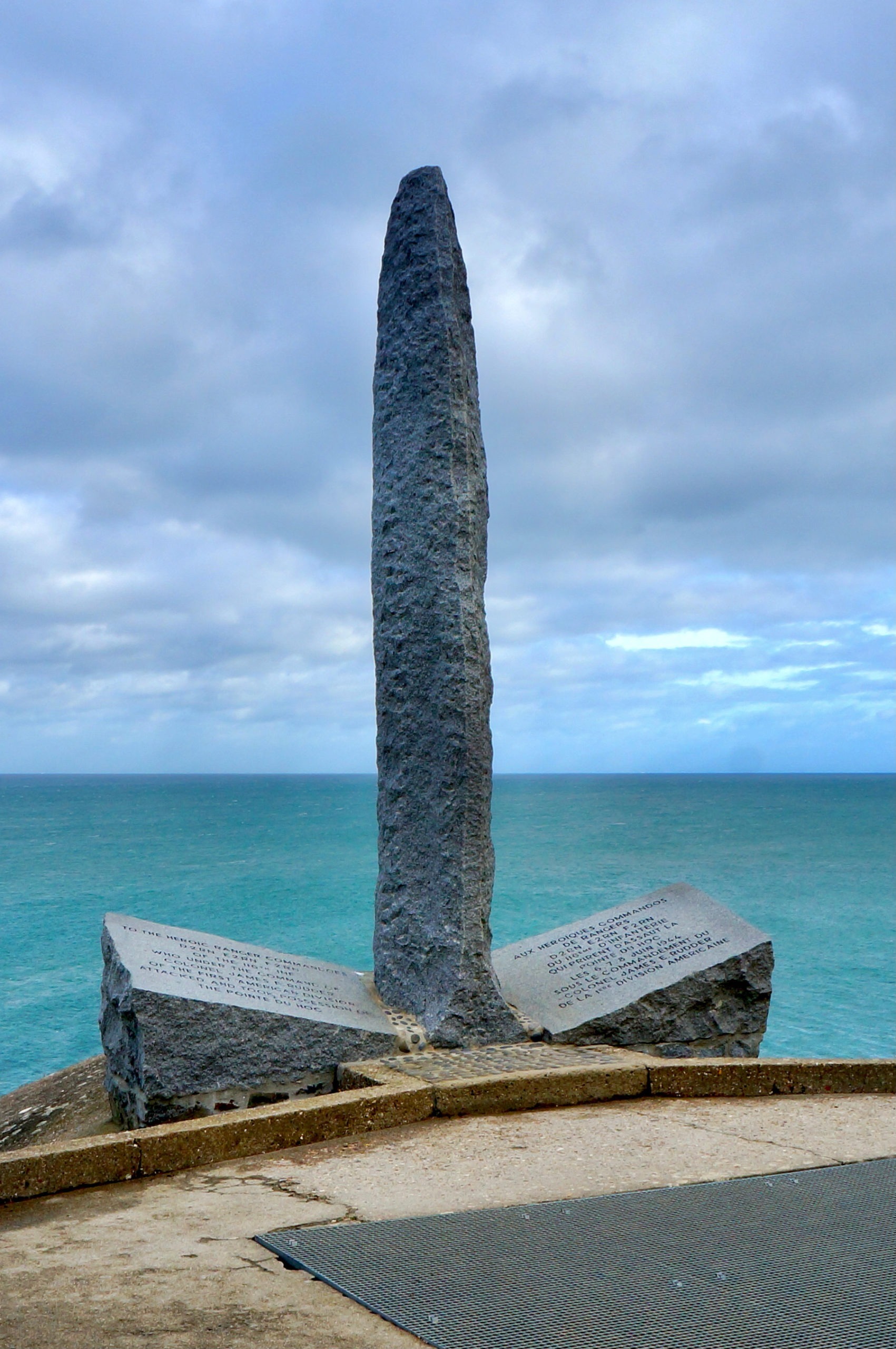
Pointe du Hoc is undoubtedly one of the most impressive World War II sites to see in Normandy. As you walk through, you’ll notice numerous bomb craters and German bunkers. Lieutenant Colonel Rudder lead 200 men from the 2nd Ranger Battalion up the 100-foot cliff to destroy a gun battery located between Utah and Omaha beaches. Upon reaching the top, the rangers discovered that the guns were already removed. They fought back counter-attacks for two days until reinforcements arrived.
La Cambe German Cemetery
La Cambe is the largest German military cemetery in Normandy. When visiting this cemetery, you’ll want to notice the somber color tones, design, and layout. It’s thought-provoking to compare it to the nearby Normandy American Cemetery.
Omaha Beach
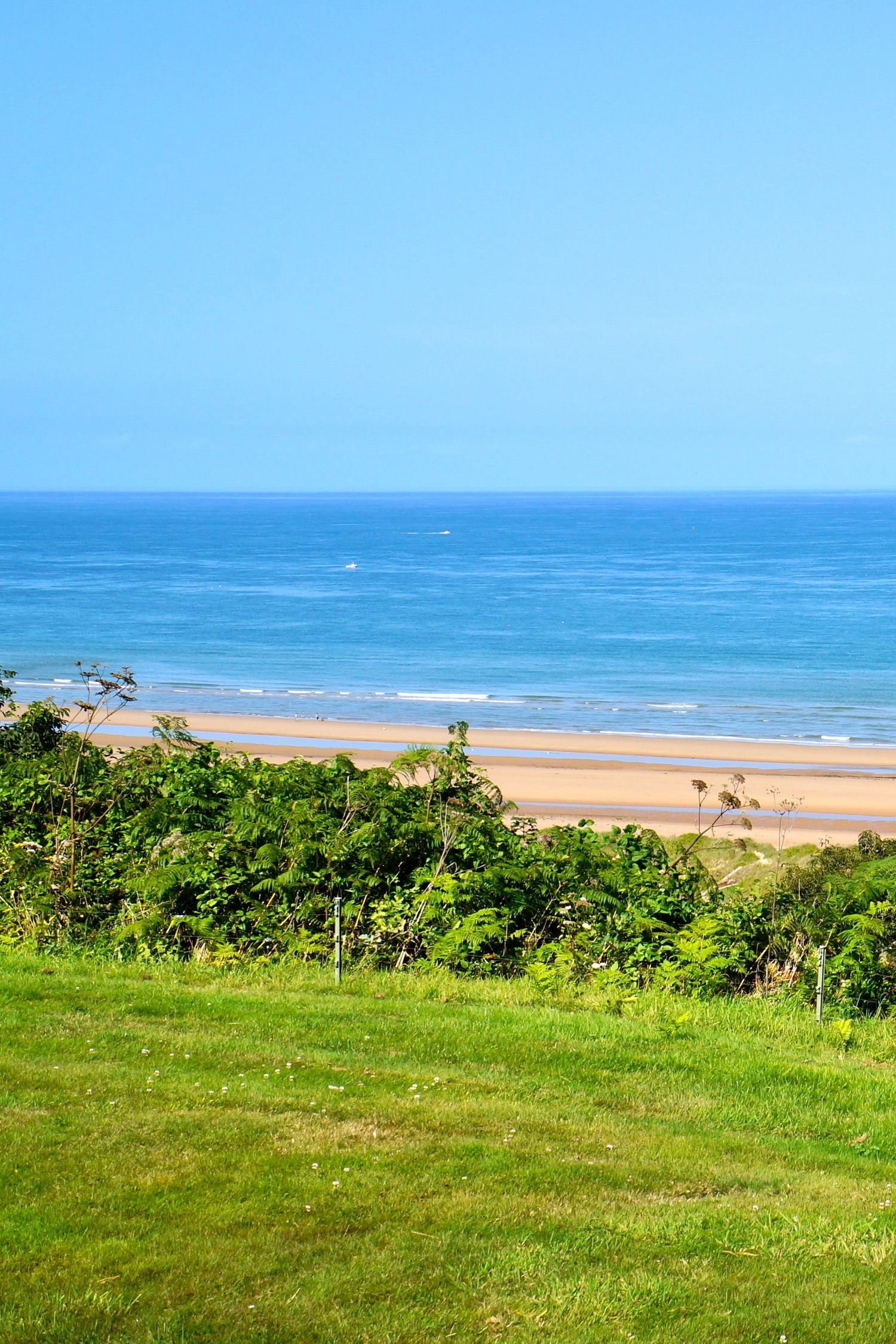
Omaha Beach is a main site for American D-Day history. On D-Day, it was the destination for over two-thirds of the seaborne troops. Many of the courageous soldiers drowned or were killed on approach. The Americans suffered over 4,000 casualties on Omaha Beach, making it the bloodiest of the D-Day landing sites.
French Side Travel’s Tours and Unique Experiences in Normandy Want to experience the World War II beaches, monuments, and memorials differently? French Side Travel can organize the perfect tour for you to see the unmissable World War II sites in Normandy. We can arrange tours in a classic Jeep, multiple day excursions to dive deeper into the history with an expert guide, day trips from Paris to see the sites from a helicopter and more. French Side Travel Tip : Weather in this part of Normandy can be unpredictable. We always recommend bringing extra layers and rain gear.
Normandy American Cemetery
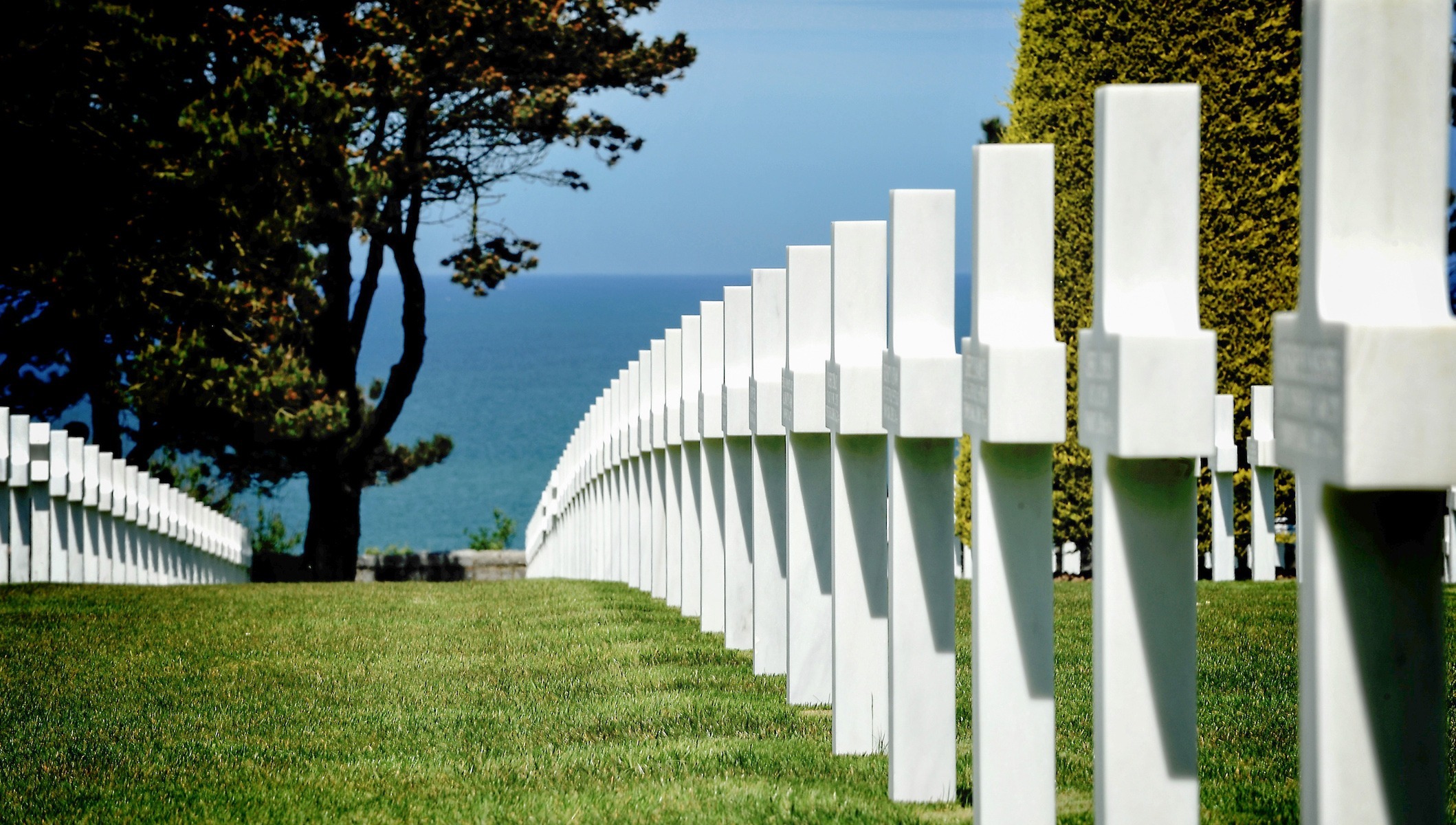
One of the most emotional World War II sites to visit is the Normandy American Cemetery. Here you’ll find crosses and Stars of David that mark the nearly 9,400 who died during the Allied Liberation of France. Three Medal of Honor recipients rest here as well as 45 sets of brothers. You’ll also find over 1,500 names carved on the walls of the Garden of the Missing.
The design of the Normandy American Cemetery is particularly powerful as the long, regular rows of headstones almost appear to rise from the water below. In the center, there is a bronze statue, “Spirit of American Youth Rising from the Waves.”
Longues-sur-Mer Battery
The German artillery battery at Longues-sur-Mer, located directly between the Gold and Omaha landing beaches, offered great positioning to oppose the D-Day landing. The immaculately preserved battery is the only place in France where you can see four original artillery guns.
Arromanches-les-Bains
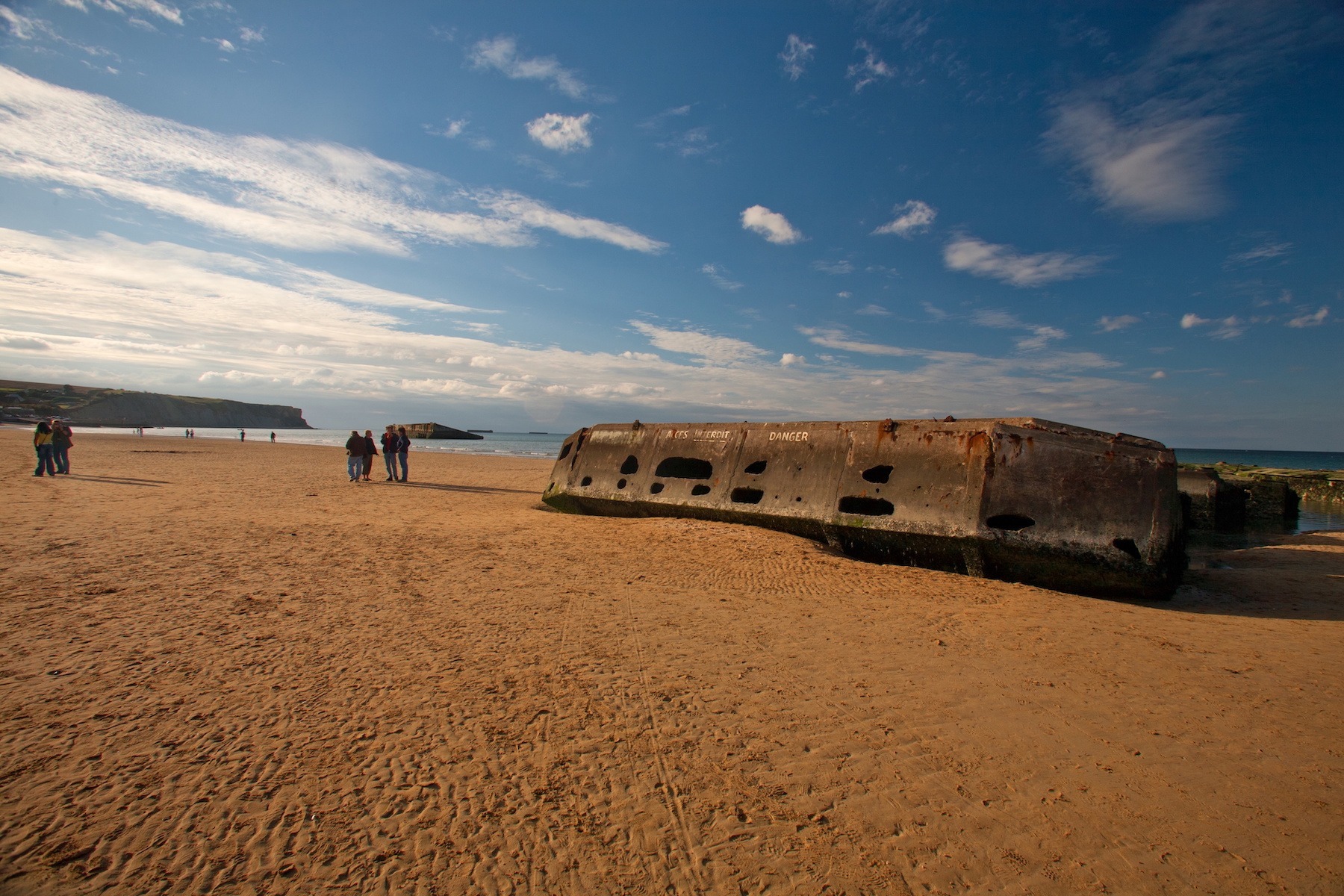
Arromanches-les-Bains is in the center of the Gold Beach landing zone. Here, the British set up Mulberry Harbor (also known as Port Winston), a man-made harbor assembled in Britain and towed across the English Channel. Made up of sunken ships, concrete caissons, and floating roadway, Mulberry Harbor was essential to the war effort. Over 10 months, over 2.5 million soldiers, 500,000 vehicles, and four million tons of supplies came through the harbor.
You’ll also find the Musée de Debarquement and Arromanches 360°, a circular cinema with archival footage from the D-Day landings.
Chateau d’Audrieu Looking for the perfect base to stay in while exploring the historical World War II sites in Normandy? Try the 18th century Château d’Audrieu, a delightful property set amongst beautiful parks and gardens. From this hotel you’ll be able to easily reach Caen, Bayeux, Mont Saint-Michel and more!
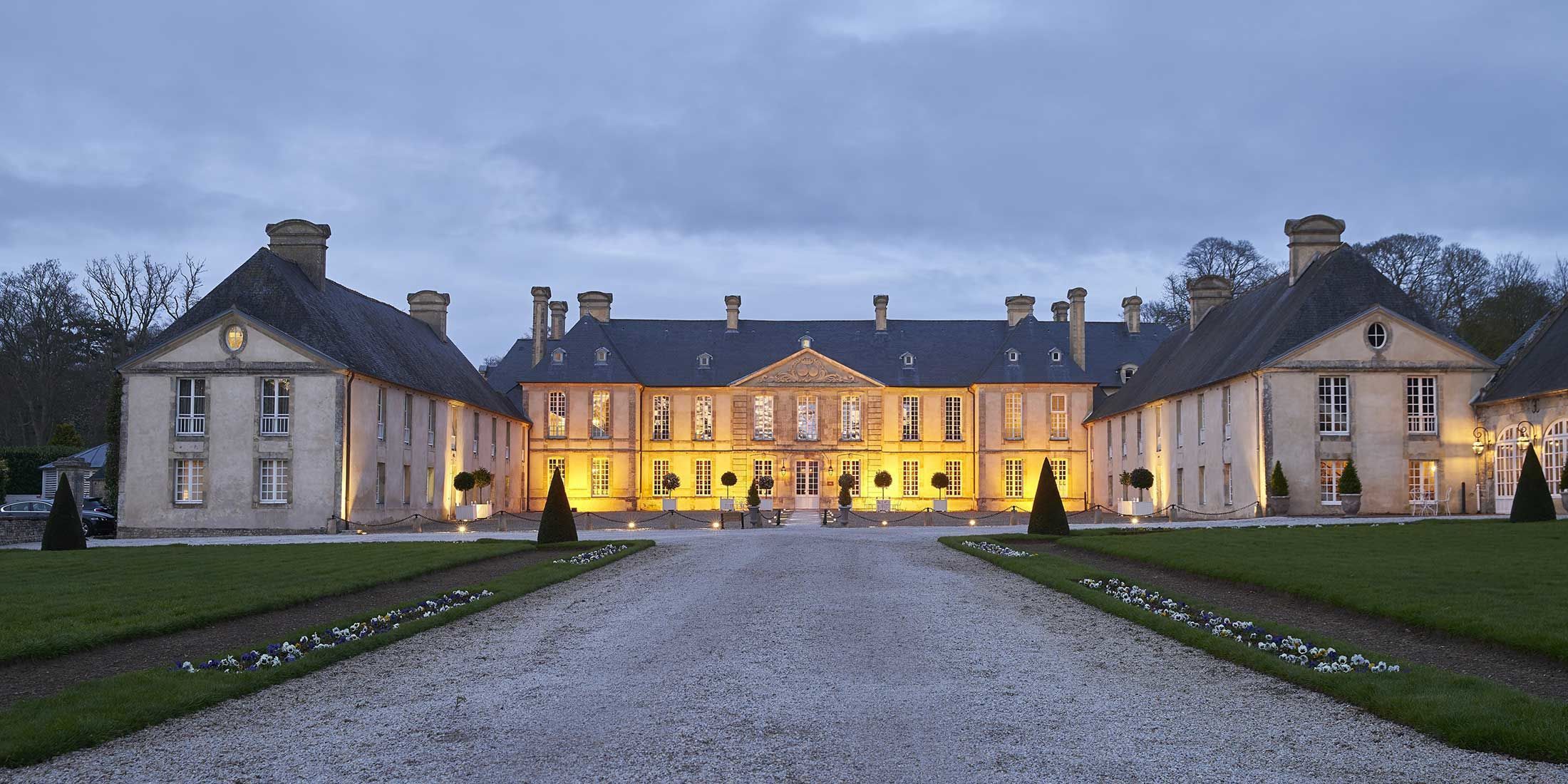
The unmissable World War II sites in Normandy will surely inspire you to spend more time in the region. Our expert travel designers are available to suggest the perfect extension to your Normandy trip whether you want to focus on the Best of Normandy , a Foodie Roadtrip , or the Best of Normandy by Train . To extend your trip even longer, or start dreaming about a future trip to France, check out our sample trips focused on food and wine , history and culture , adventure , and romance and scenery . There’s truly something for everyone in France!
Need some help planning your trip?
This site is protected by reCAPTCHA and the Google Privacy Policy and Terms of Service apply.
- French Alps
- French Riviera
- Loire Valley
- Southern France
- Family-Friendly
- Group Travel
- History & Culture
- Honeymoons & Romance
- Self-Drive Tours
- Skiing & Adventure
- Wine & Food
- Client Testimonials
- Our Travel Designer
- Legal Notice
- Customize Your Trip
Meet the Team
Exploring World War II Sites in Italy
Where to Remember the Great War in the Italian Countryside
:max_bytes(150000):strip_icc():format(webp)/martha_bio-56a3c8865f9b58b7d0d3b5fe.jpg)
Italy has many historic monuments, battlegrounds, and museums related to World War II, some in lovely settings that belie the bloody history of the worldwide conflict. Here are a few.
Abbey of Montecassino
One of the most popular sites to visit is the reconstructed Abbey of Montecassino , the site of a famous World War II battle and one of Europe's oldest monasteries. Perched on a mountaintop between Rome and Naples, the Abbey has great views and is very interesting to explore. Allow at least a couple of hours to see everything.
There is also a small War Museum in the town of Cassino, below Montecassino and another on the coast, the Anzio Beachhead Museum , in the center of Anzio near the train station.
Cassino and Florence American Cemeteries
During both World War I and II, thousands of Americans died in European battles. Italy has two large American cemeteries that can be visited. The Sicily-Rome Cemetery at Nettuno is south of Rome (see southern Lazio map ). There are 7,861 graves of American soldiers and 3,095 names of the missing inscribed on the chapel walls. Nettuno can be reached by train and from there it is about a 10-minute walk or a short taxi ride. Also in Nettuno is the Museum of the Landing .
The Florence American Cemetery , located on the Via Cassia just south of Florence, can easily be reached by bus with a stop near the front gate. More than 4,000 identified soldiers were buried at the Florence American Cemetery and there is also s a memorial to missing soldiers with 1,409 names.
Both cemeteries are open daily from 9-5 and closed on December 25 and January 1. A staff member is available in the visitor building to escort relatives to grave sites and there is a search box on the website with the names of those buried or listed on the memorials.
Mausoleum of the 40 Martyrs
This modern memorial chapel and garden called "Mausoleo dei 40 Martiri" in Italian, is located in the town of Gubbio, in the Umbria region of Italy. It memorializes the location where 40 Italian villagers were massacred by retreating German troops on June 22, 1944.
Forty men and women aged 17 to 61 were killed and placed in a mass grave, but despite decades of investigation, authorities have been unable to take the responsible persons to trial: all of the German officers allegedly involved were dead by 2001. The white mausoleum contains marble plaques on the sarcophagi for each of the individuals, some with photographs. The adjacent garden incorporates a wall where the martyrs were shot and protects the original mass grave locations, and forty cypresses line the avenue up to the monument.
Yearly events remembering the massacre are held in June of each year. Open year-round.
Tempio Della Fraternità di Cella
The Temple of Fraternity at Cella is a Roman Catholic sanctuary in the town of Varzi, in the Lombardy region. It was constructed in the 1950s by Don Adamo Accosa, out of the broken remains of churches throughout the world which had been destroyed in the war. His first ventures were helped by Bishop Angelo Roncalli, who later became Pope John XXIII and sent the first stone to Accosa from an altar of a church near Coutances, near Normandy in France.
Other pieces include the baptismal font was built from the turret of the Naval battleship Andrea Doria; the pulpit is made from two British ships who participated in the Battle of Normandy. Stones were sent from all the major conflict sites: Berlin, London, Dresden, Warsaw, Montecassino, El Alamein, Hiroshima, and Nagasaki.
A Travel Guide Recommendation
If you're interested in visiting a few of these sites, the book A Travel Guide to World War II Sites in Italy makes a good companion. Available both on Kindle or in paperback, the book has details about visiting many sites with visitor information for each including how to get there, hours, and what to see. The book also has maps and photos taken in Italy during the war.
Liberation Day Observances in Italy
8 Best Things to Do in Vatican City
Top 15 Monuments and Historic Sites in Paris
Visiting Montecassino Abbey
The 14 Best Day Trips from Rome
Top Normandy D-Day Landing Beaches and World War II Sites
20 Best Things to Do in Florence, Italy
The 26 Best Washington, D.C. Monuments and Memorials
Monasteries to Visit in Italy
Moscow - Russian Rivers and Waterways Port of Call
Lazio Region Travel Maps
A Tour of World War I Memorials in France
World War I Meuse-Argonne American Military Cemetery
Visit 8 United States War Memorials That Honor the Fallen
North Coast of France: The Ultimate Road Trip From Dieppe to Calais
Asia's Arlington: The Manila American Cemetery in the Philippines
Skip to Main Content of WWII
Victory in the pacific tour.
This unique, inaugural journey from The National WWII Museum takes guests to the sites of the Pacific war, from Pearl Harbor to Iwo Jima and more. Travel luxuriously while experiencing history up close, with help from renowned historians and eyewitnesses to World War II.
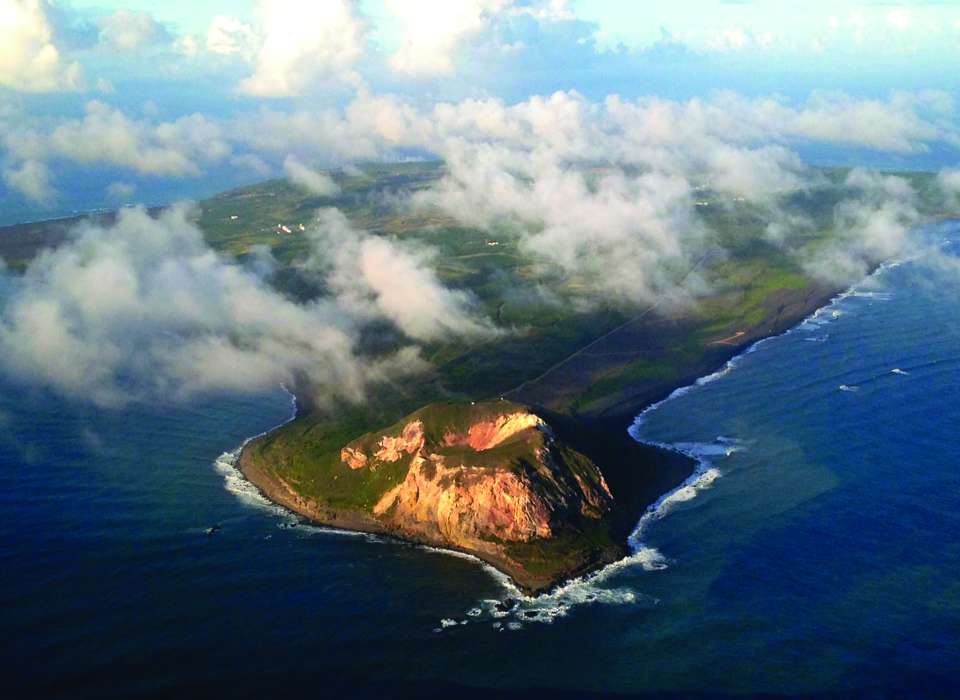
Introducing The National WWII Museum’s Tour of the Pacific Theater. Take a journey that centers around the story of the Americans who forged a road to Tokyo through courage, ingenuity, and sacrifice, and ended the war, at last. Retrace the grueling trail that led from Pearl Harbor to Tokyo Bay, explore the evolving strategy for fighting relentless Japanese forces in Asia and the Pacific, and examine cultural differences, logistical challenges, and the staggering range of extreme conditions that confronted American military forces.
Steeped in WWII history, the present-day serenity found at these stunning locations is a stark contrast to ferocious fighting that once took place here. Breathtaking landscapes with secluded volcanic mountain peaks, clear waters surrounding coral fringed islets, and grottos filled with sea turtles—discover the Marianas with The National WWII Museum Educational Travel program and revel in the hidden treasures of these Pacific islands. From the blazing white shorelines of Saipan to the black volcanic ash on Iwo Jima’s landing beaches, walk in the everlasting footsteps of the servicemen who gave their all for victory.
Explore Further
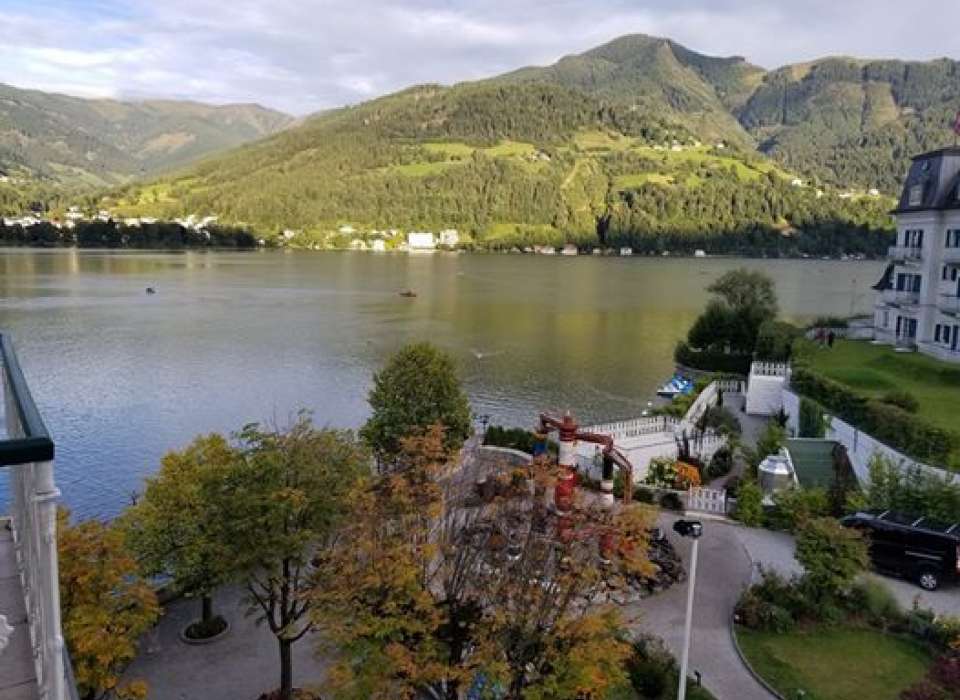
On the Road with The National WWII Museum
There is nothing like seeing the sights of World War II firsthand.
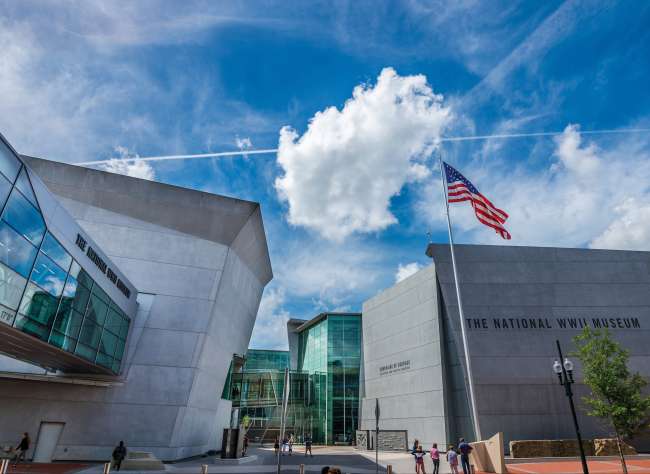
Experience the Victory
Travel to The National WWII Museum in New Orleans to explore, remember, and reflect on World War II through exclusive access to the Museum’s campus.
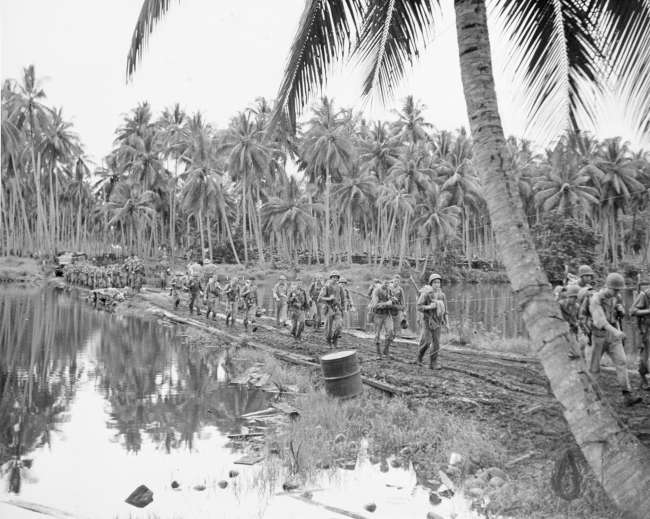
Victory in the Pacific: Battle of Guadalcanal
With its position in the South Pacific, Guadalcanal was an ideal location for a Japanese airfield that could threaten vital US sea lanes to Australia.
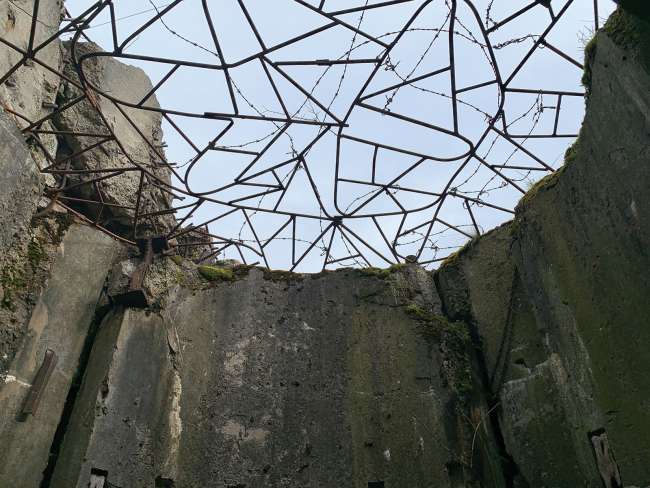
Megastructures: Forced Labor and Massive Works in the Third Reich
Join Dr. Alexandra Richie on a poignant tour of Poland to discover the remnants of the vast construction projects initiated by the Third Reich and hear the stories of those who were forced to build them.
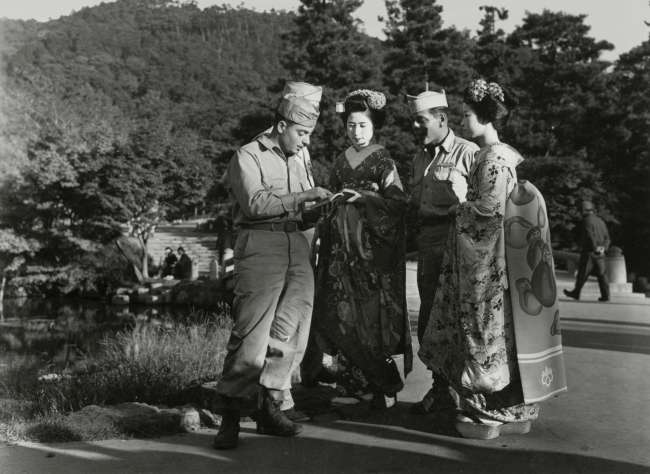
Victory in the Pacific: Japan & Okinawa
The National WWII Museum’s newest tour brings you to Japan, where World War II ultimately ended. Beginning in Tokyo, guests will investigate the Japanese perspective on the end of the war at the Yushukan War Memorial Museum and also explore the Japanese civilian experience at the National Showa Memorial Museum.
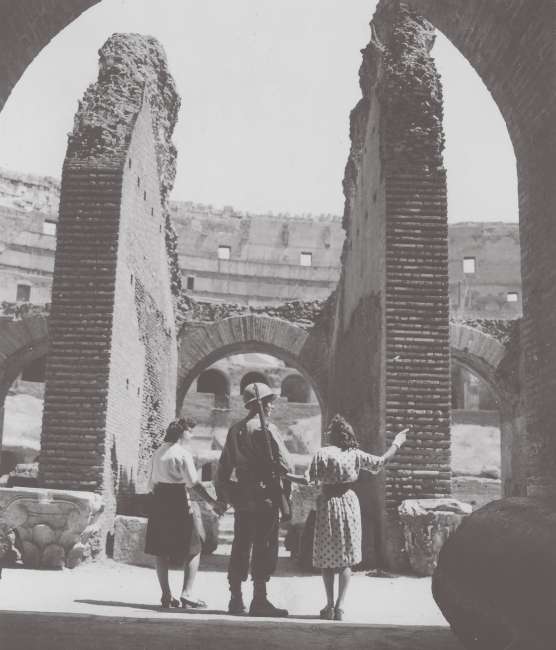
Italy: 1944
Join The National WWII Museum Educational Travel Program on this Italian journey of “Mud, Mountains, and Mules,” with all of its sacrifices, heartbreak, and triumphs. With exquisite hotels in Rome and Florence and expert battlefield guides throughout, you will experience the best that Italy has to offer.
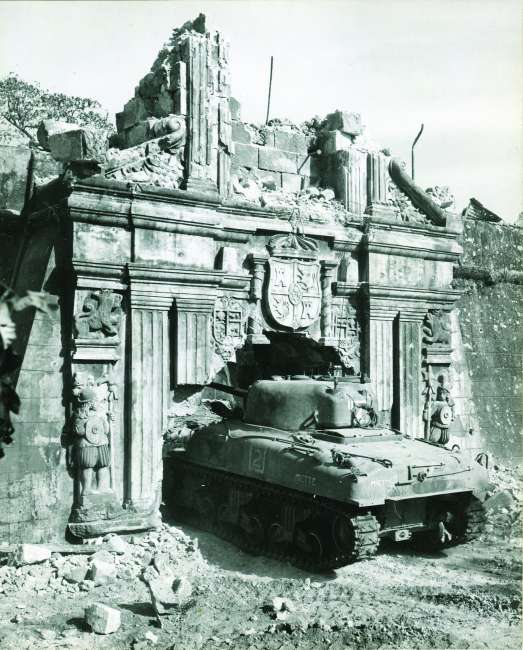
World War II in the Philippines
This fascinating journey will begin in the lush province of Bataan, where tour participants will walk the first kilometer of the Death March and visit the remains of the prisoner of war camp at Cabanatuan, which was liberated by American Army Rangers and Filipino Scouts on the eve of the Battle of Manila.
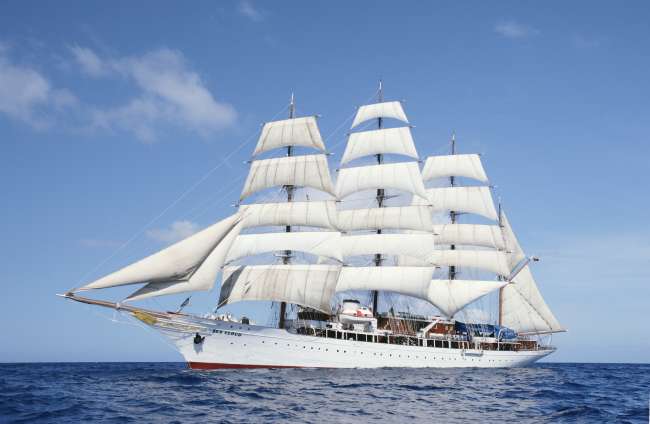
Philosophy and War: World War II in the Balkans
Aboard the iconic Sea Cloud Featuring Robert M. Citino, PhD
The all-new land-and-cruise tour Philosophy and War: World War II in the Balkans begins with two nights in Athens to explore the German occupation of Greece and the civil war that followed.

IMAGES
VIDEO
COMMENTS
So for all the history buffs out there, here are 15 sites significant to the Second World War that, ranging from inspirational to overwhelming, are worth visiting in Europe: 15. Sachsenhausen Concentration Camp, Germany. This work camp just outside of Berlin is found about three km from the location of the first ever Nazi concentration camp ...
Here are 10 of the world's most significant World War Two sites, where visitors can delve into the history of the conflict. Image Credit: DeFacto / CC. 1. Bletchley Park. Bletchley Park is a country estate fifty miles north of London. In 1938 it was converted from a residential house into a British intelligence centre.
Colleville-sur-Mer - France. You will be moved to see the 10,000 crosses and thankful to the soldiers who came from the other side of the world to fight with us for ideas of liberty and against the nazi dictatorship that threatened Europe. The American cemetery of Colleville-sur-Mer was offered to the USA.
Normandy Beach - Normandy, France. Normandy Beach, where the infamous D-Day invasion took place, is easily one of the most significant World War II sites. The objective of the mission, known as Operation Neptune, was to open a second front opposite the Russians in the East to put more pressure on the Nazi German army.
Since the end of the Second World War the German government, the Bavarian state, and the Nuremberg city authorities have all grappled with the challenge of what to do about these remaining infrastructures from the Nazi past. Visit information: Address: Bayernstraße 110, 90478 Nürnberg, Germany. Hours: 9AM-6PM.
Auschwitz was the largest Nazi concentration camp and extermination site. Here, 1.1 million people were murdered between 1940 and 1945-around 1 million of them were Jews. Poles, the Roma people ...
4. Site Of Hitler's Bunker. When visiting Berlin, the site of Hitler's bunker is a must-see.In the final days of the war in Europe, Adolf Hitler, his mistress Eva Braun, and members of the Nazi inner circle retreated to an underground bunker in Berlin. The former air raid shelter served as their final headquarters.
The Battle of Berlin: Road to victory in Europe. On May 7 th 1945, World War II ended in Europe with the unconditional surrender of Nazi Germany. Visit the Humboldthain Flak Tower, the last remaining anti-aircraft tower that was built to defend Berlin. Walk through the blocks of the impressive Holocaust Memorial and take a trip to Sachsenhausen ...
Imperial War Museum. Even in a teeming metropolis like London, you can still see the scars of the war. On the Victoria & Albert Museum, for example, shrapnel from the Blitz took big bites out of the stone walls — the marks are carefully preserved and annotated with a plaque. But the inarguable highlight of any World War II-themed trip to ...
4. Caen Memorial Museum, Caen. Cross the Pegasus Bridge and head to the northern edge of the city of Caen to visit the Caen Memorial Museum. The recommended starting point for your visit leads down a dark spiraling walkway that details the lingering turmoil from World War I that led to World War II.
Hi, I'm Ashley! I'm a full-time travel writer, tour guide, and World War II historian based in Boston, MA who's traveled to 32 countries on 5 continents. I formed Destination: WWII from a desire to encourage and help travelers visit WWII sites around the world. Learn more.
11 Day Battlefield Tour of UK, Belgium and France. Travel to the front lines of Europe, where brave soldiers once fought for freedom. On this epic battlefield tour through the countryside of Britain, Belgium and France, you'll explore the tragedy and triumph of two World Wars. Looking to book in a group of 9 or more?
Suggested Read: 6 Most Romantic Places In Central Europe For Couples. 4. Dachau Camp, Munich. Image Source. Dachau is a popular medieval town as well as a residential area in north-west zone of Munich that houses one of the memorable World War 2 sites in Europe of the Dachau Concentration Camp.
10: Anhalter Bahnhof. A relatively hidden site, Anhalter Bahnhof is one of the best places to get up close to the ruins of Hitler's Third Reich. Constructed in 1841, Anhalter bahnhof was Berlin's largest and most opulent train station. With 44,000 passengers passing through the station each day.
Reichstag Building. The Reichstag Building has ties to World War II and the Cold War. The Reichstag Building is the current seat of the German Parliament, and it's one of the best World War II and the Cold War sites in Berlin. It was used by the German government until 1933 when a fire greatly damaged the building.
5. Imperial War Museum. The Imperial War Museum is dedicated to exploring worldwide conflicts throughout history. The exhibitions in the London Imperial War Museum cover, amongst other things, different aspects of the First and Second World Wars including military history, the Holocaust, women's roles in the conflicts, wartime artwork and the ...
This was the ceremonial recognition of complete defeat and victory over Hilter's regime. The Museum Berlin-Karlshorst (formerly called the German Russian Museum) isn't so centrally located, but it's a significant place to visit for World War II history in Berlin. Location: Zwieseler Str. 4, 10318 Berlin.
2. The Liberation Museum and the Ghetto of Rome. The Great Synagogue of Rome on the river Tiber. Every corner of Rome is a window on a different time o f history: the years of World War II left deep scars, both in the urban planning and in the soul of the Capital.
10. Hel. The Battle of Hel was one of the longest battles in Poland at the start of WWII. At Poland's naval site, construction was still being undertaken when war broke out. Germany attacked by air, and while 2,800 soldiers fought bravely to stave off the enemy, Poland capitulated just 20 days later.
Pointe du Hoc. Pointe du Hoc is undoubtedly one of the most impressive World War II sites to see in Normandy. As you walk through, you'll notice numerous bomb craters and German bunkers. Lieutenant Colonel Rudder lead 200 men from the 2nd Ranger Battalion up the 100-foot cliff to destroy a gun battery located between Utah and Omaha beaches.
Abbey of Montecassino. One of the most popular sites to visit is the reconstructed Abbey of Montecassino, the site of a famous World War II battle and one of Europe's oldest monasteries. Perched on a mountaintop between Rome and Naples, the Abbey has great views and is very interesting to explore. Allow at least a couple of hours to see everything.
This unique, inaugural journey from The National WWII Museum takes guests to the sites of the Pacific war, from Pearl Harbor to Iwo Jima and more. Travel luxuriously while experiencing history up close, with help from renowned historians and eyewitnesses to World War II. Introducing The National WWII Museum's Tour of the Pacific Theater.